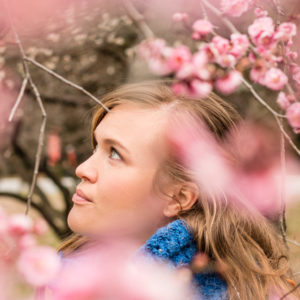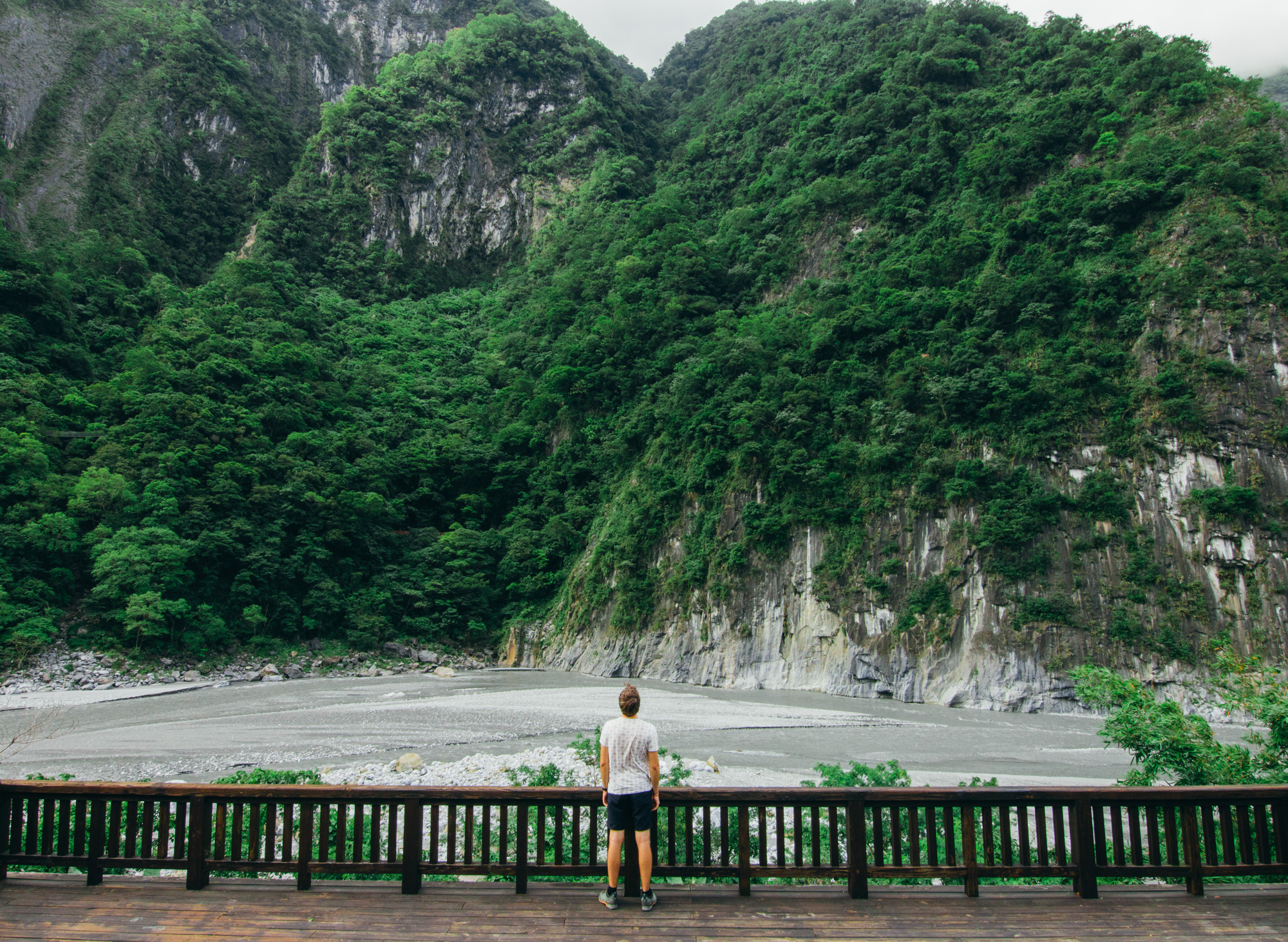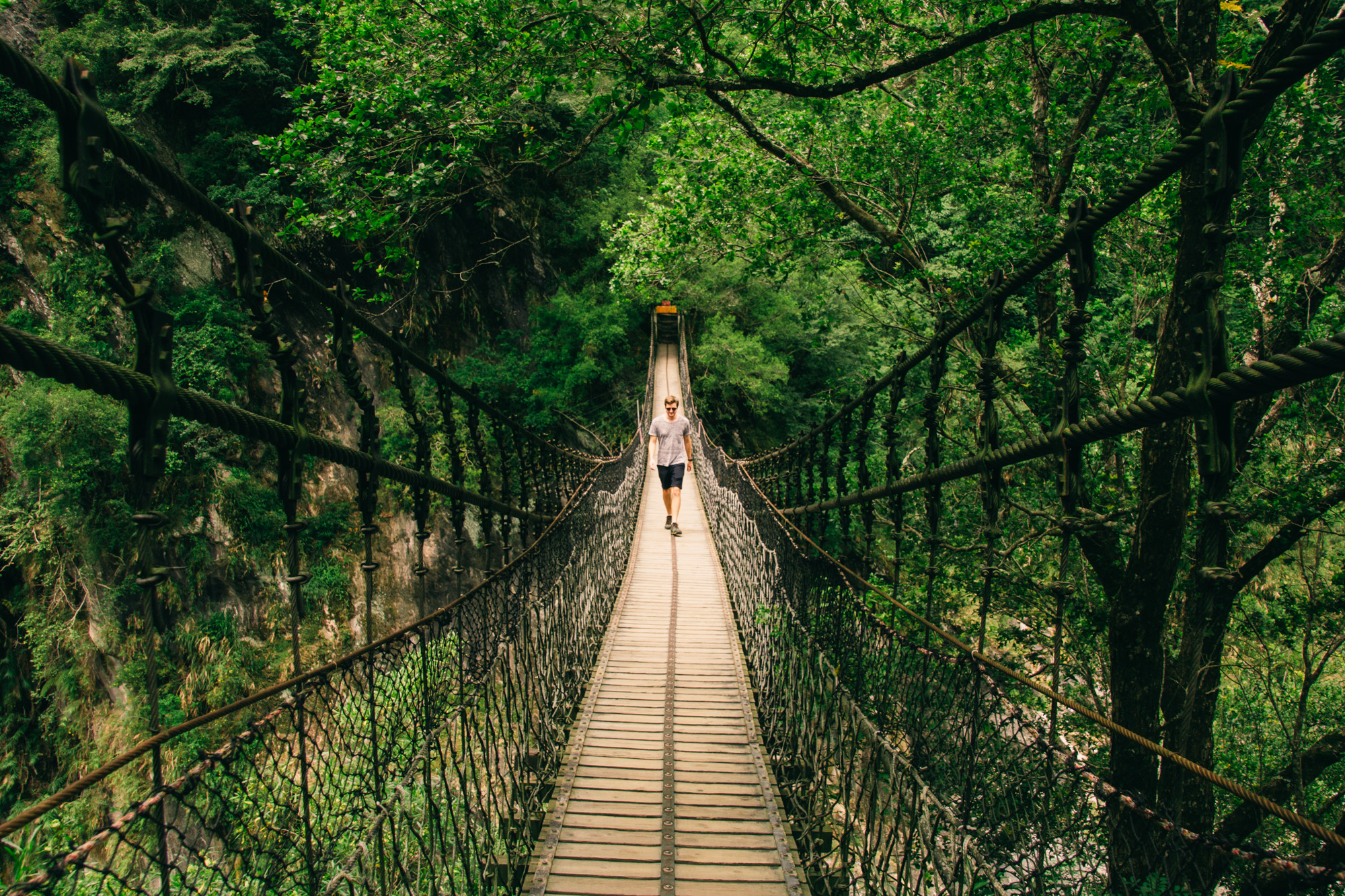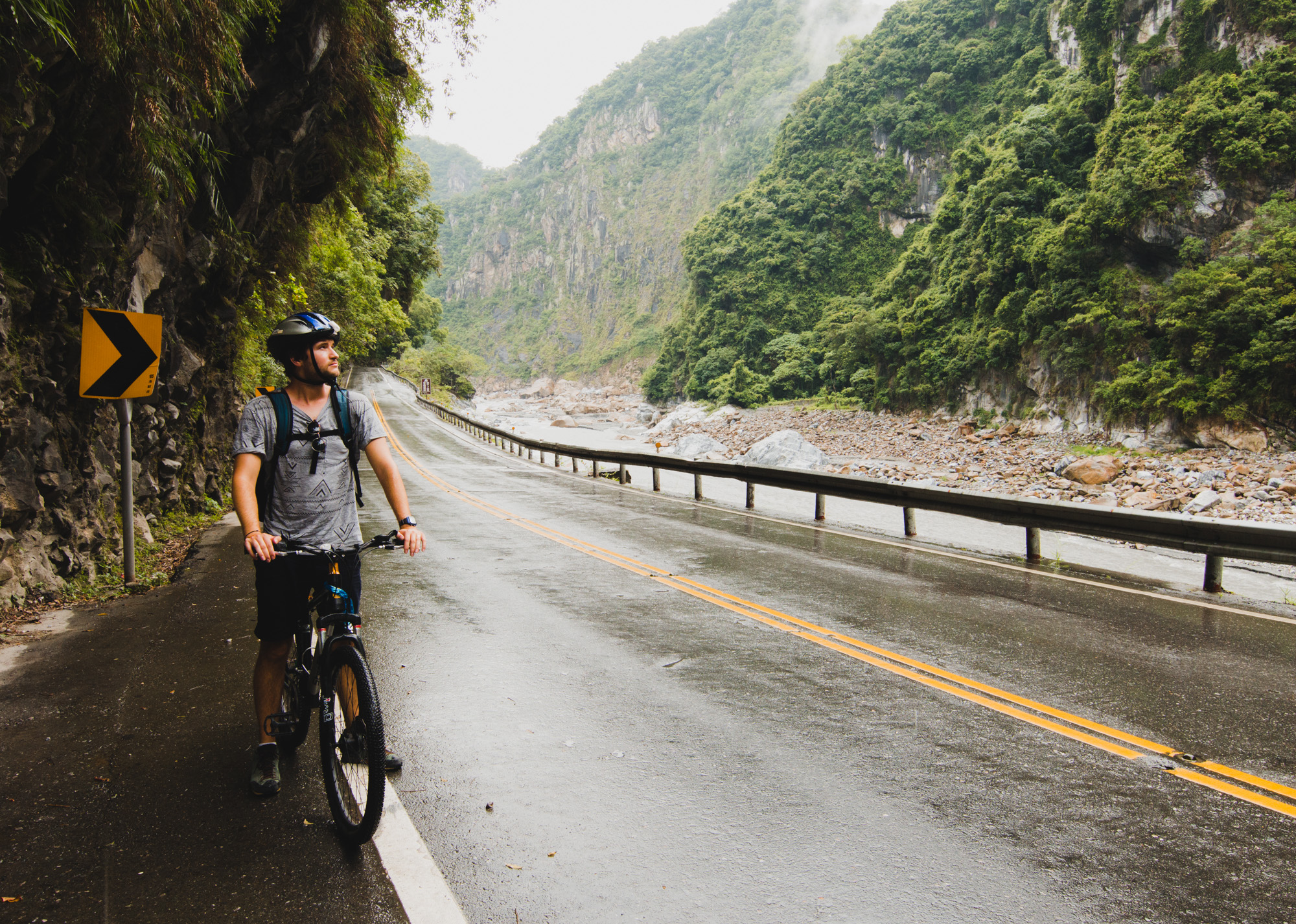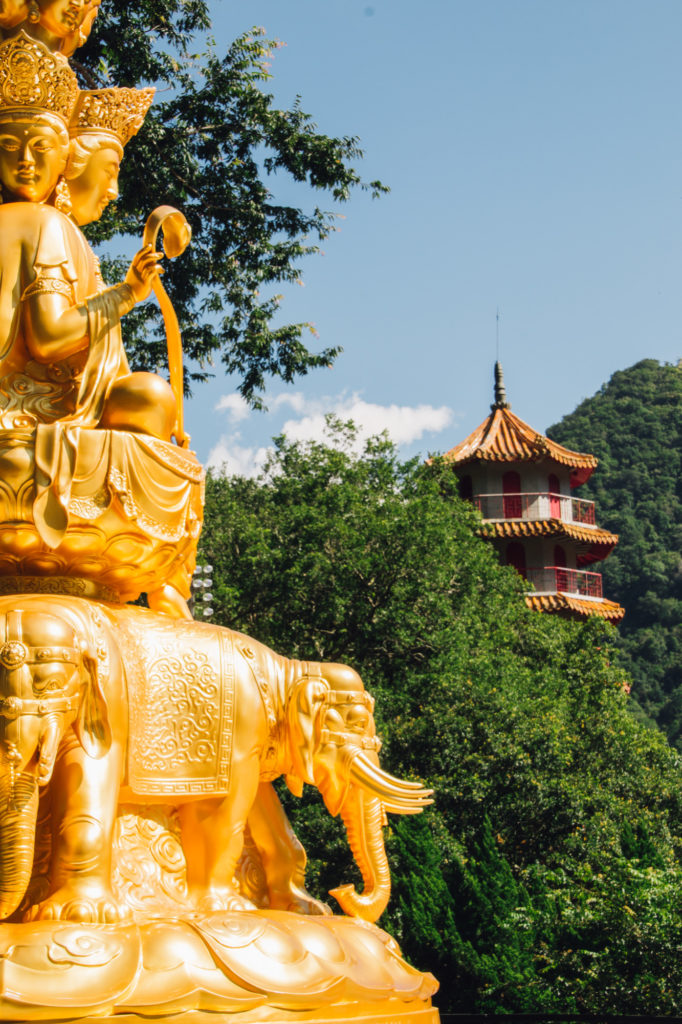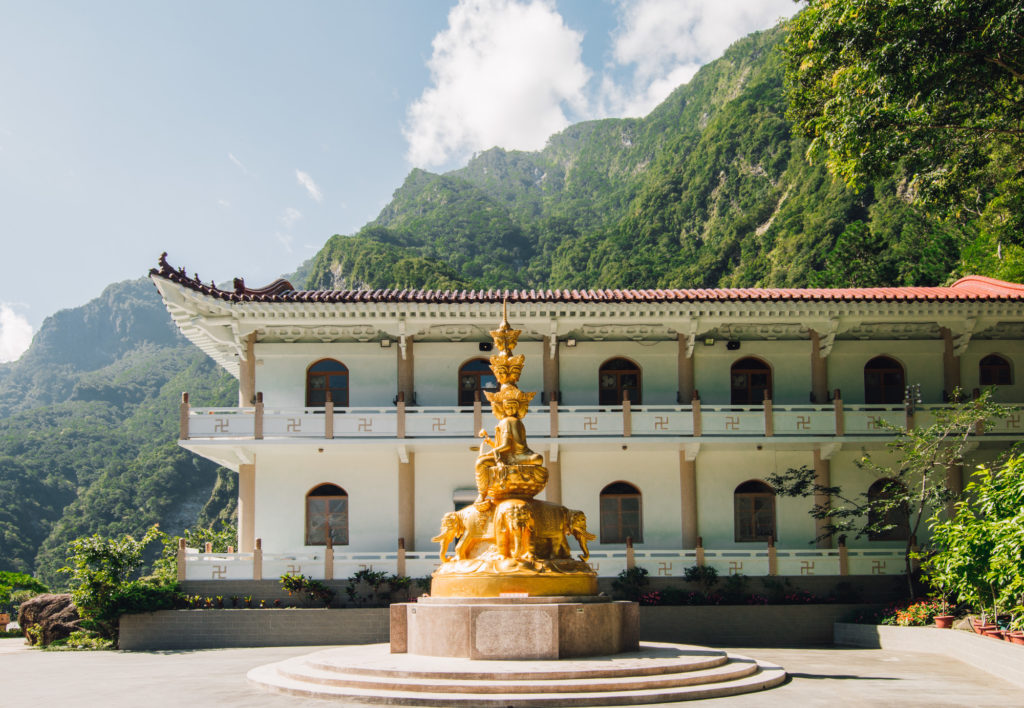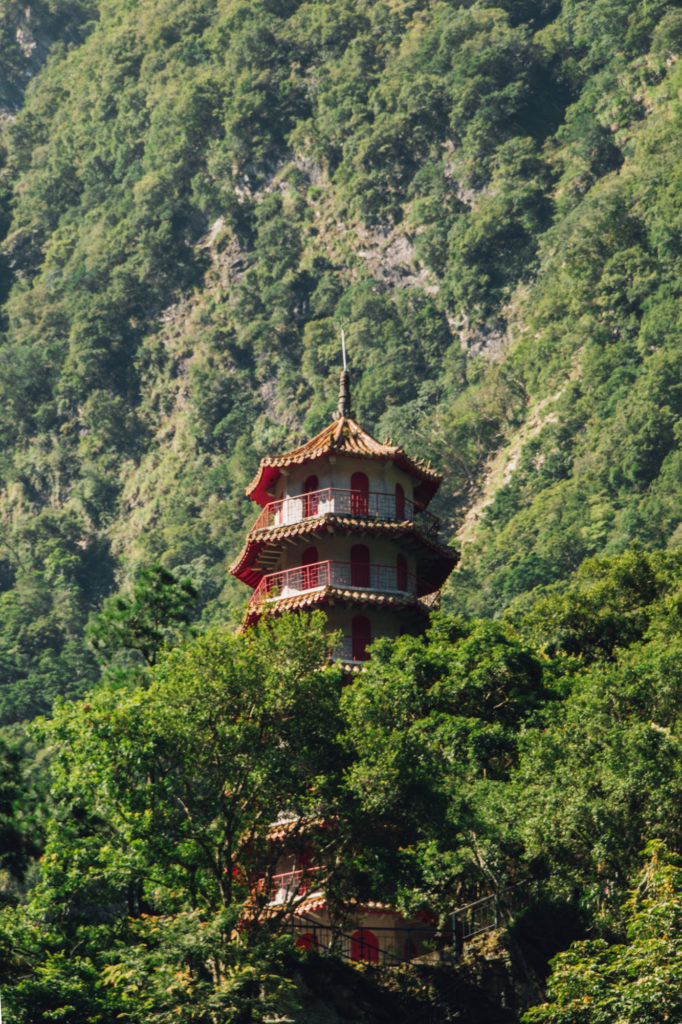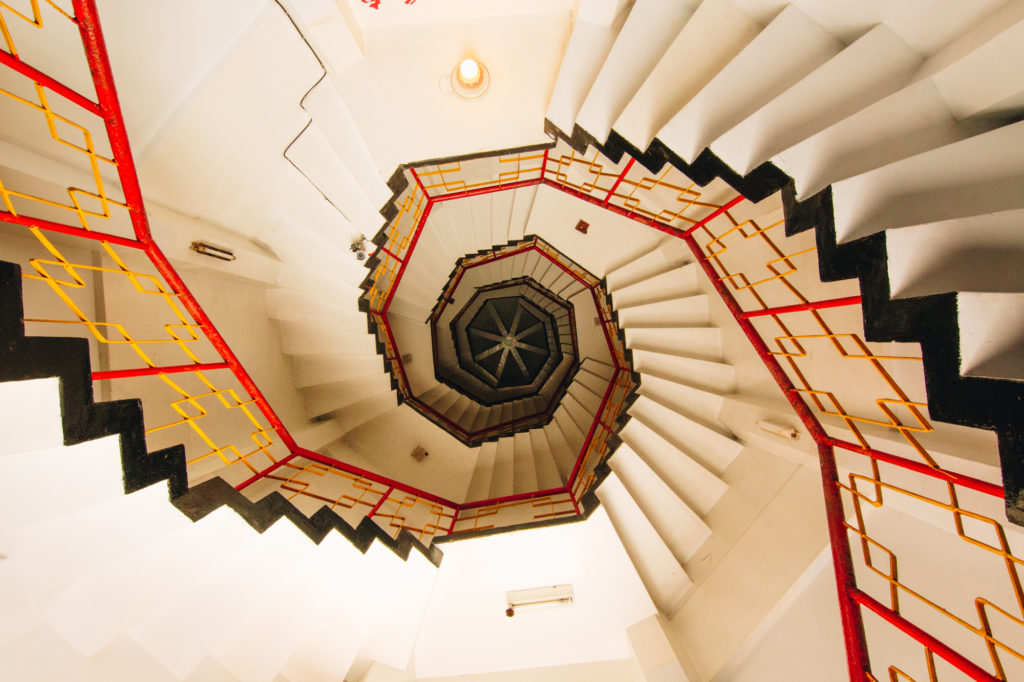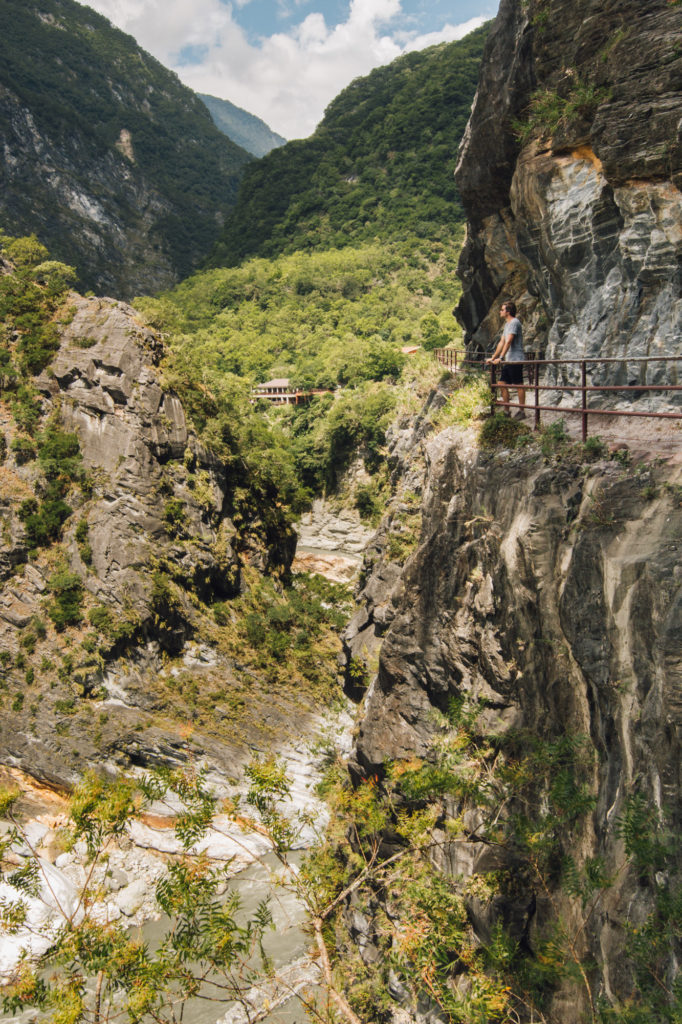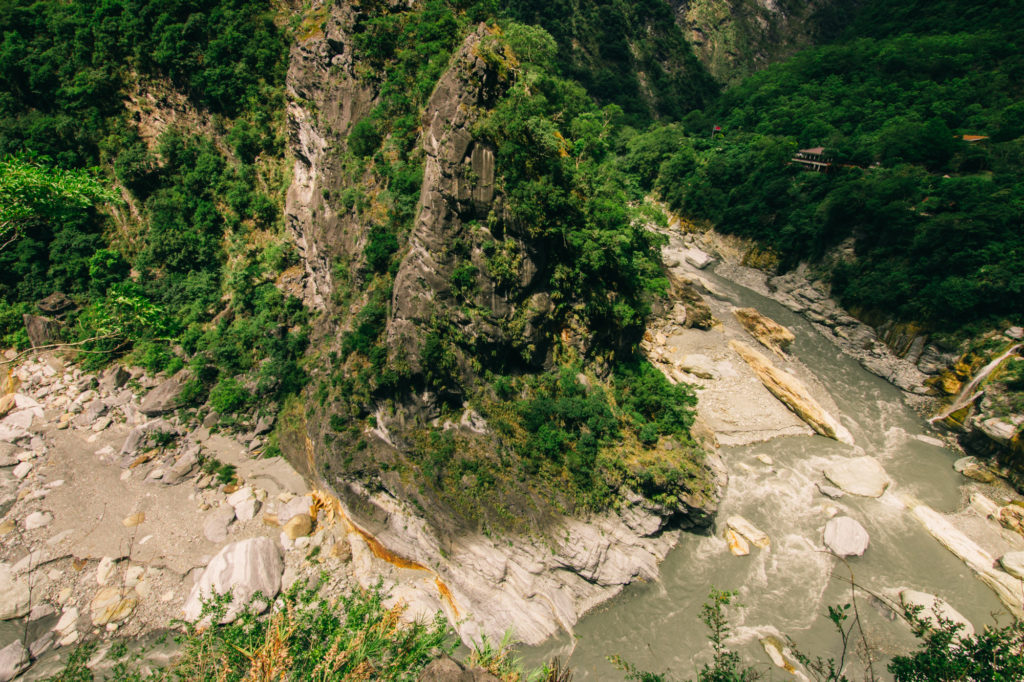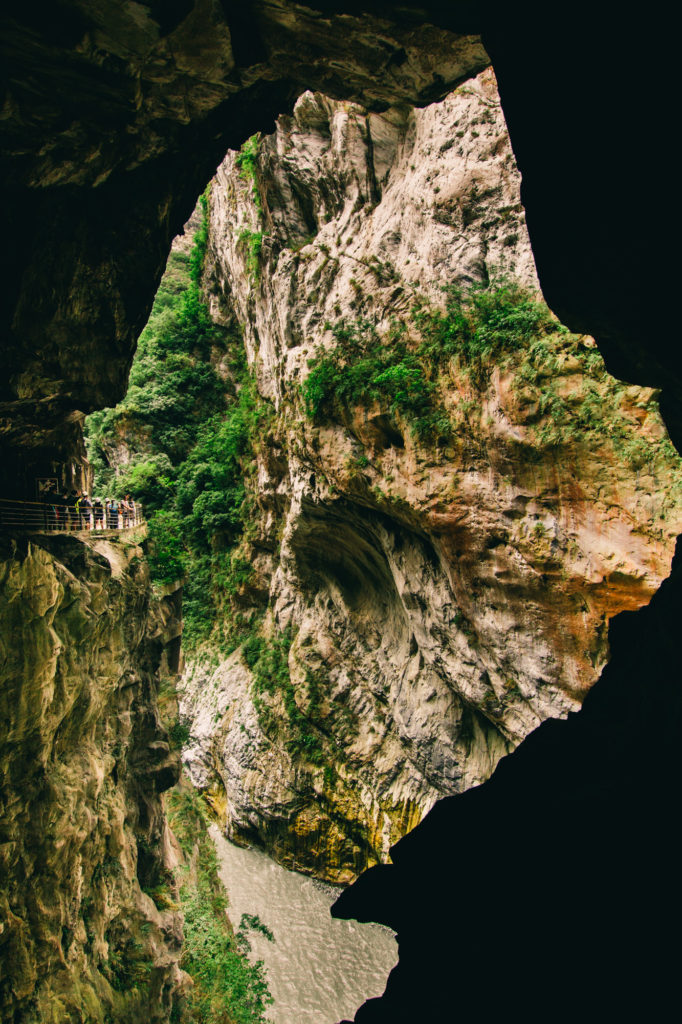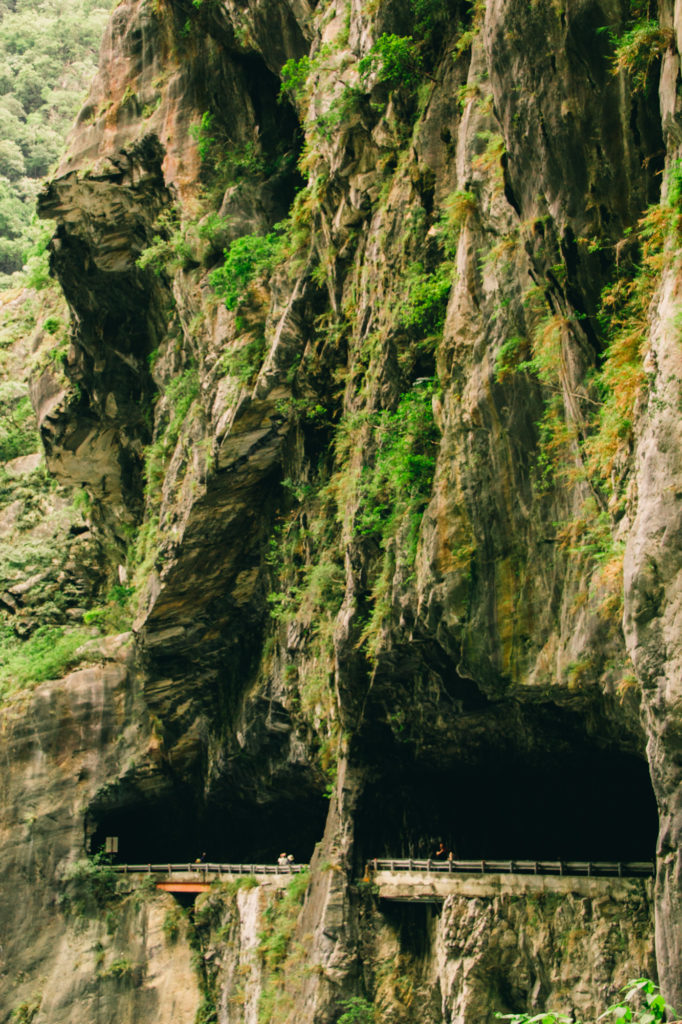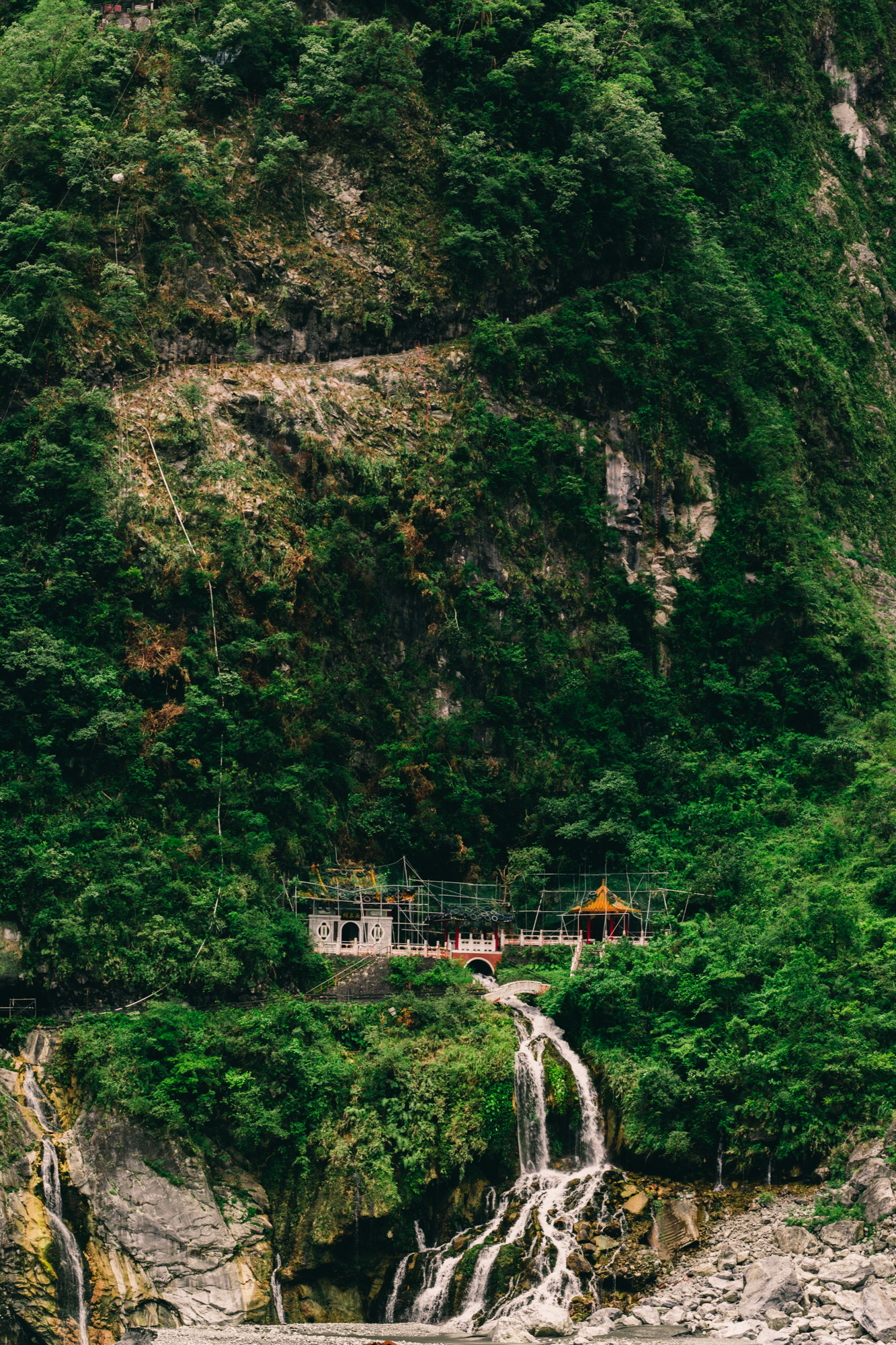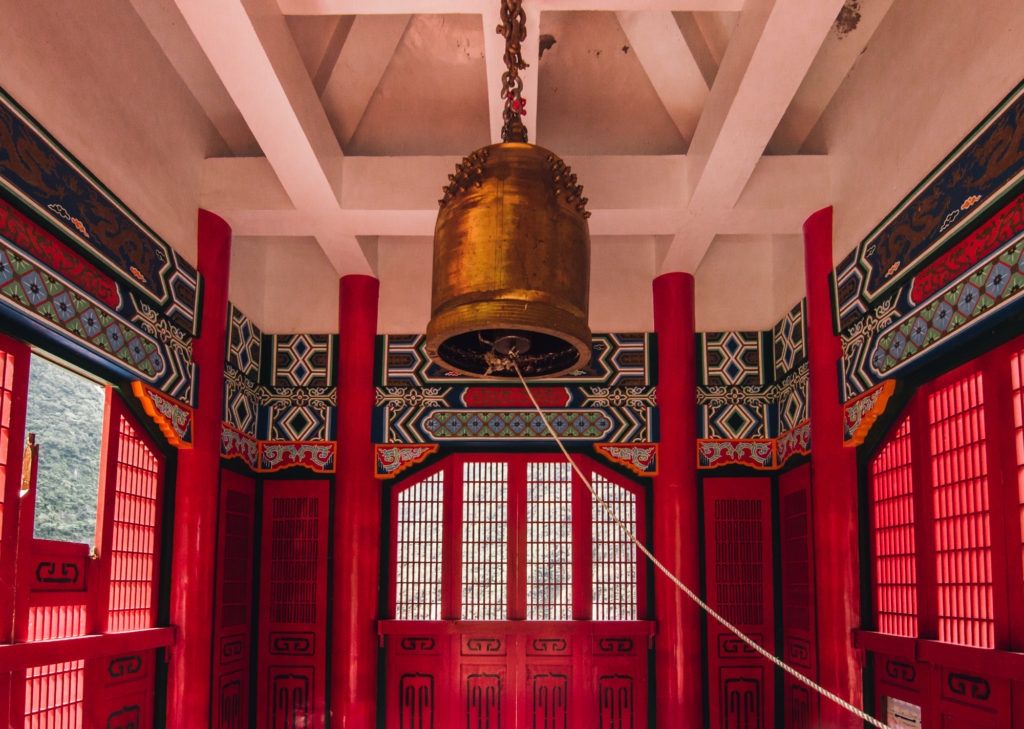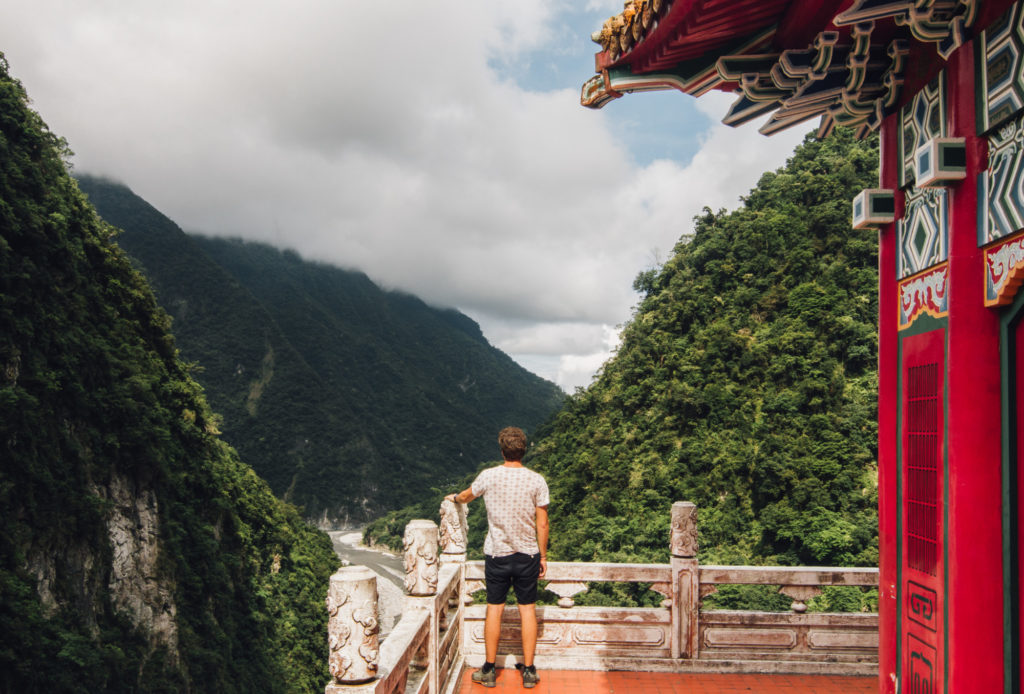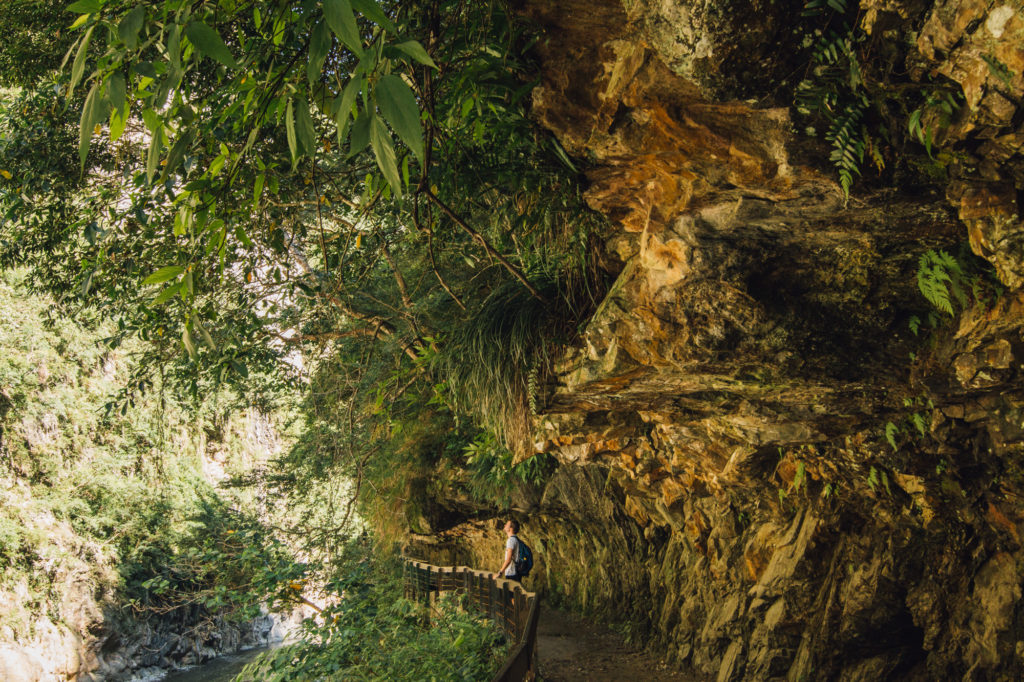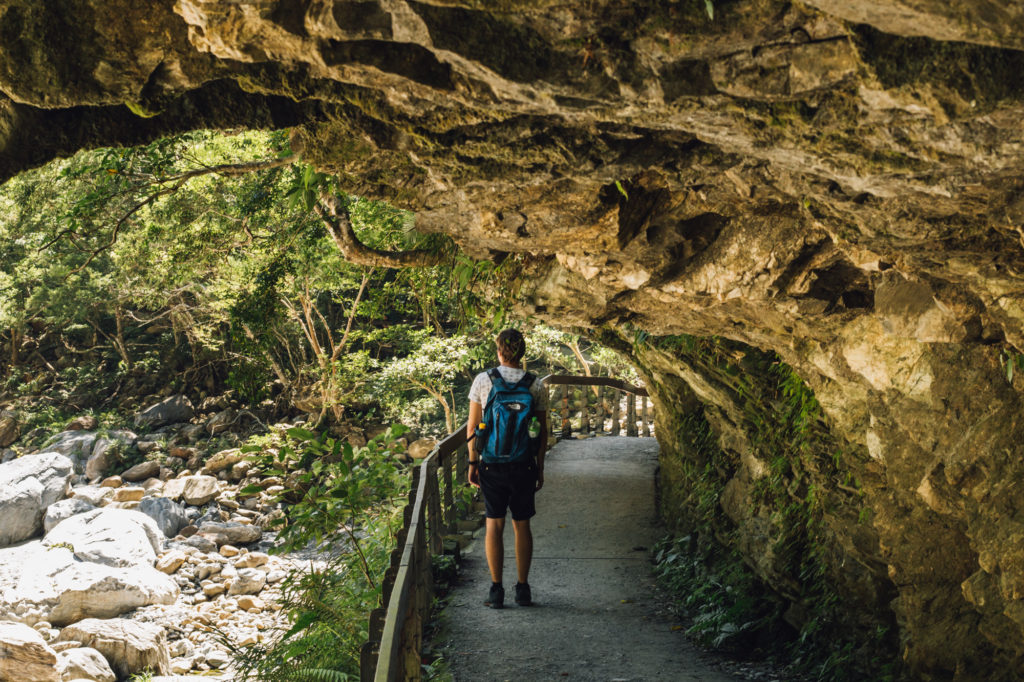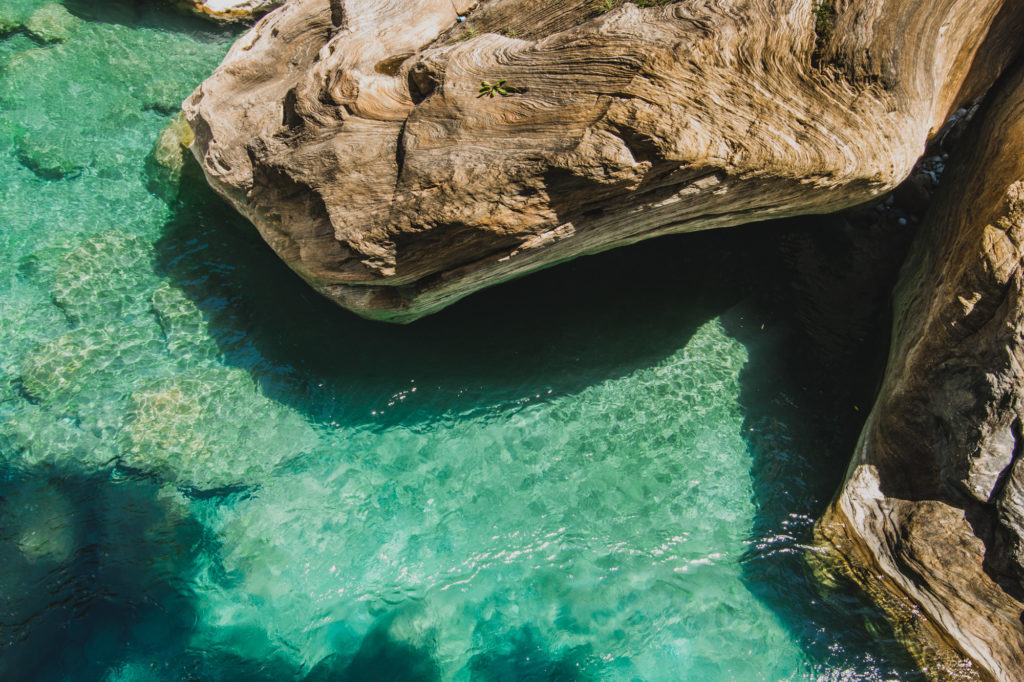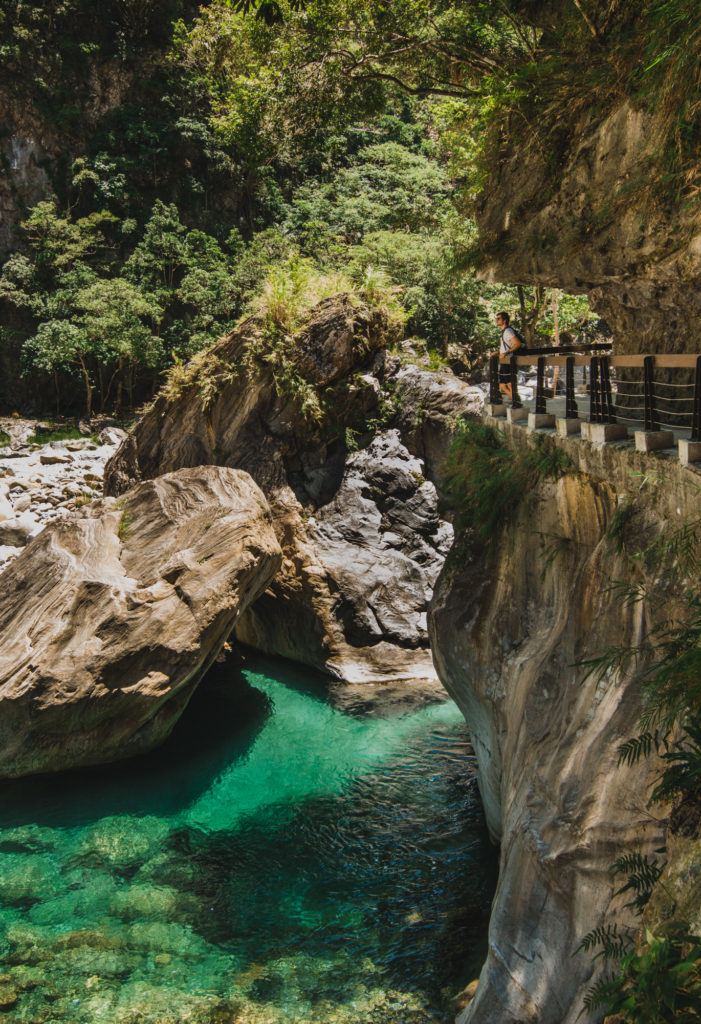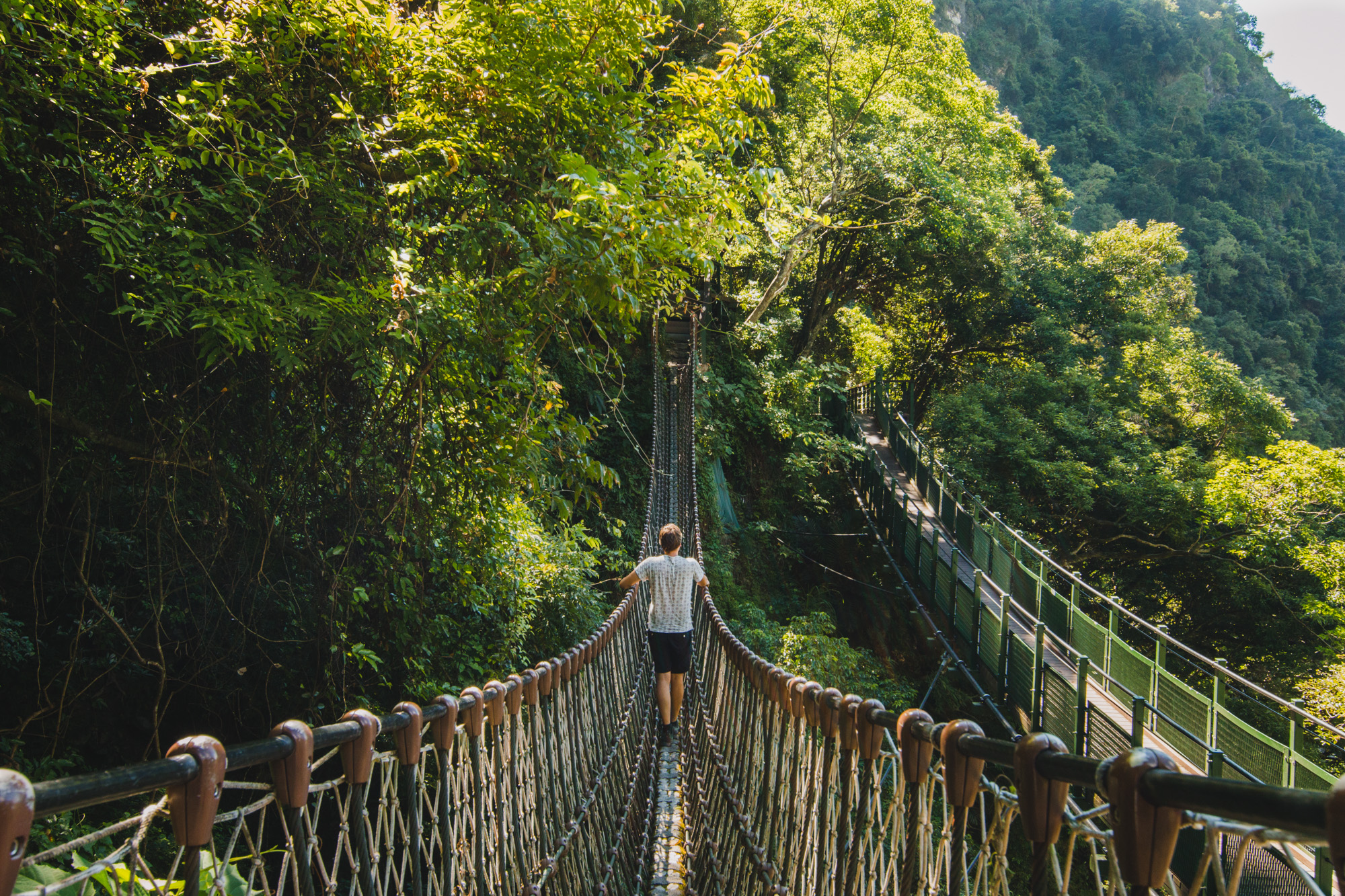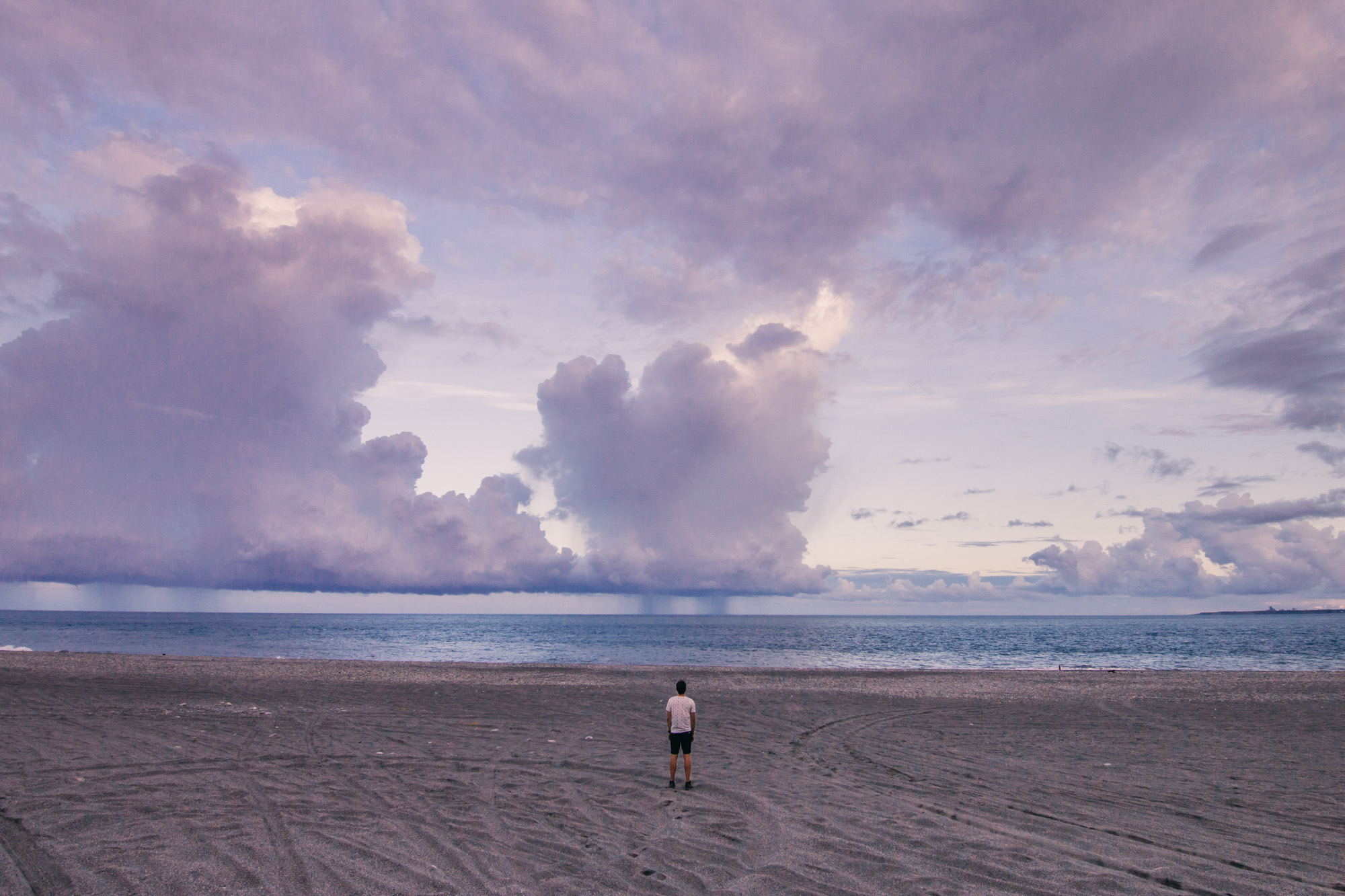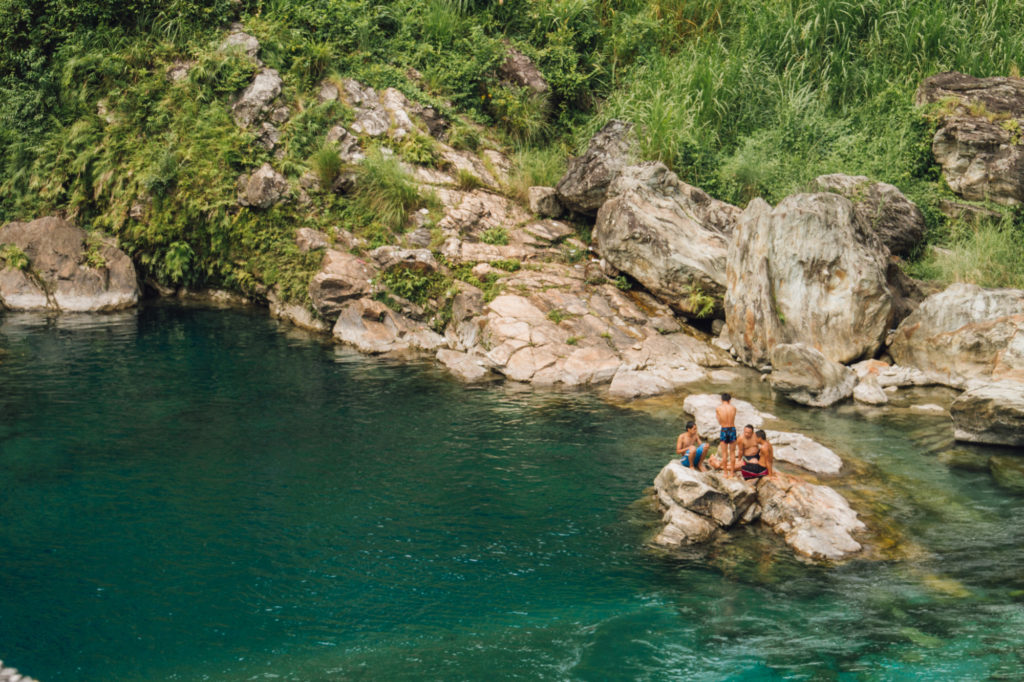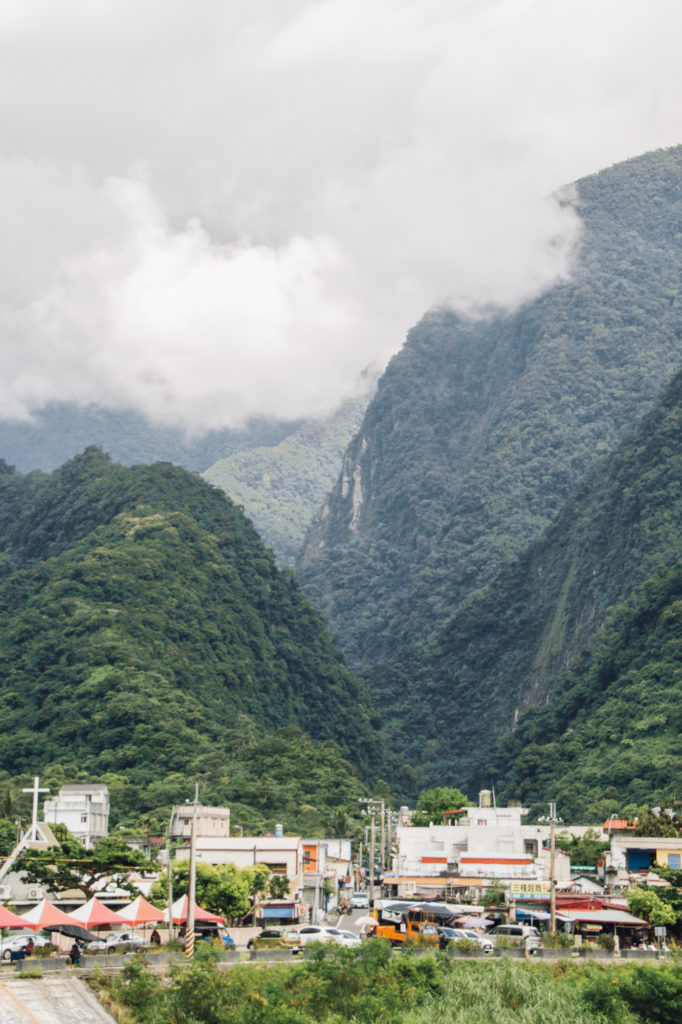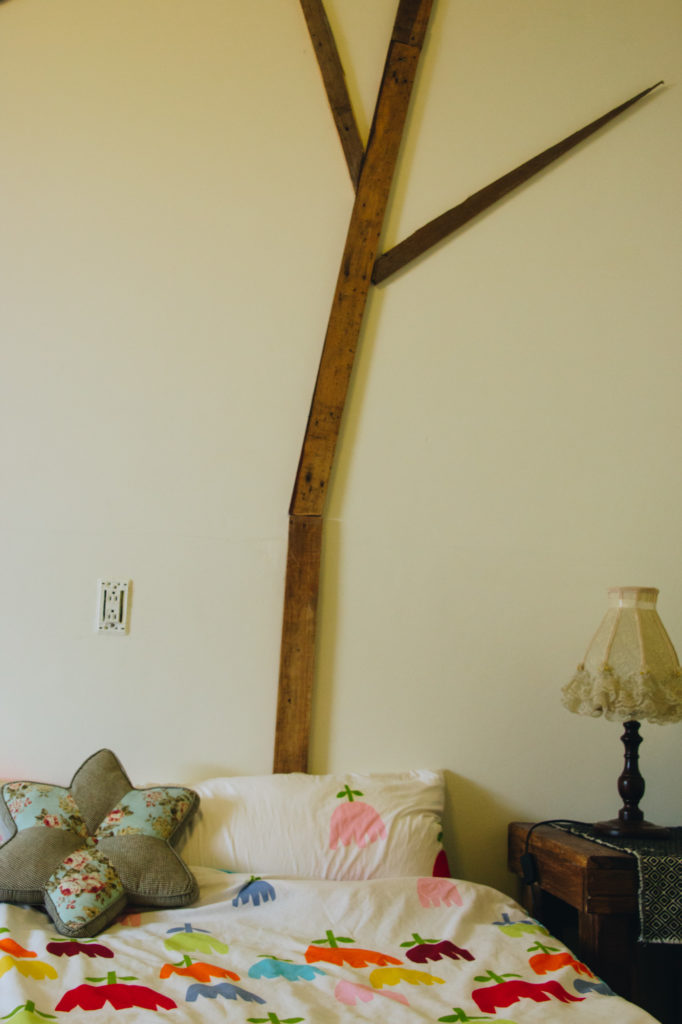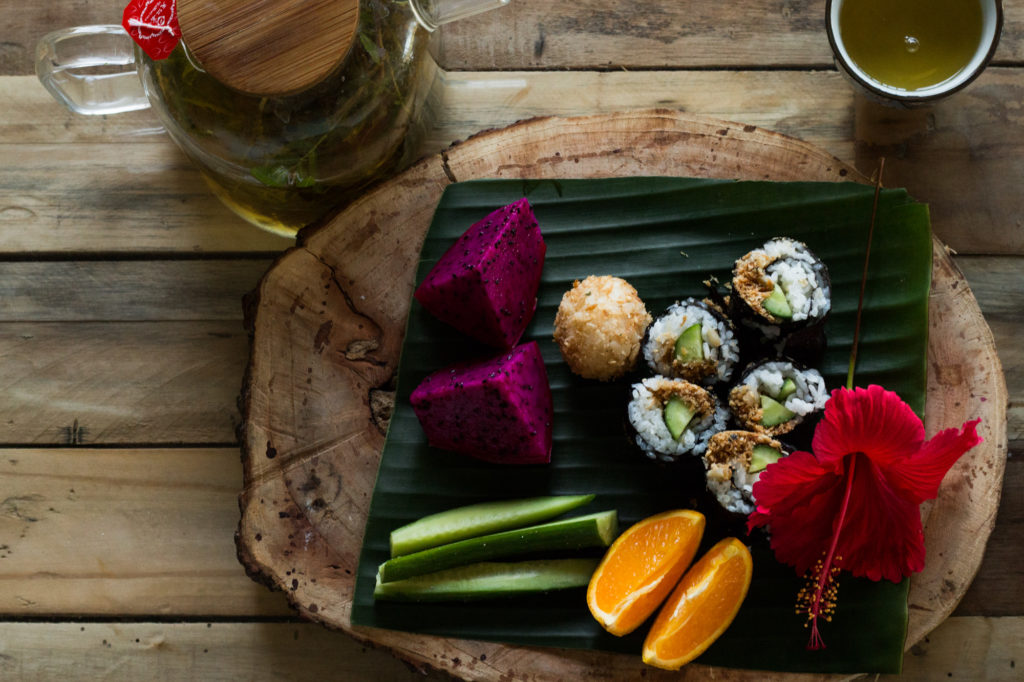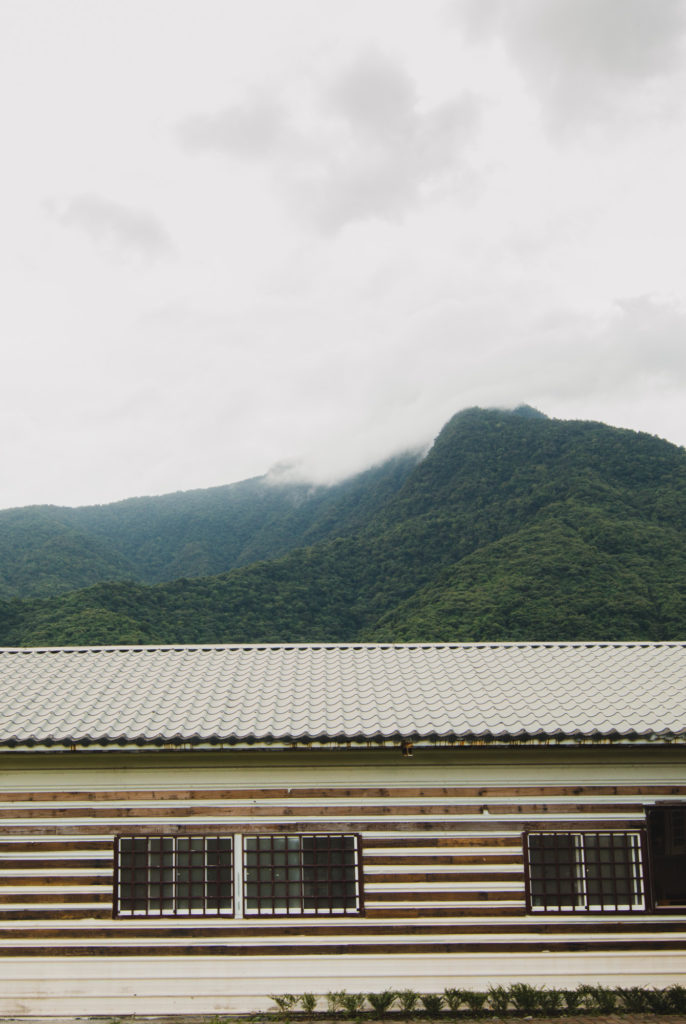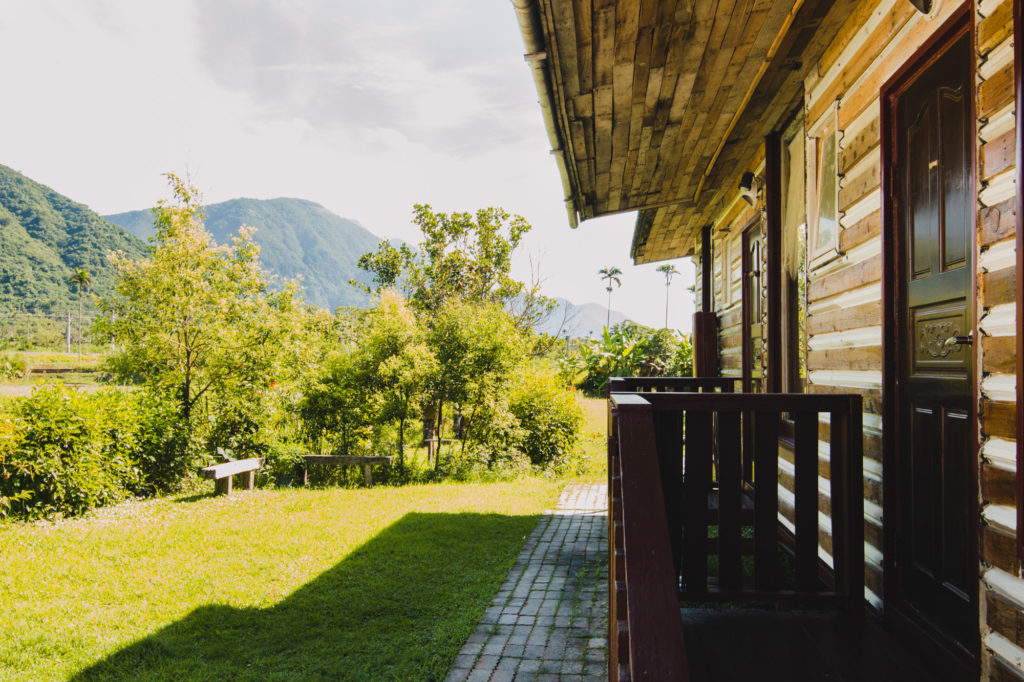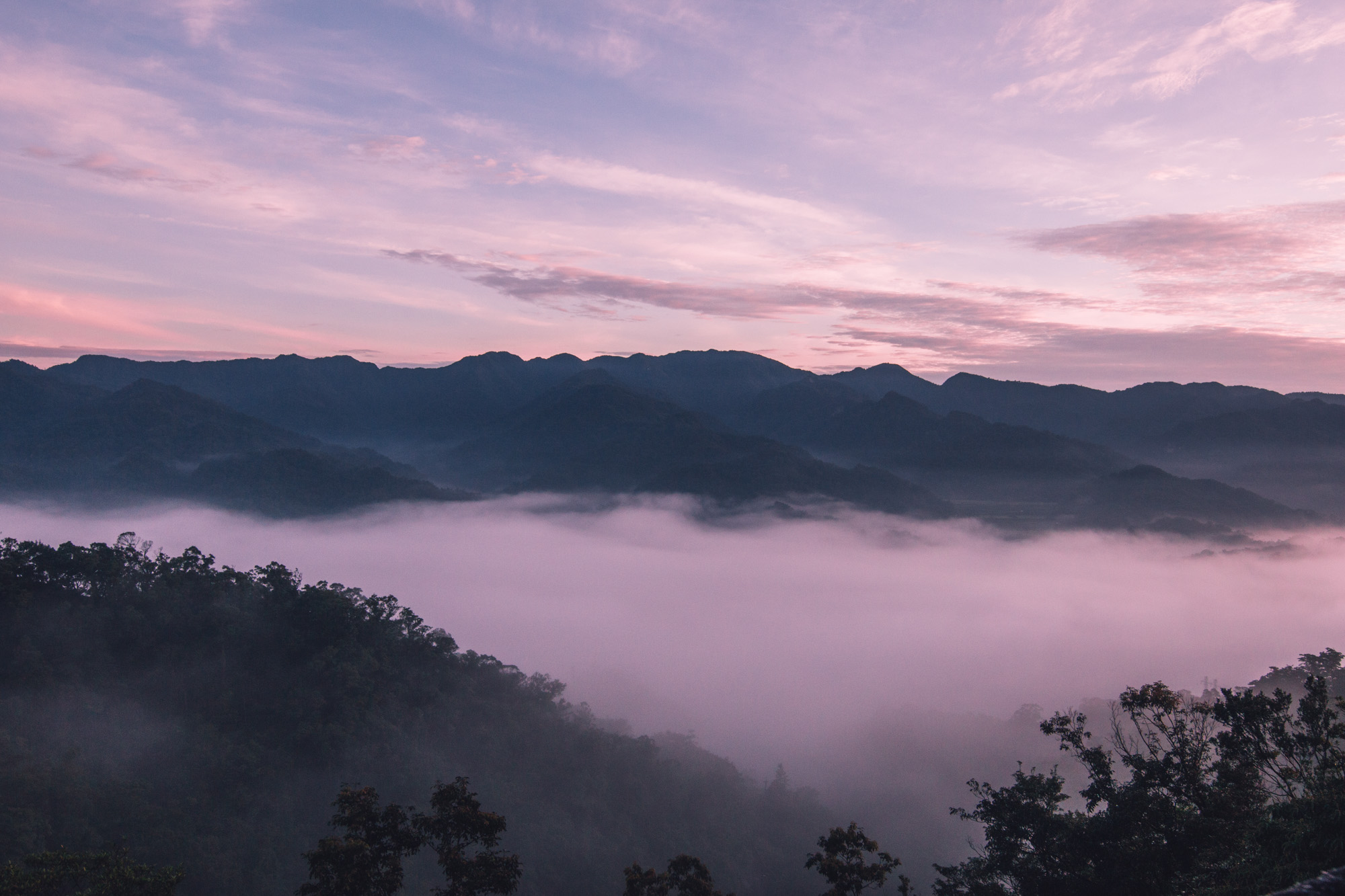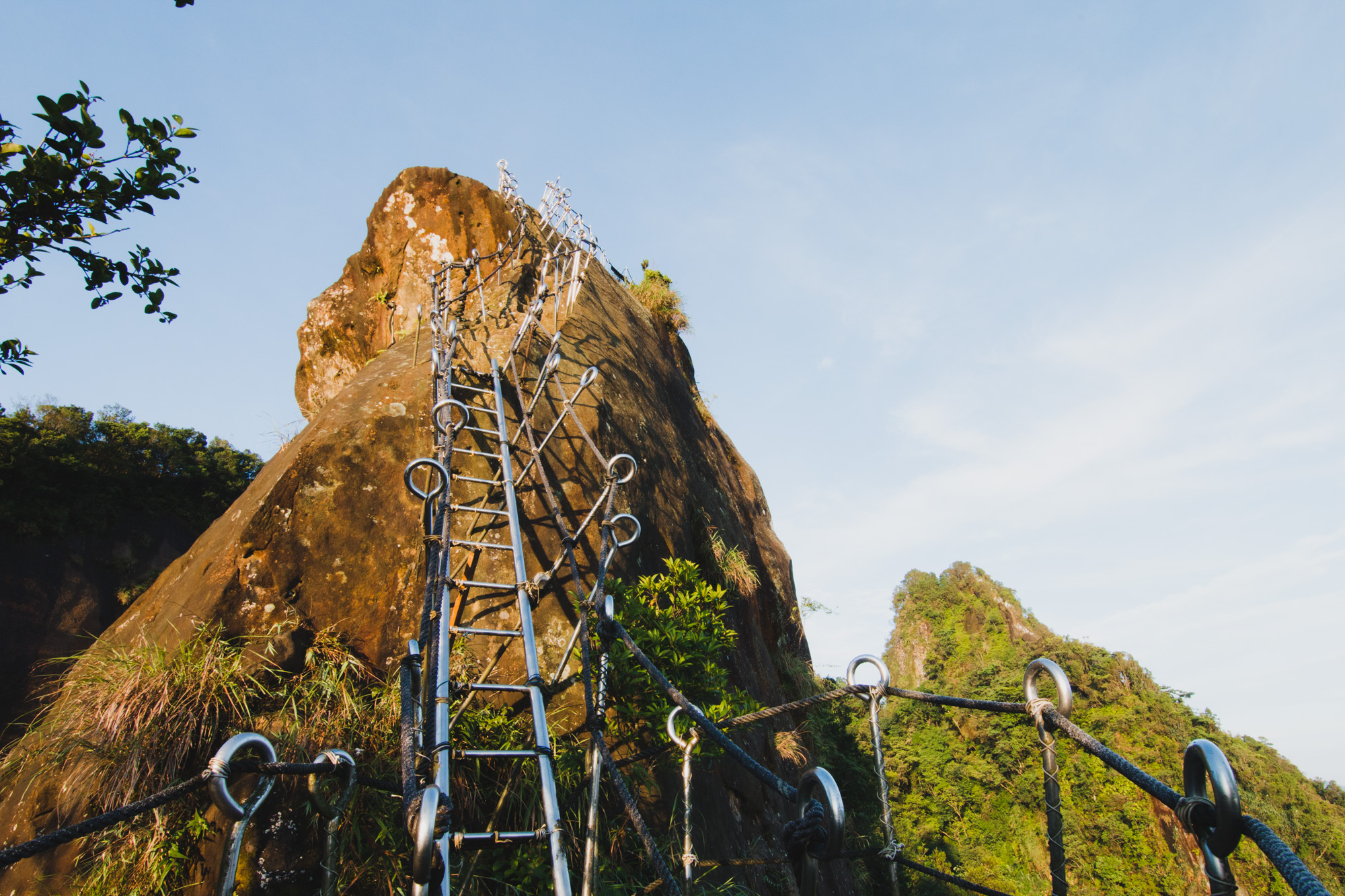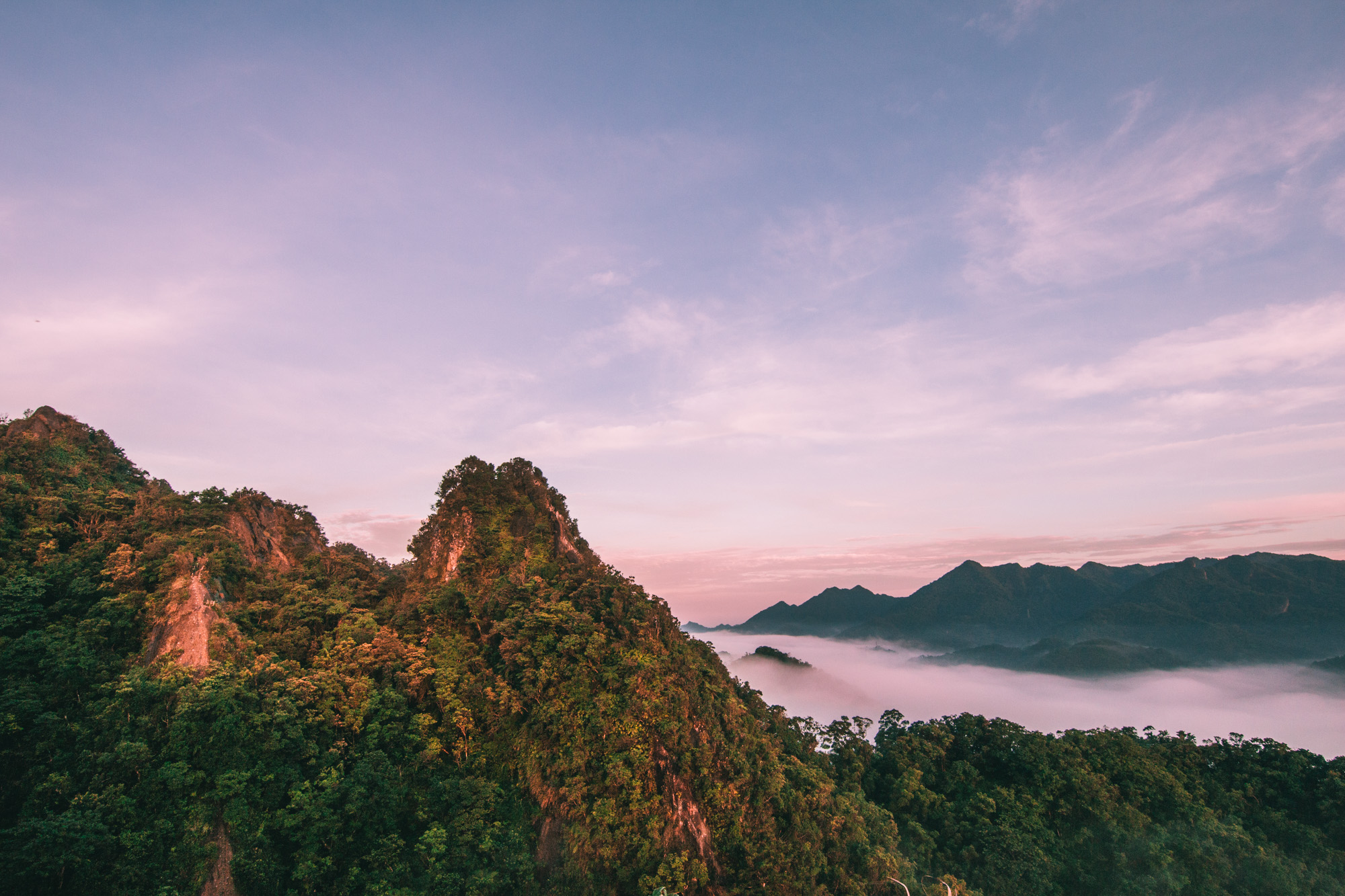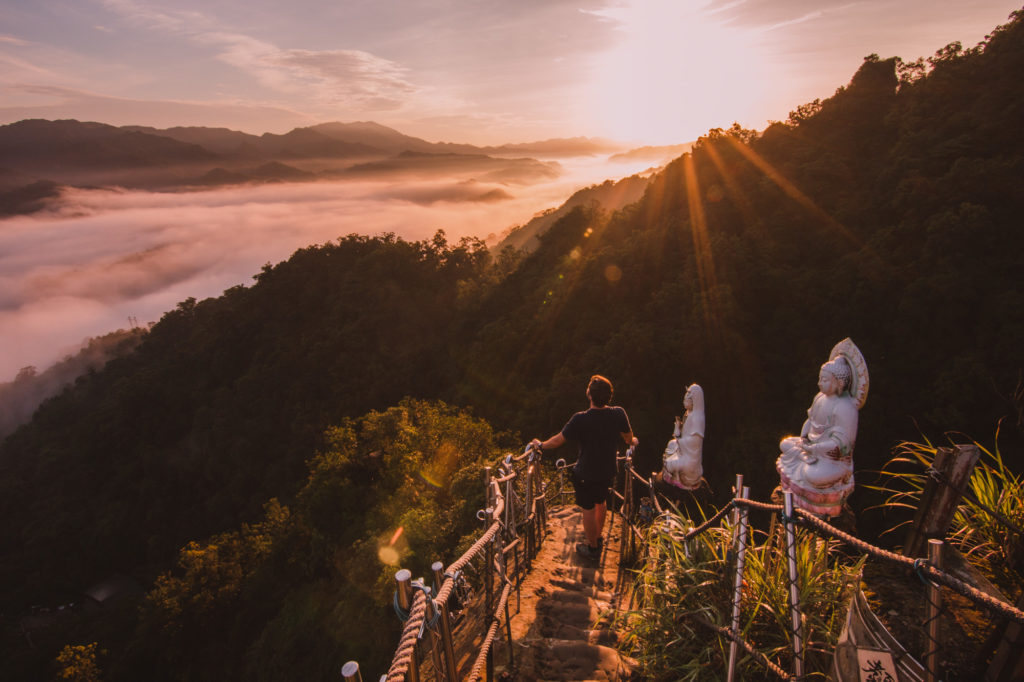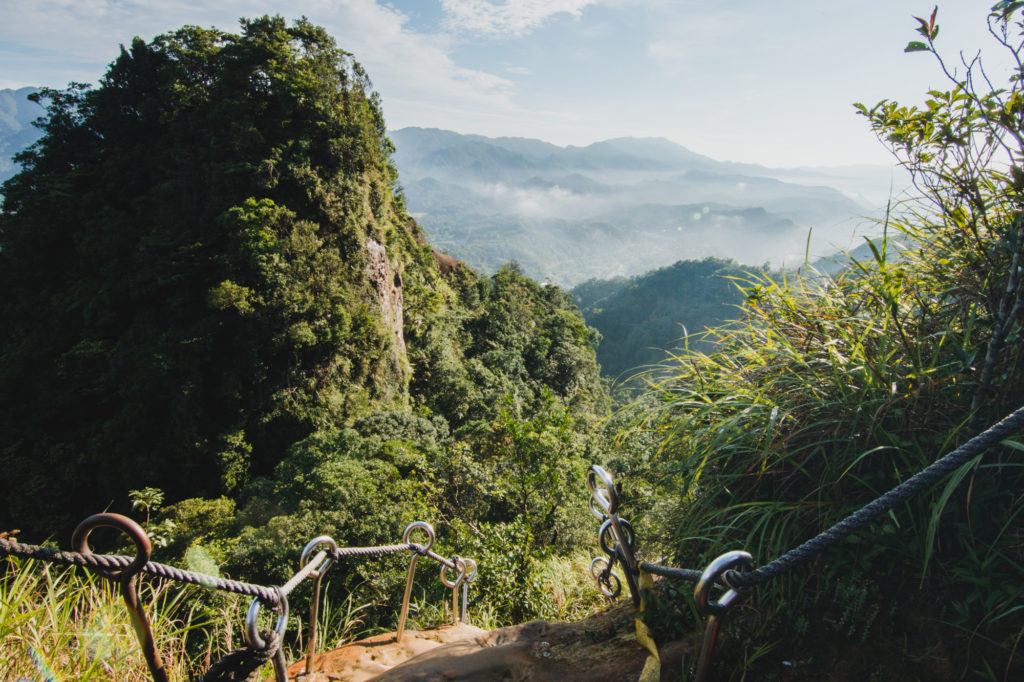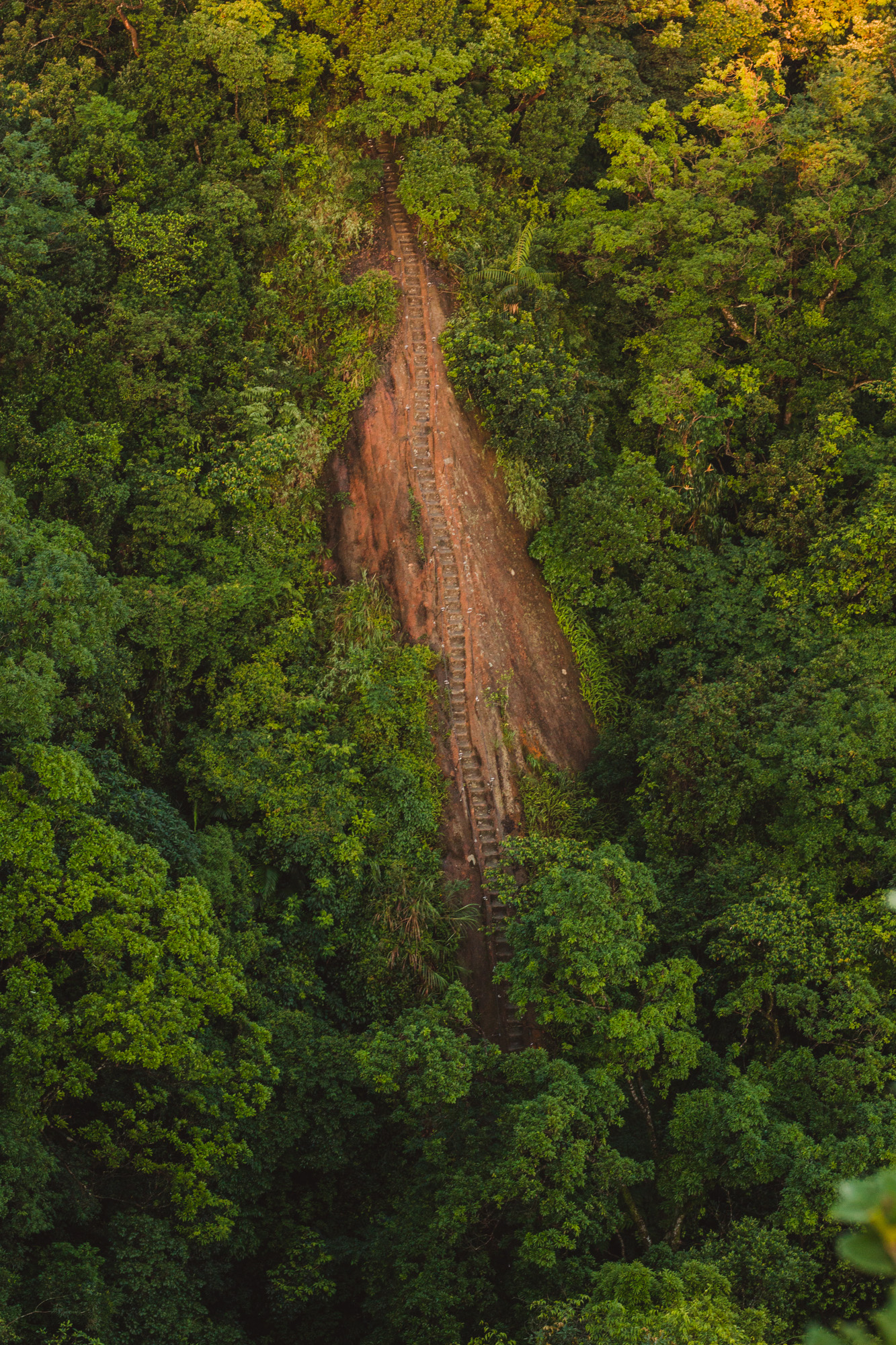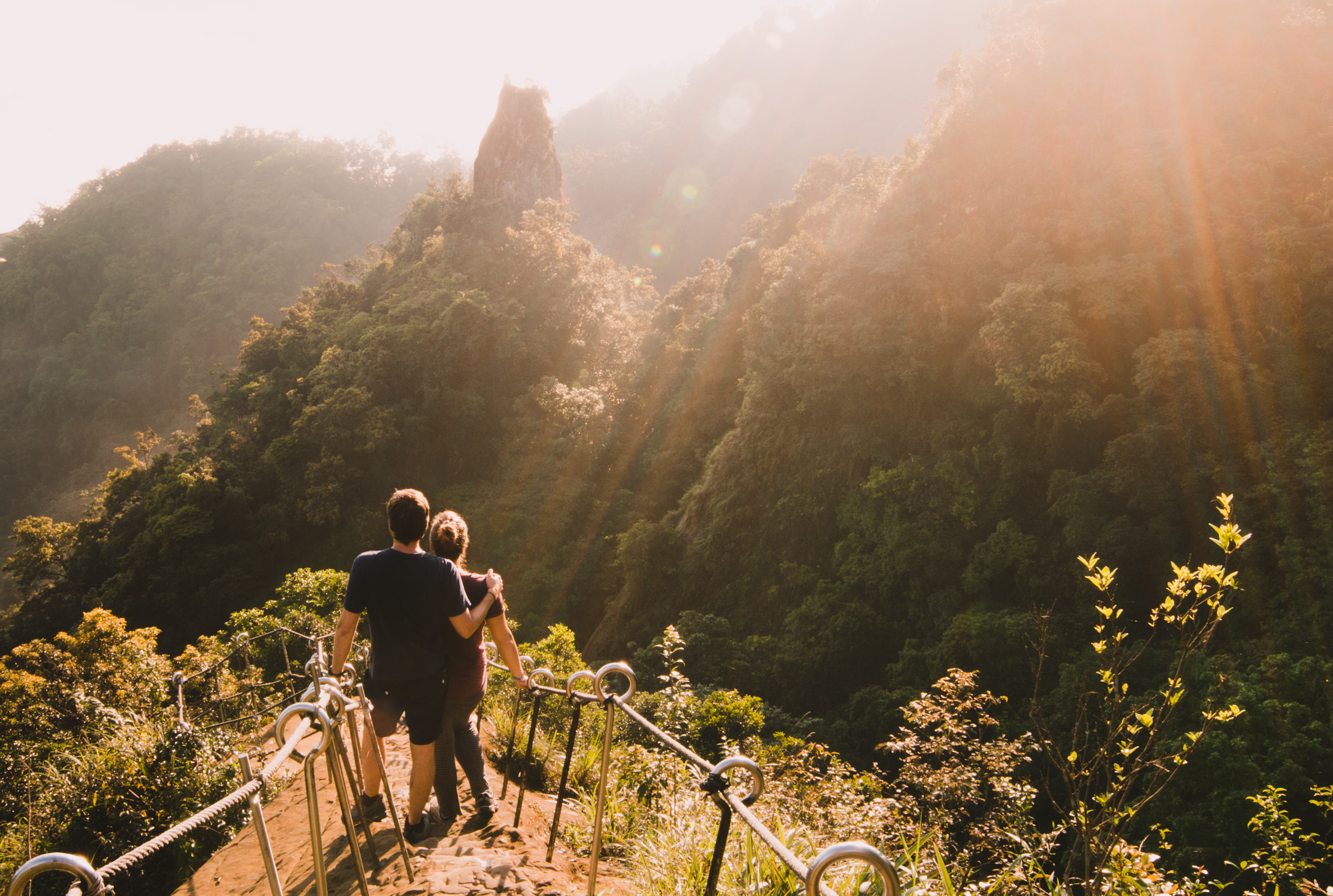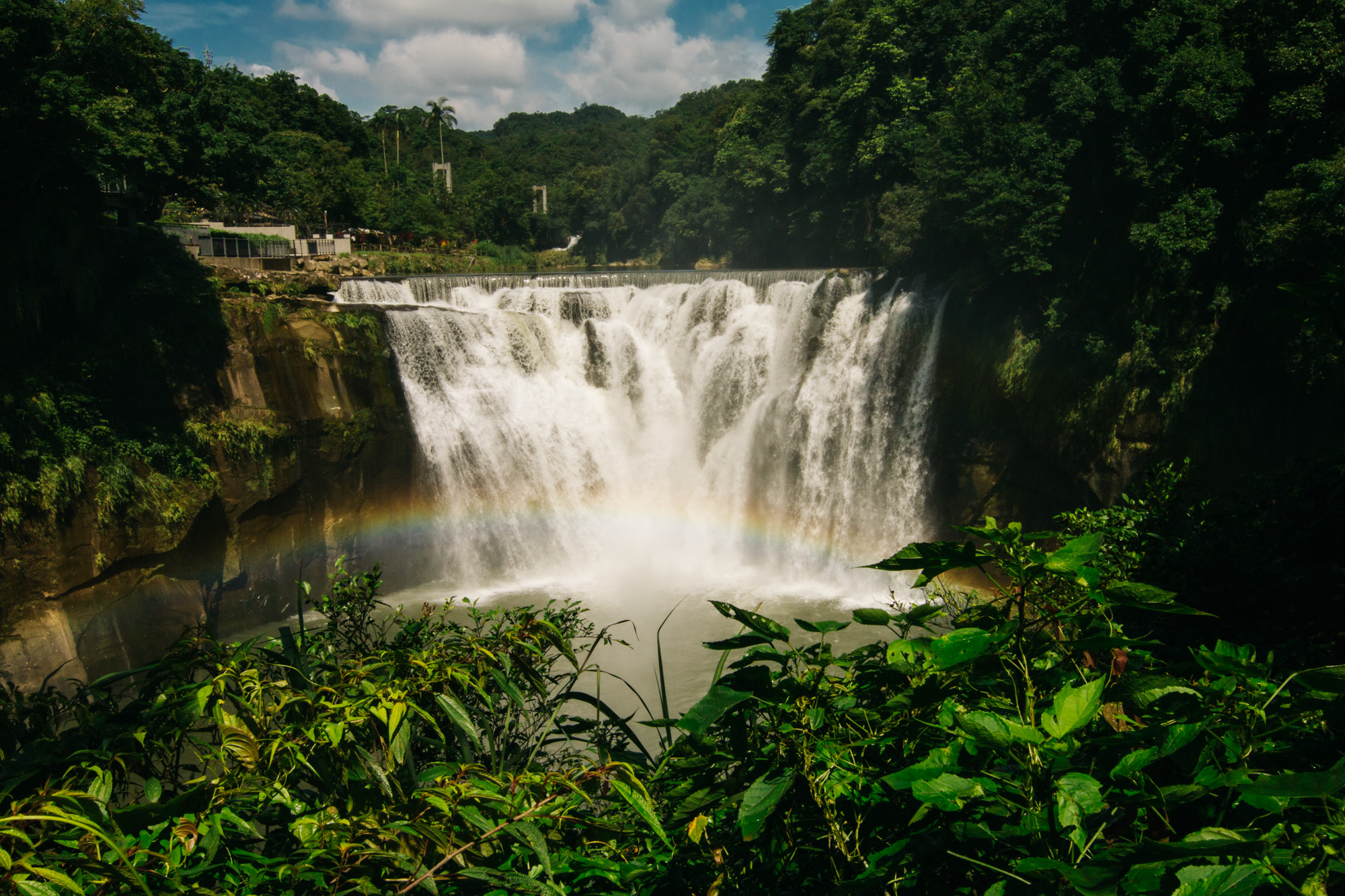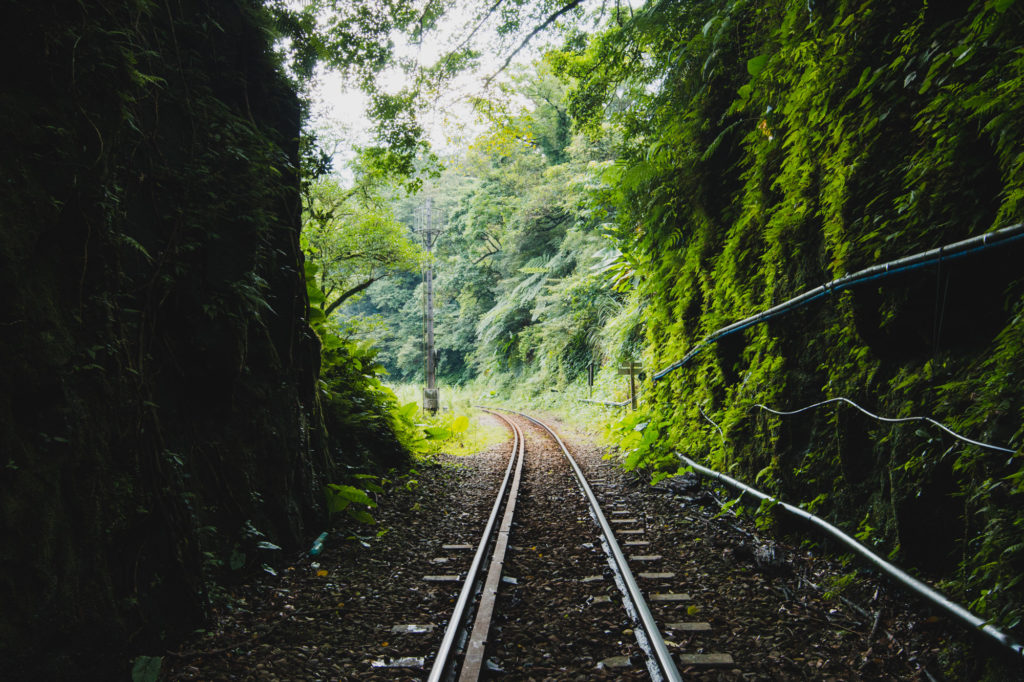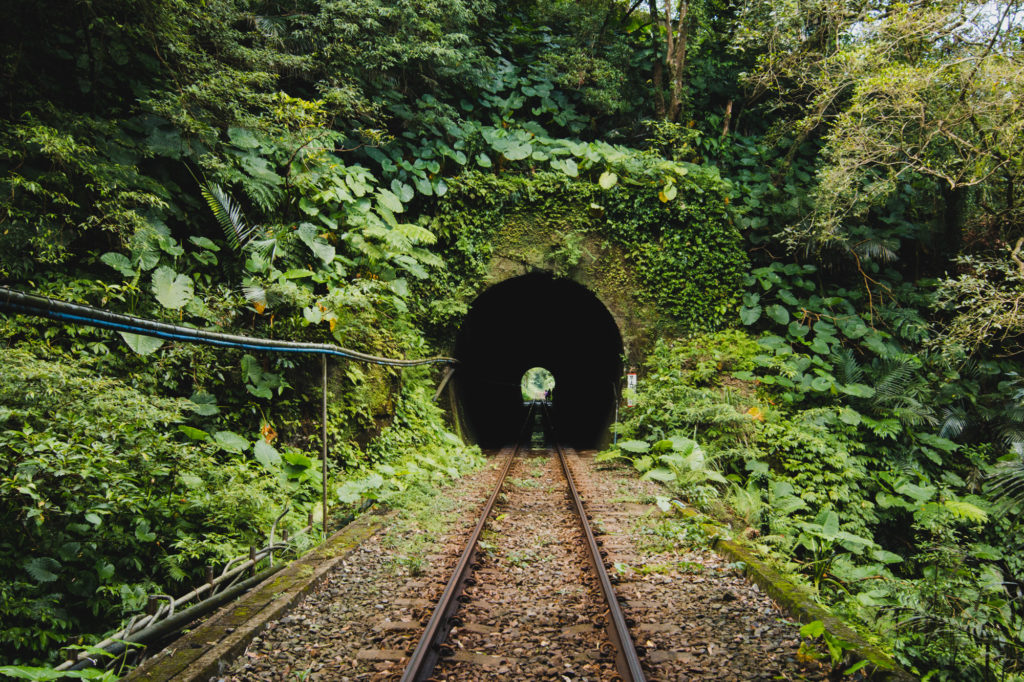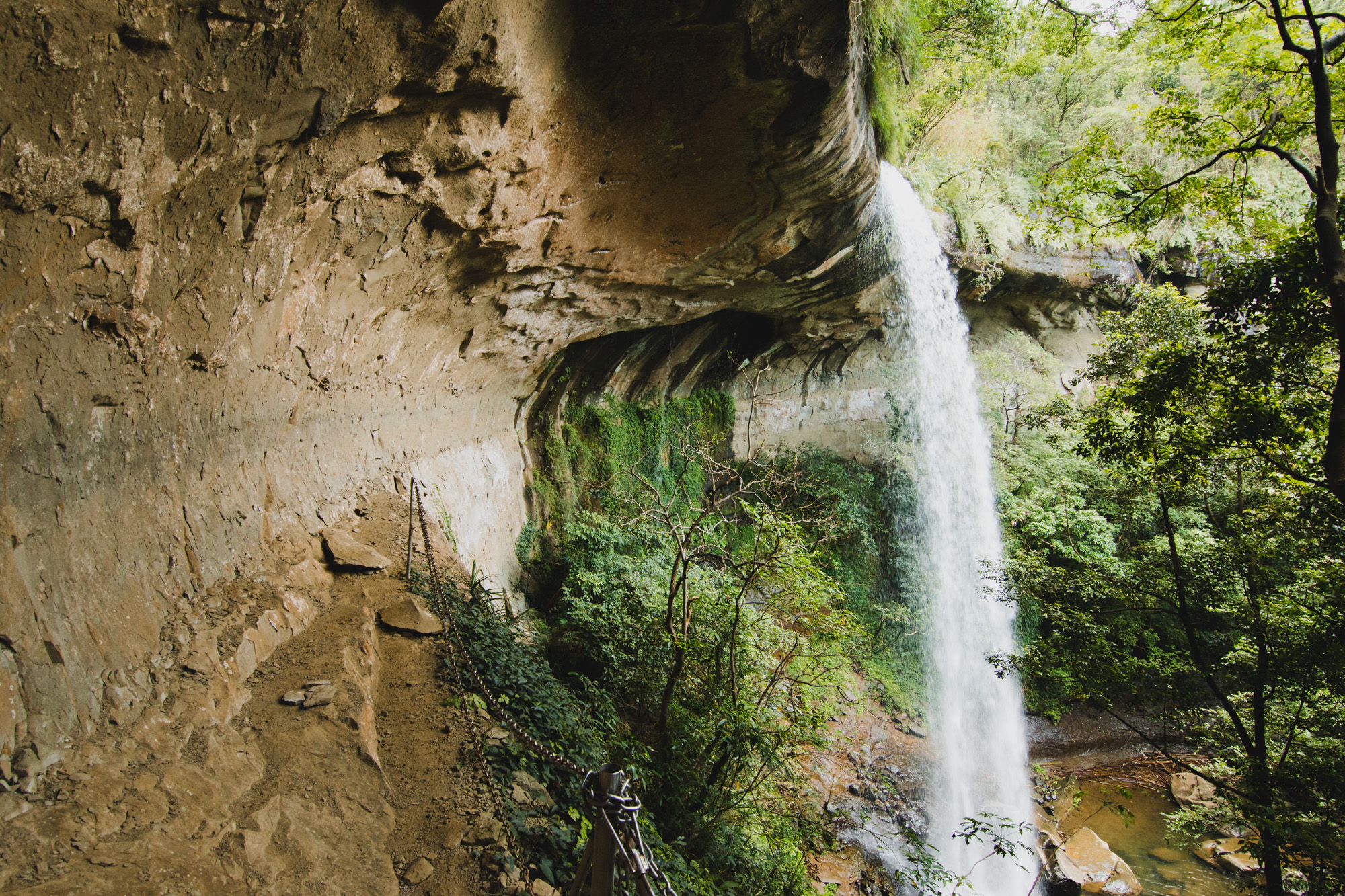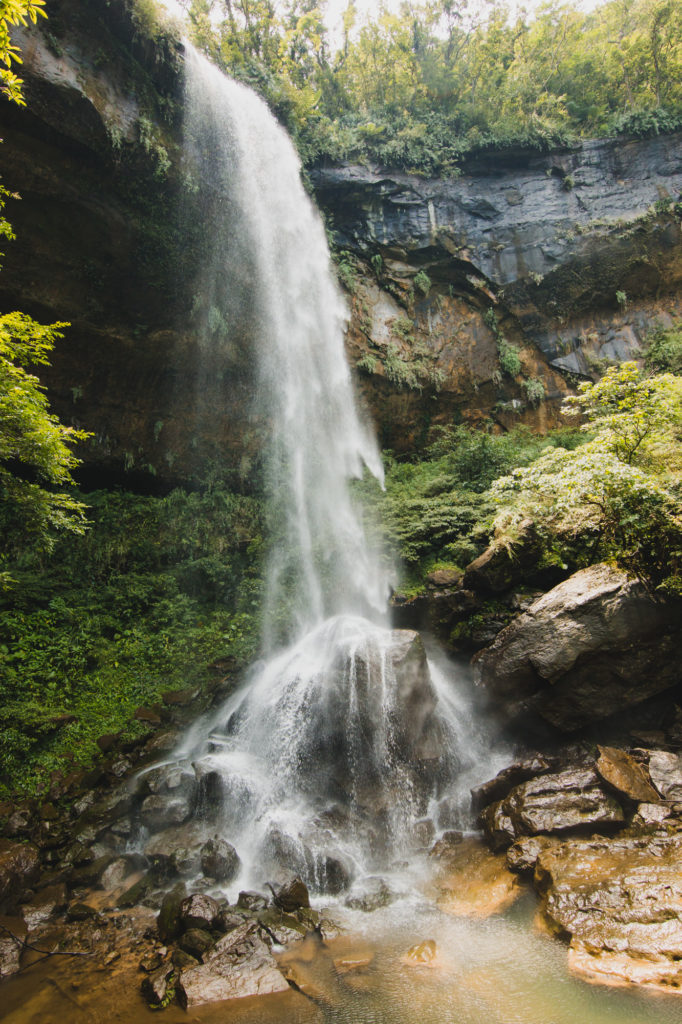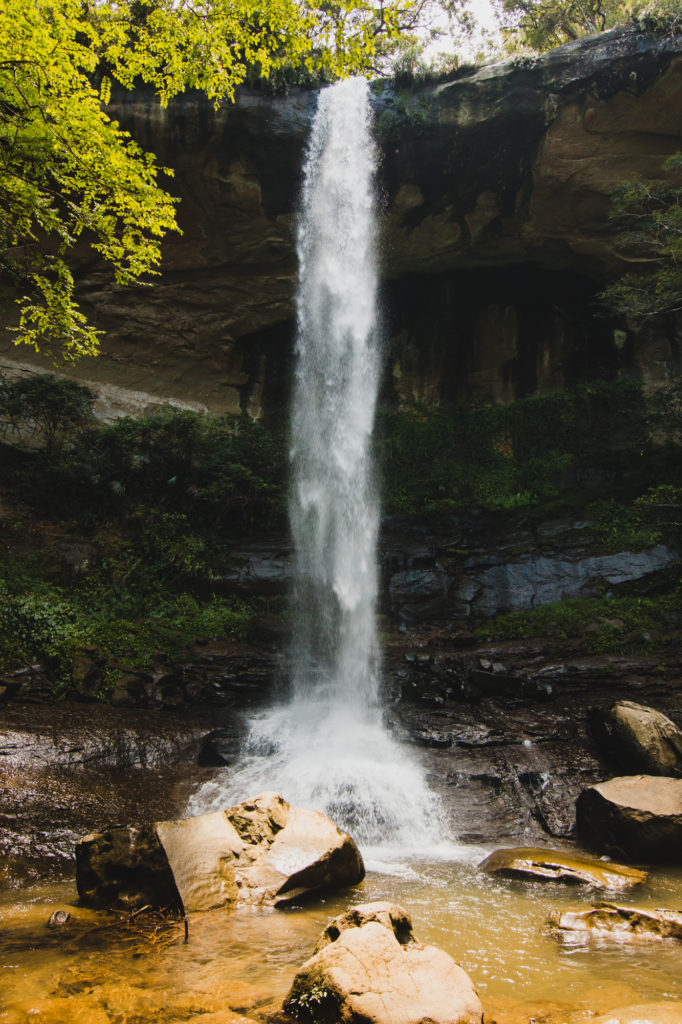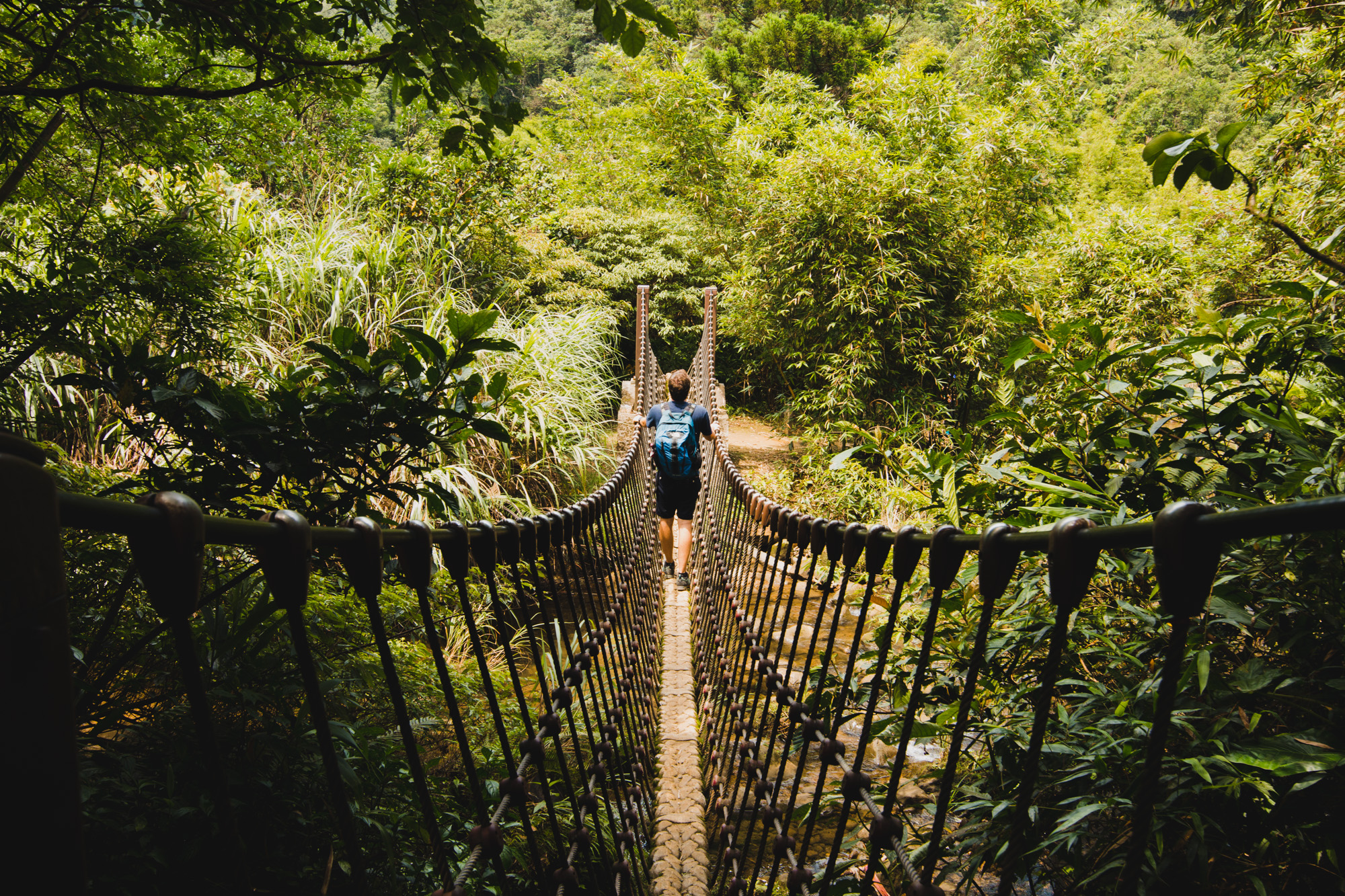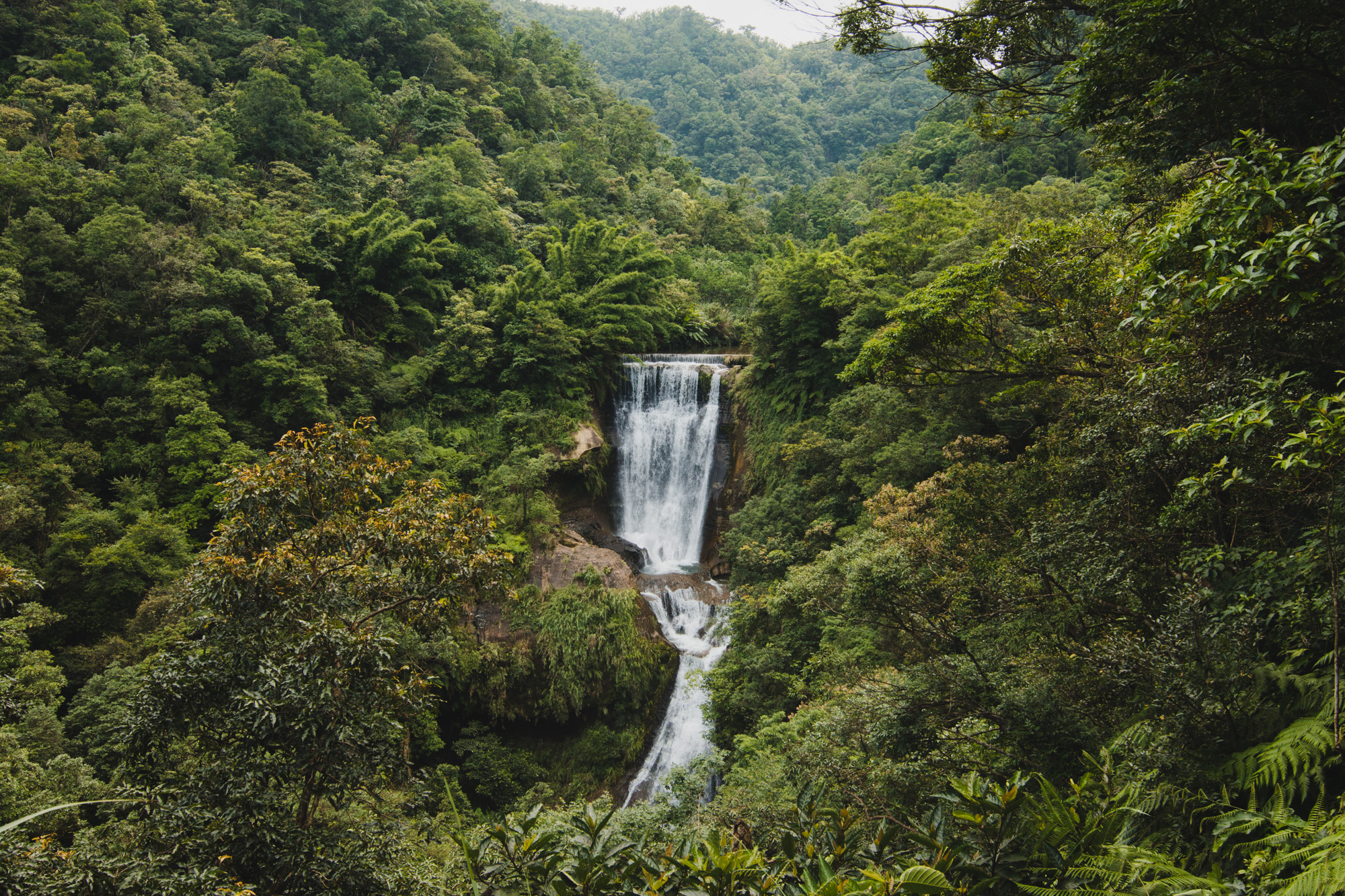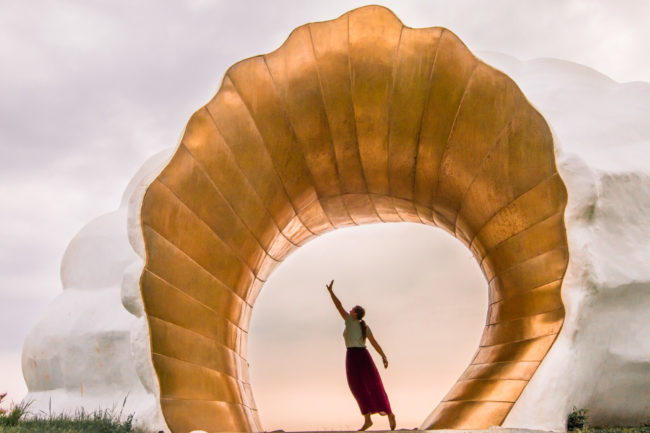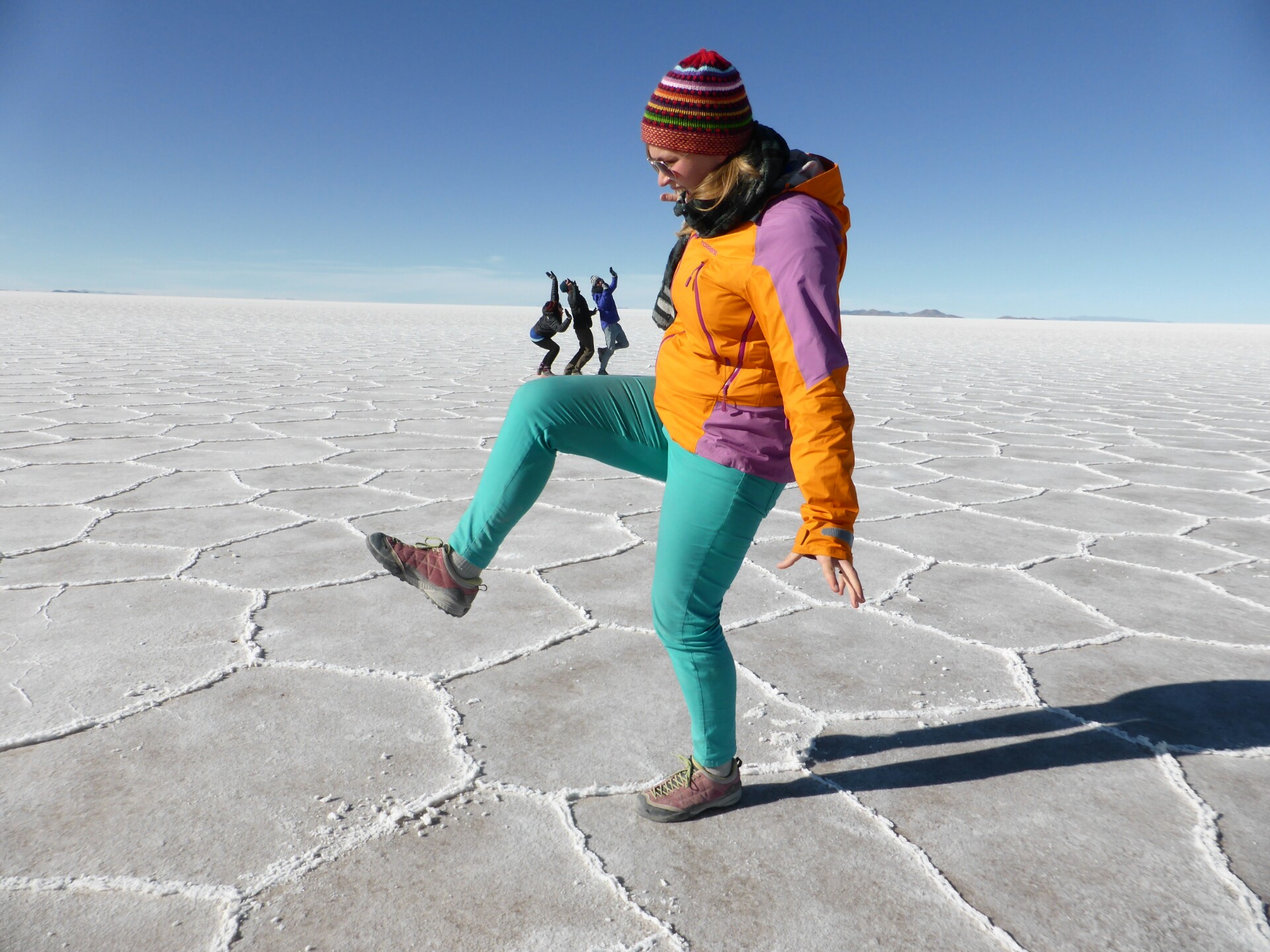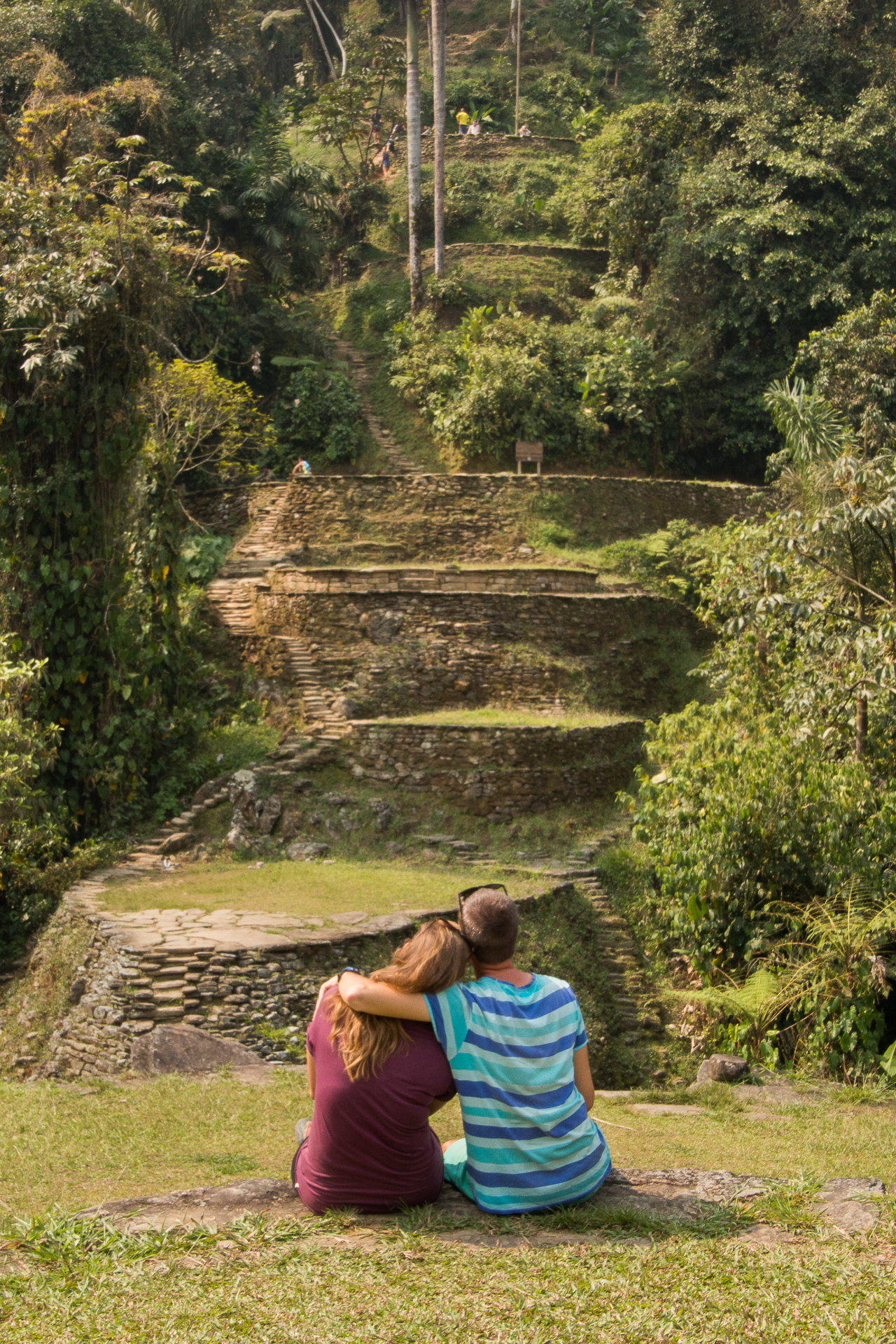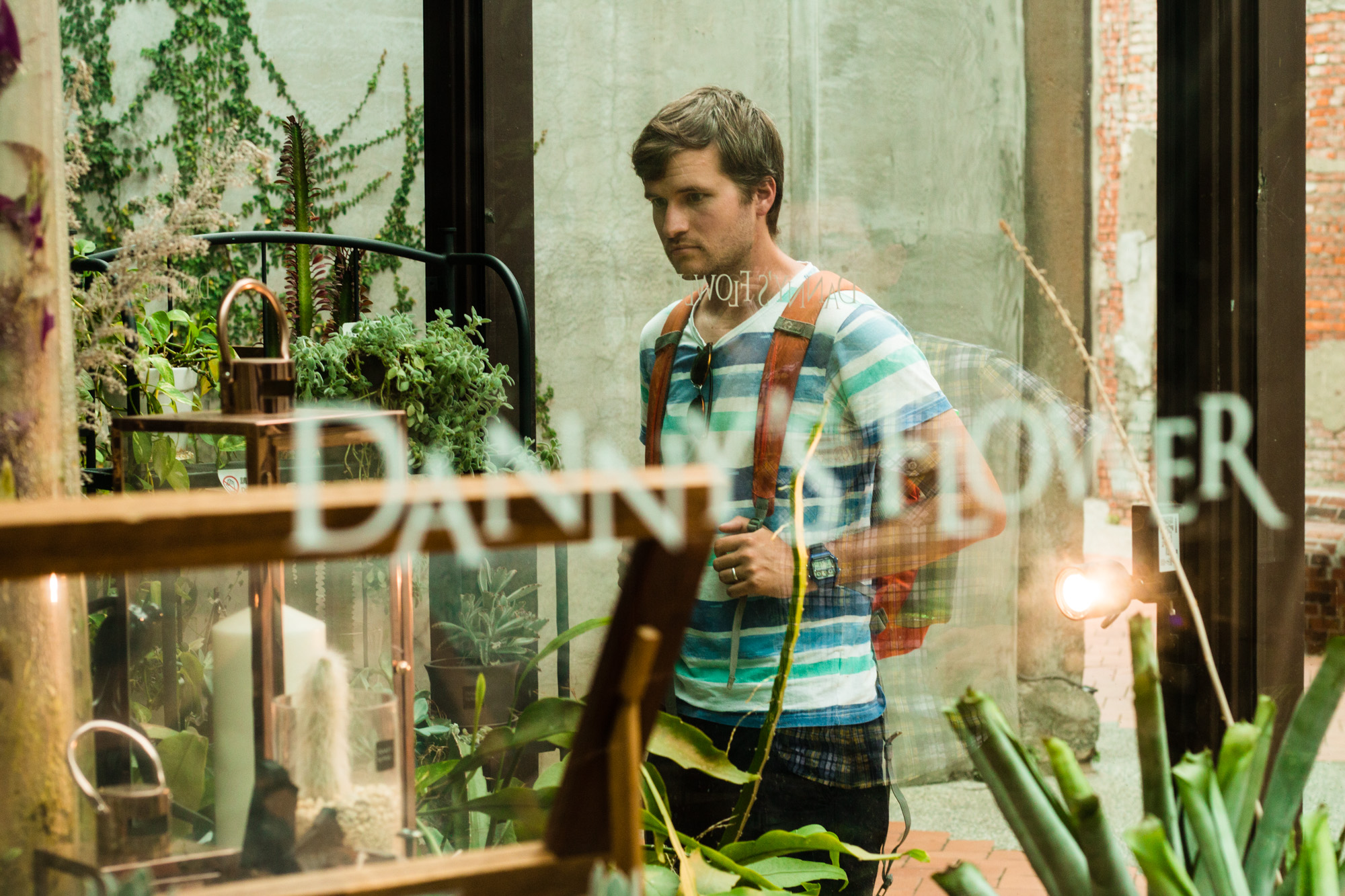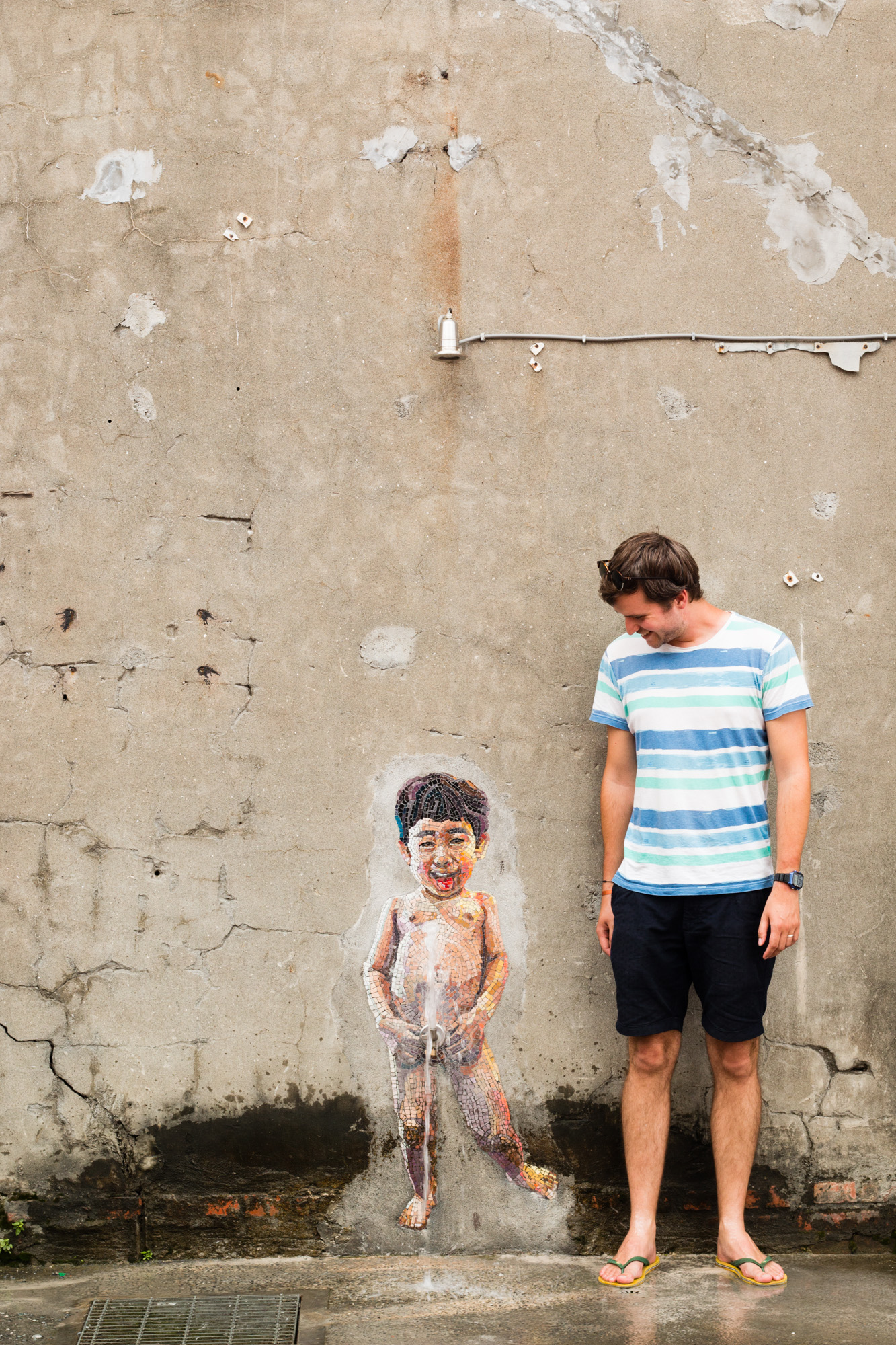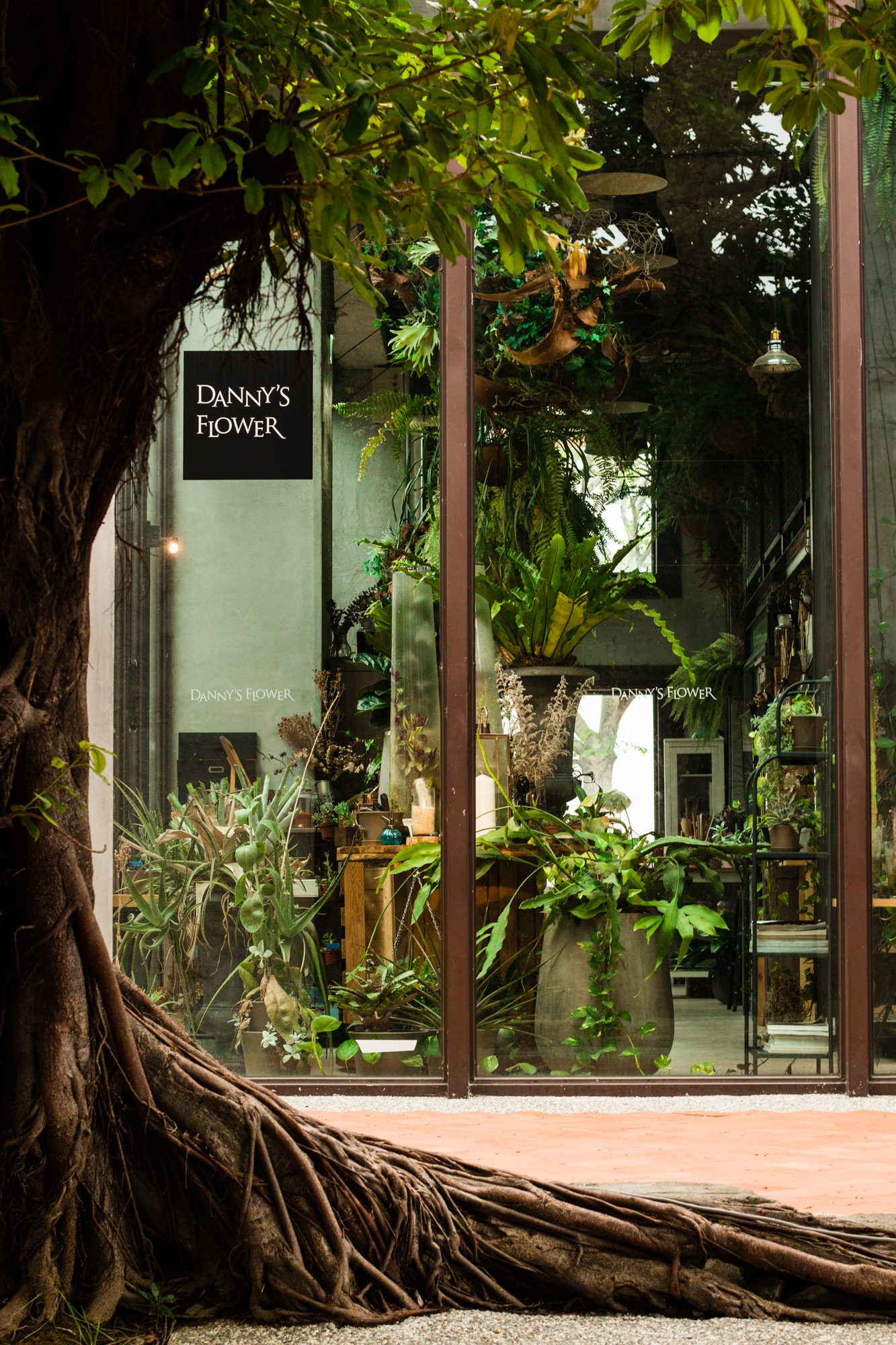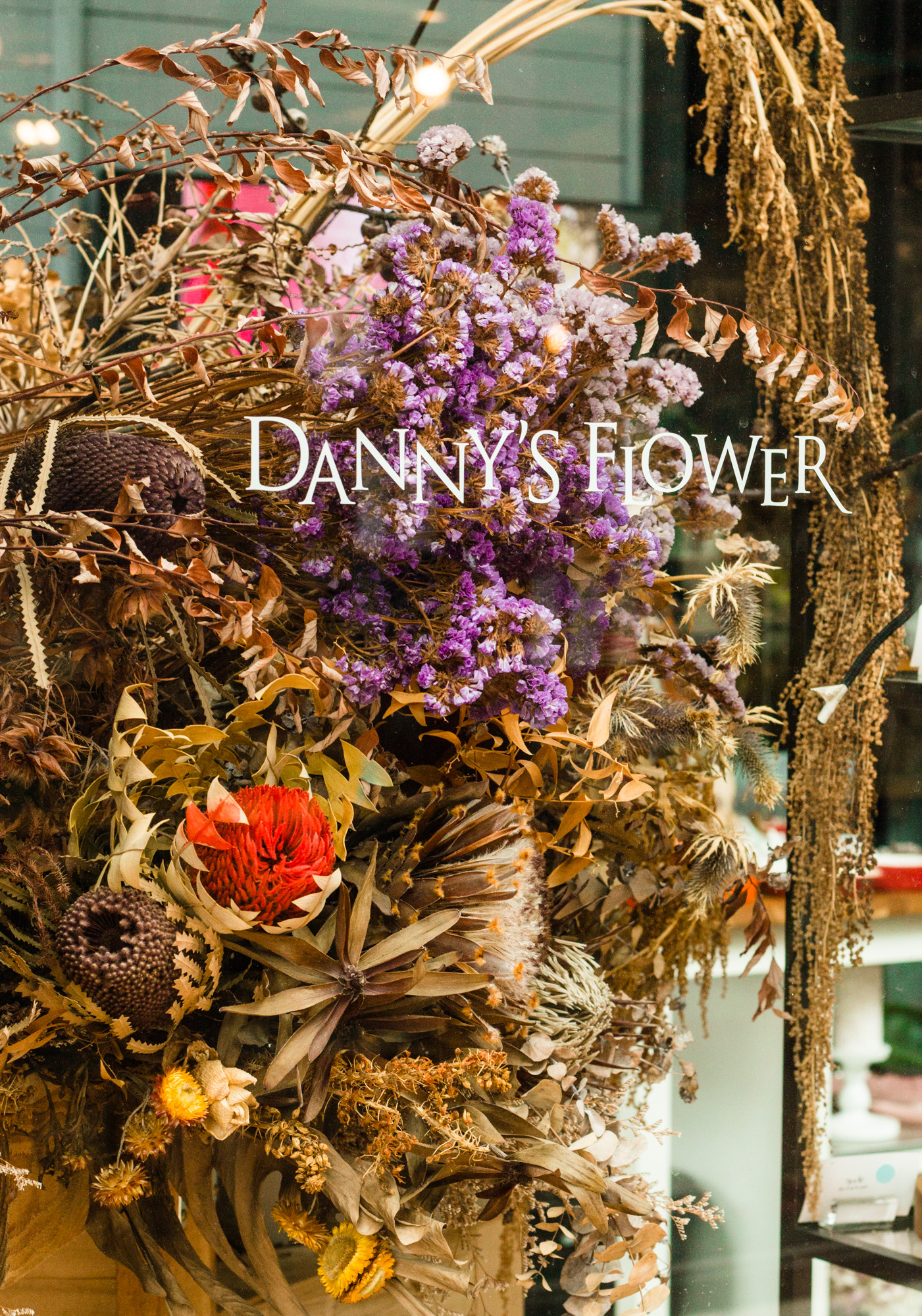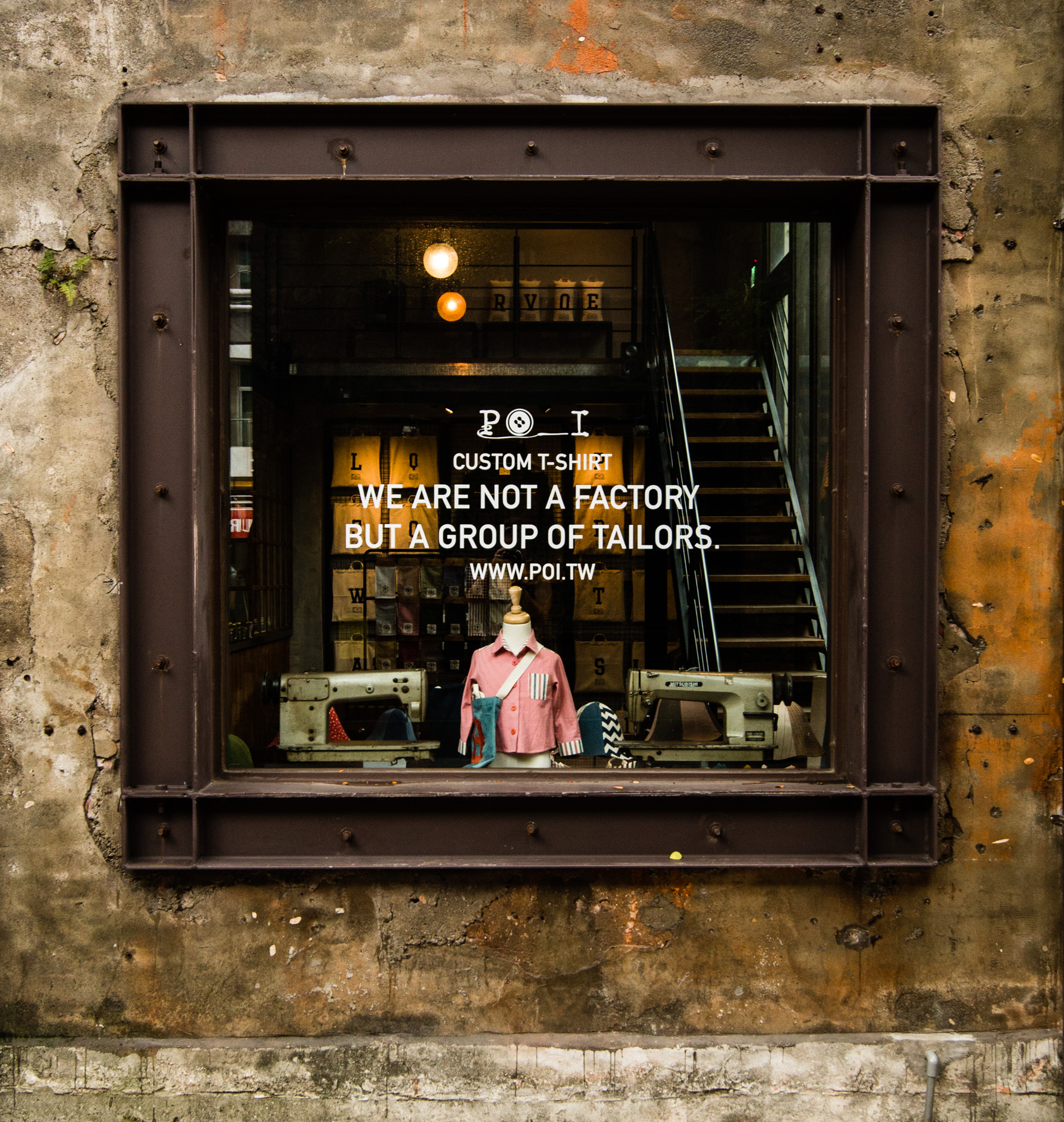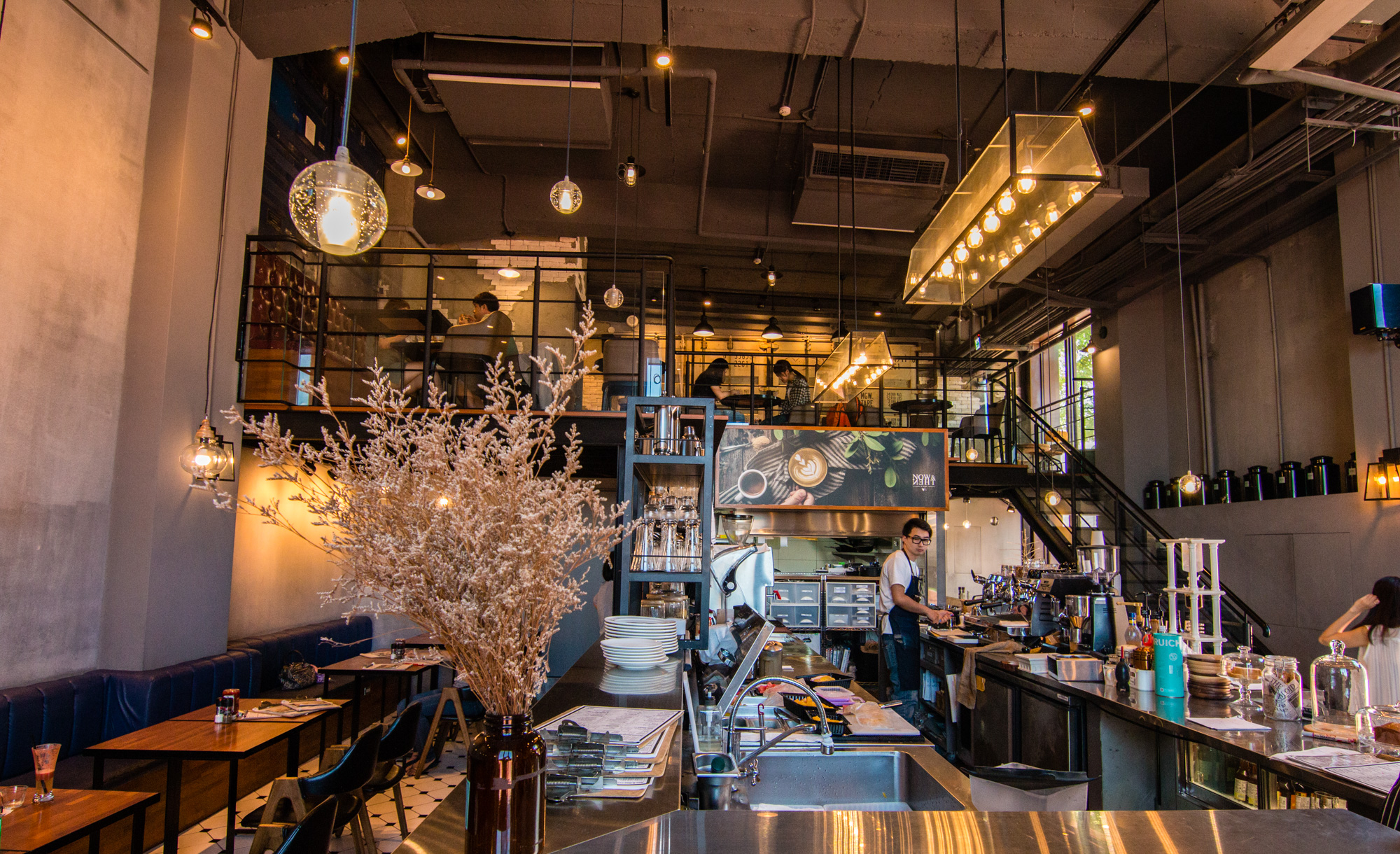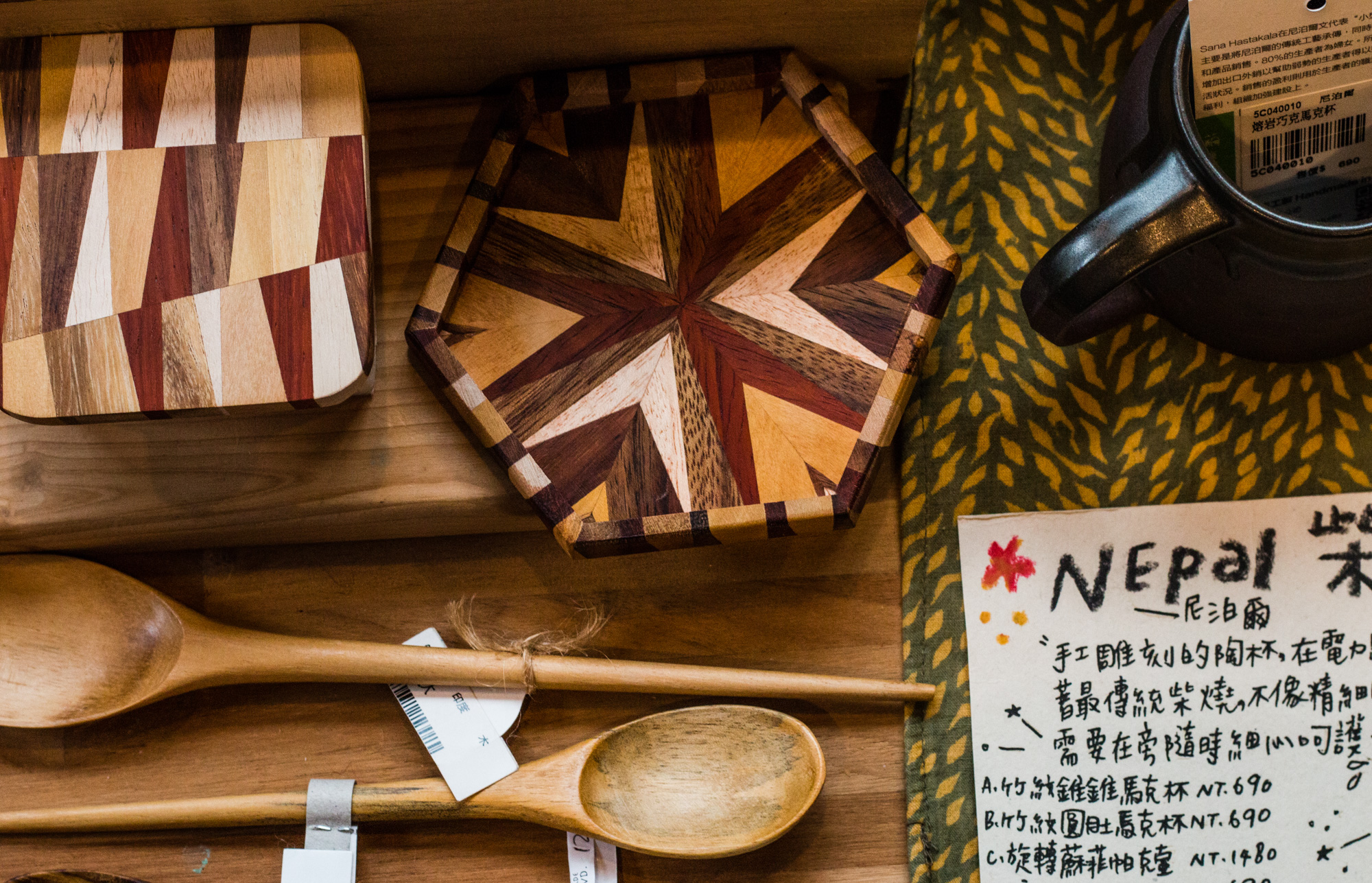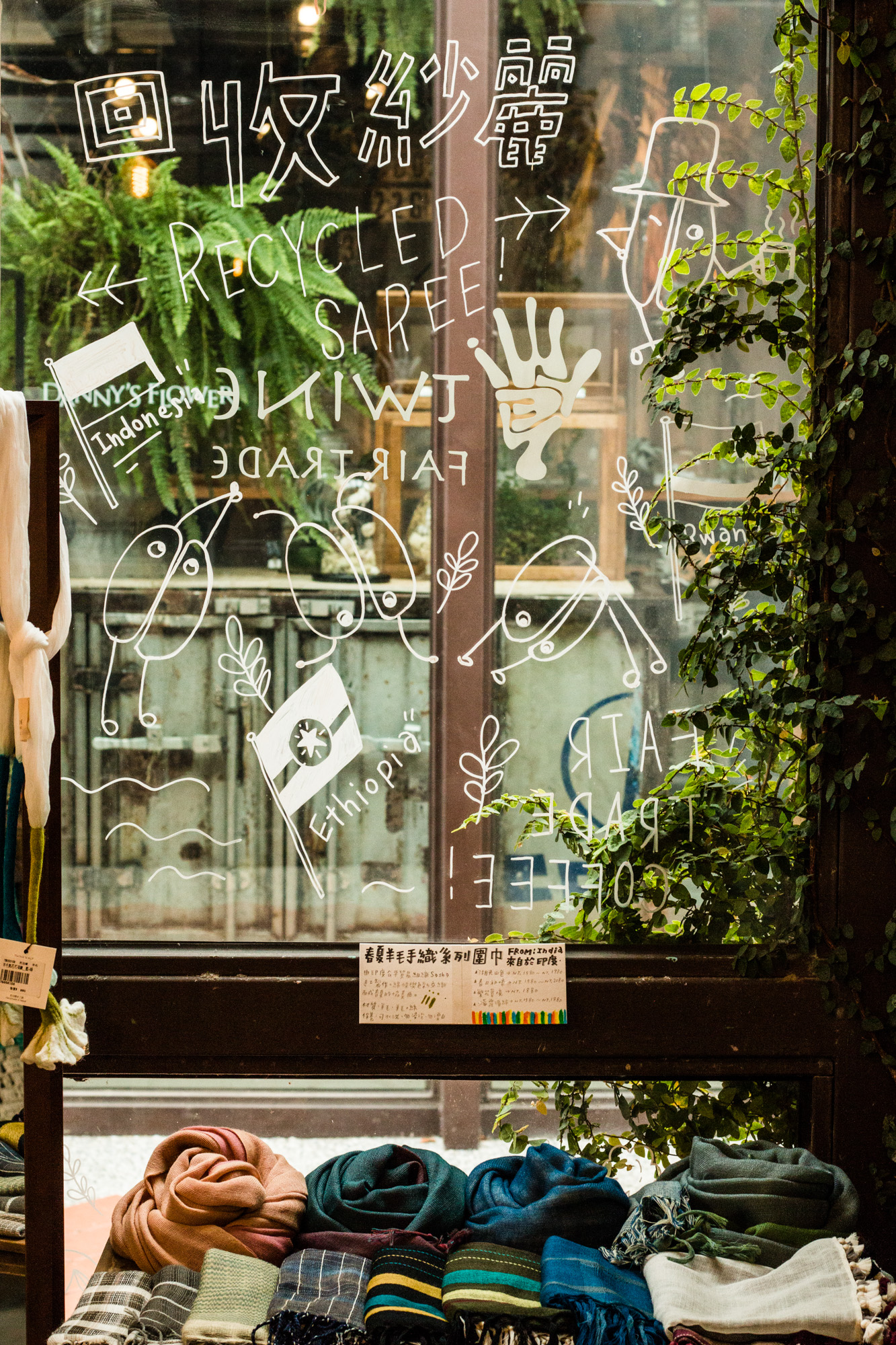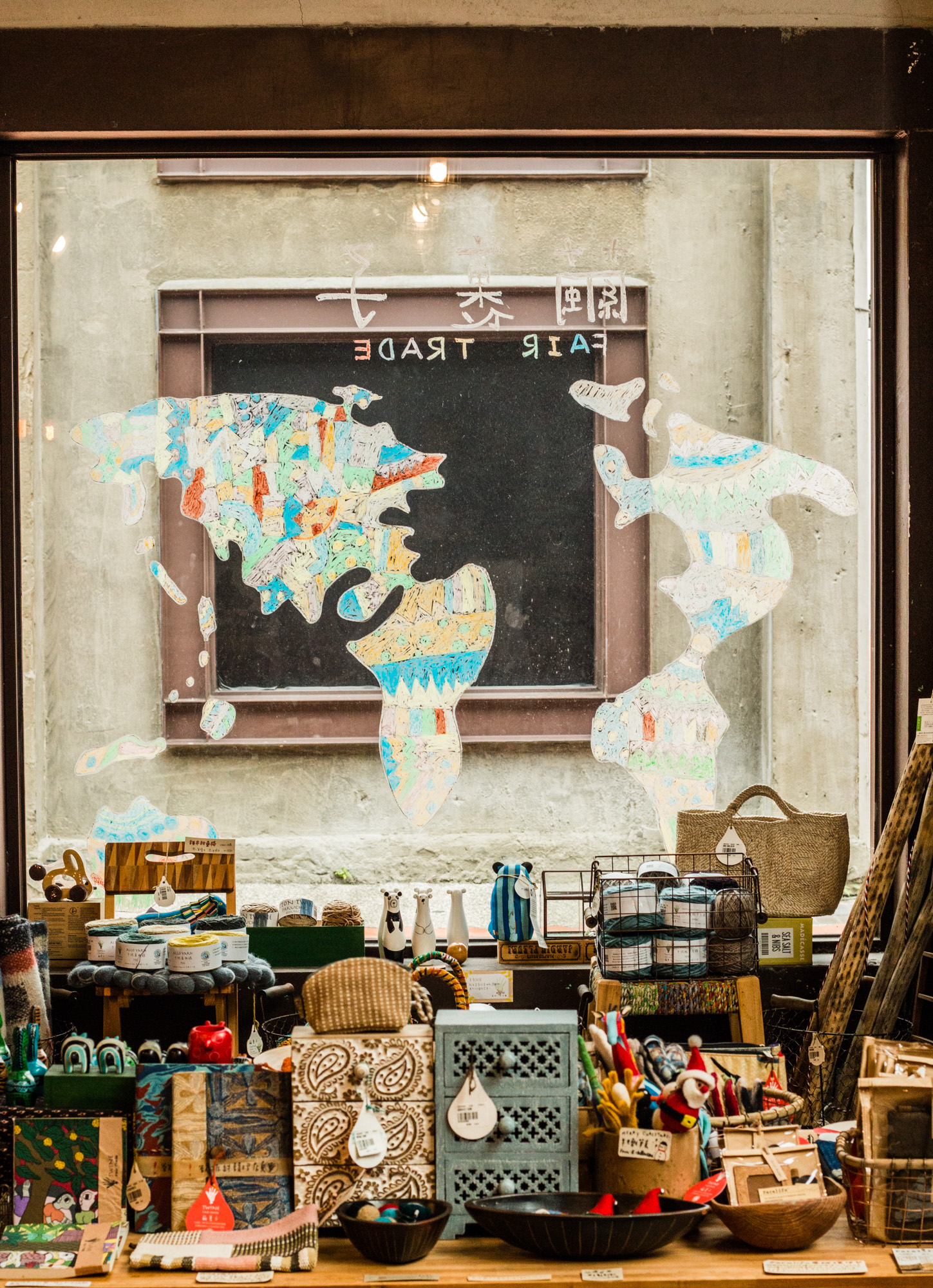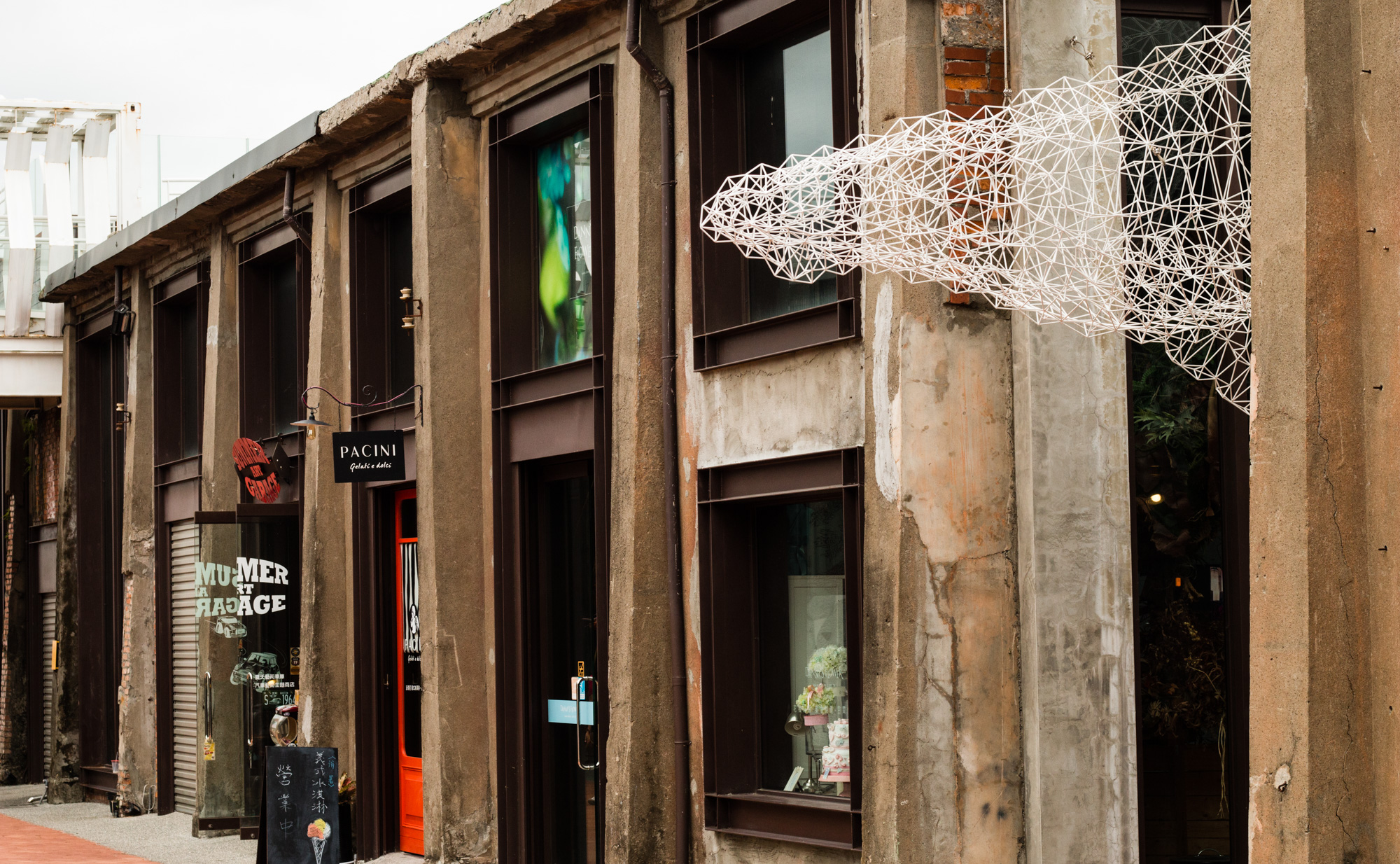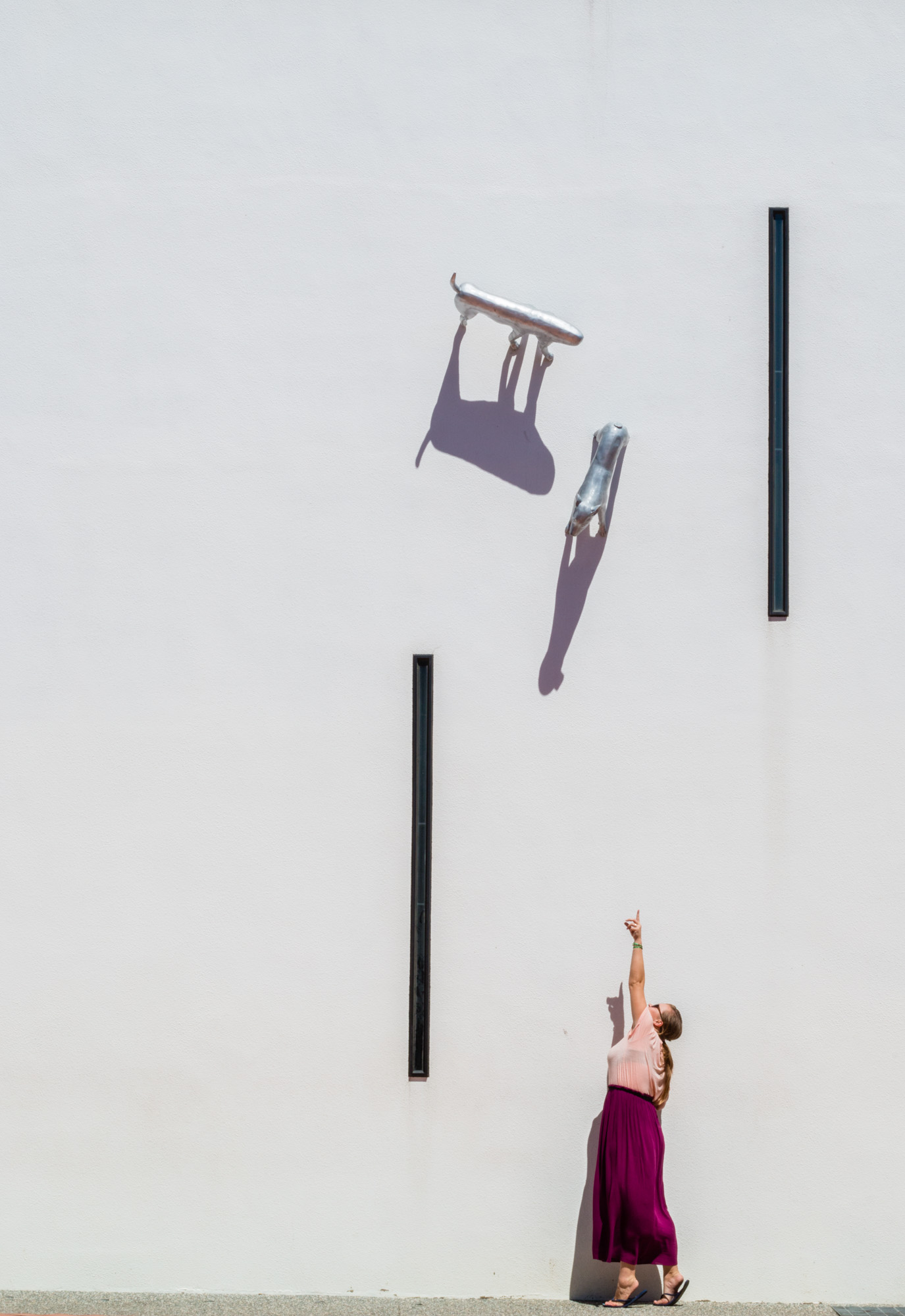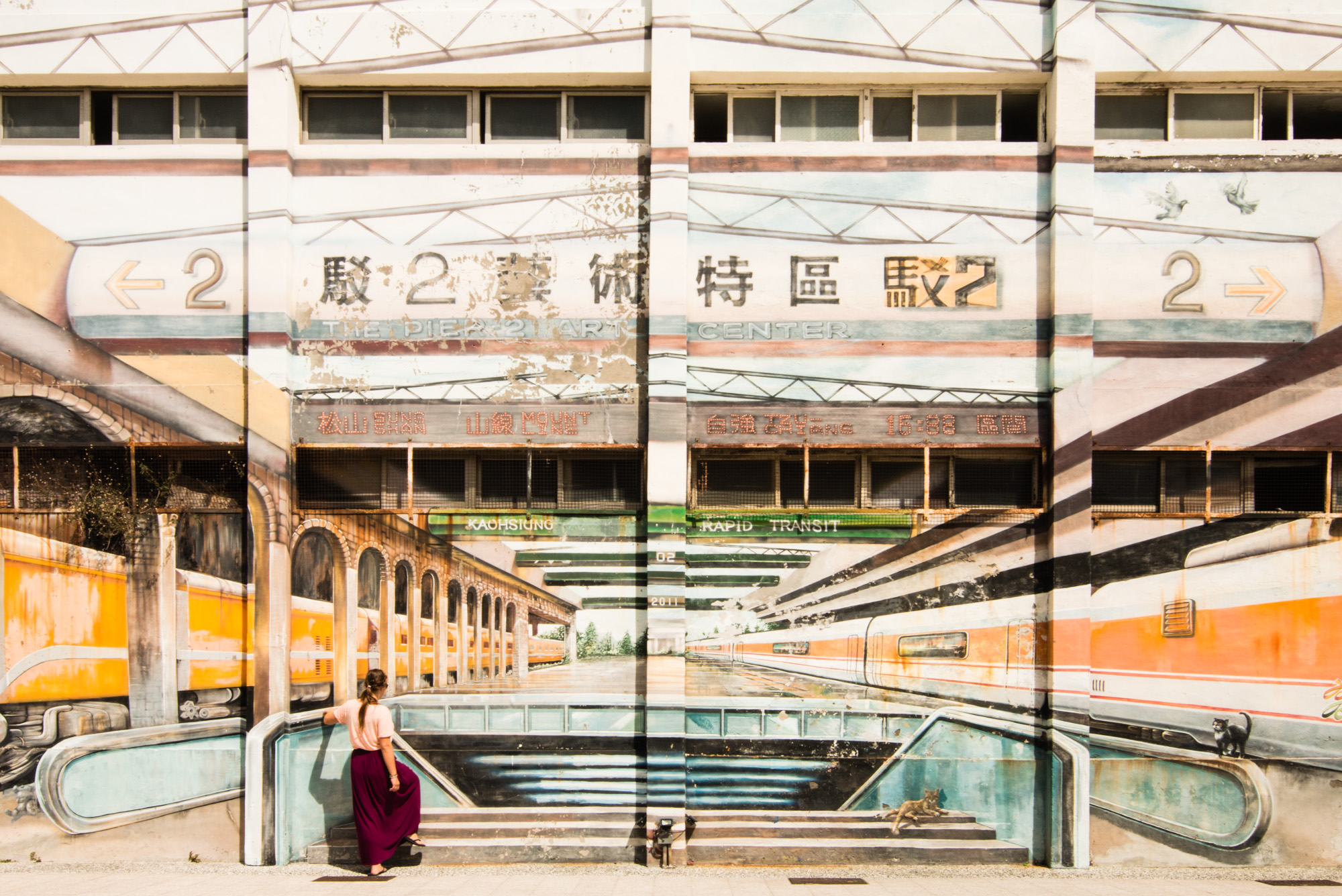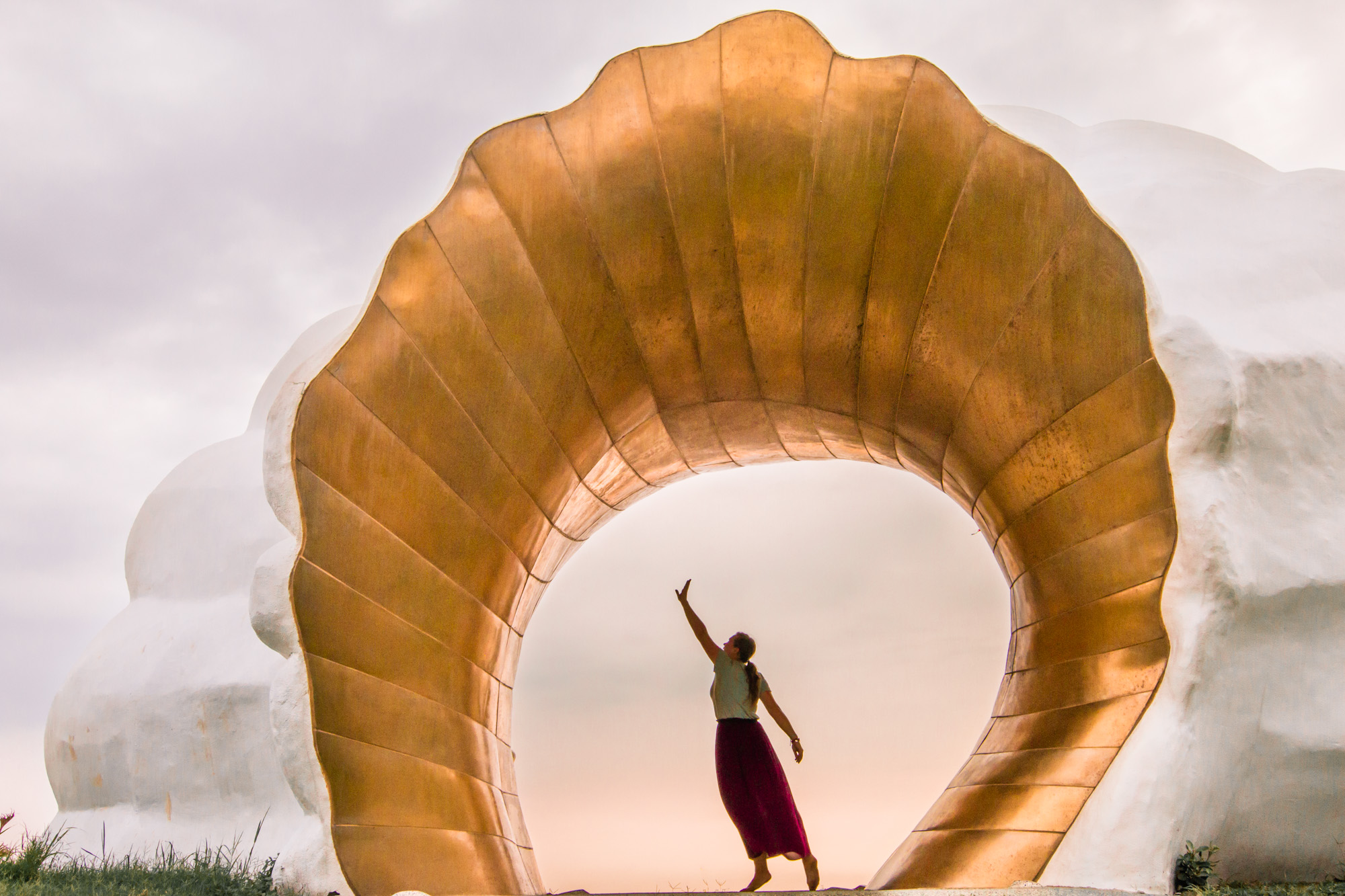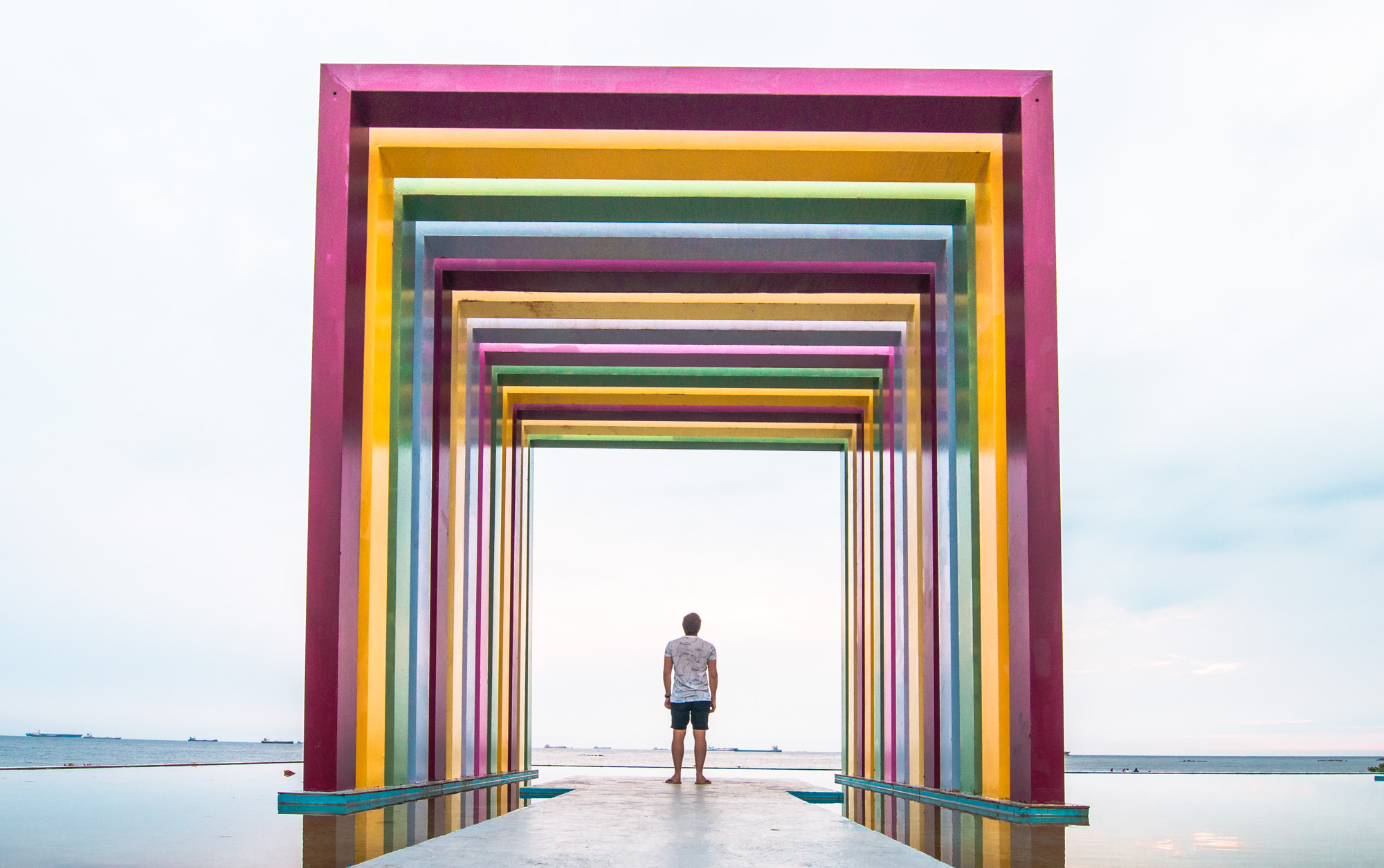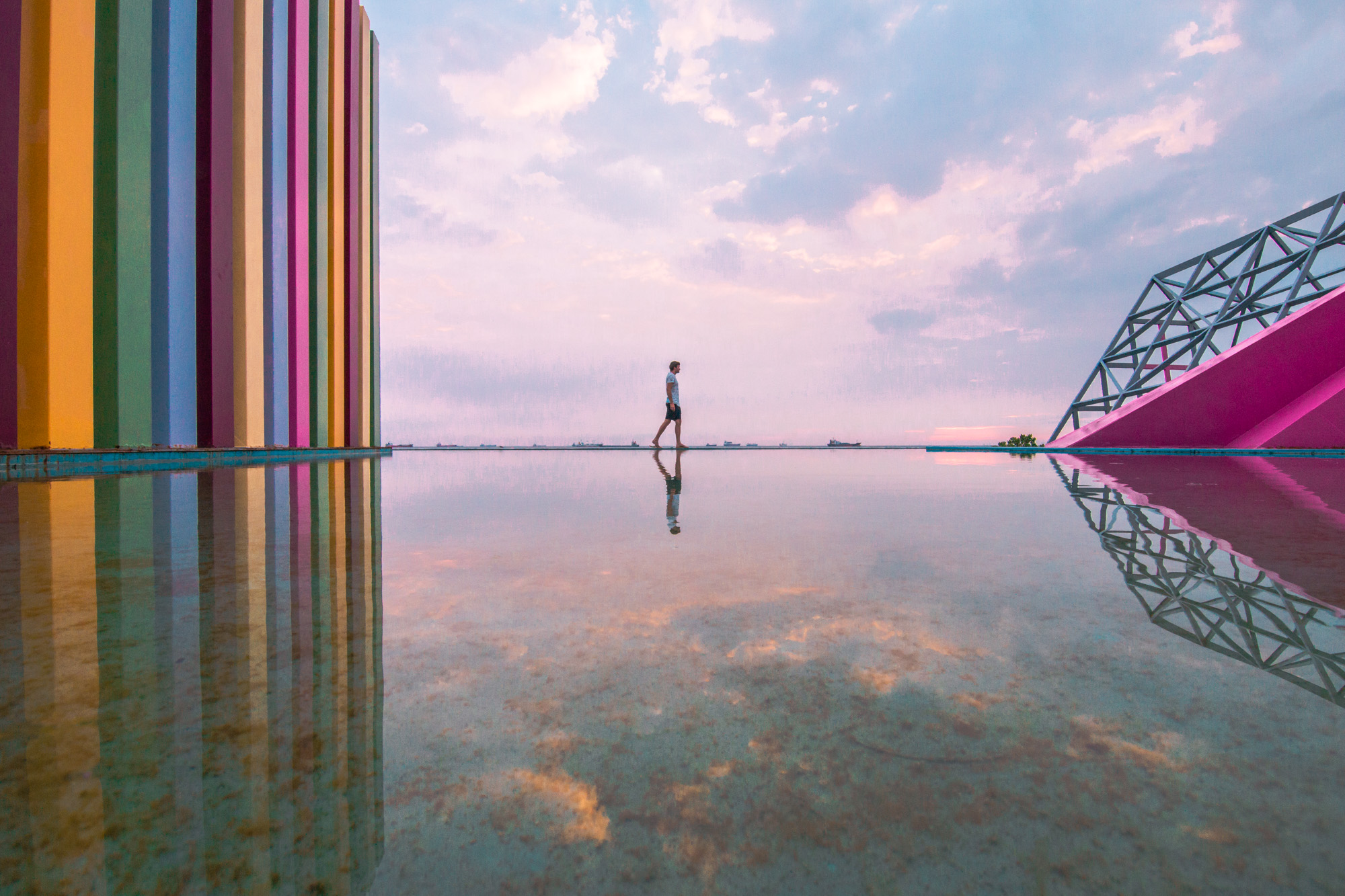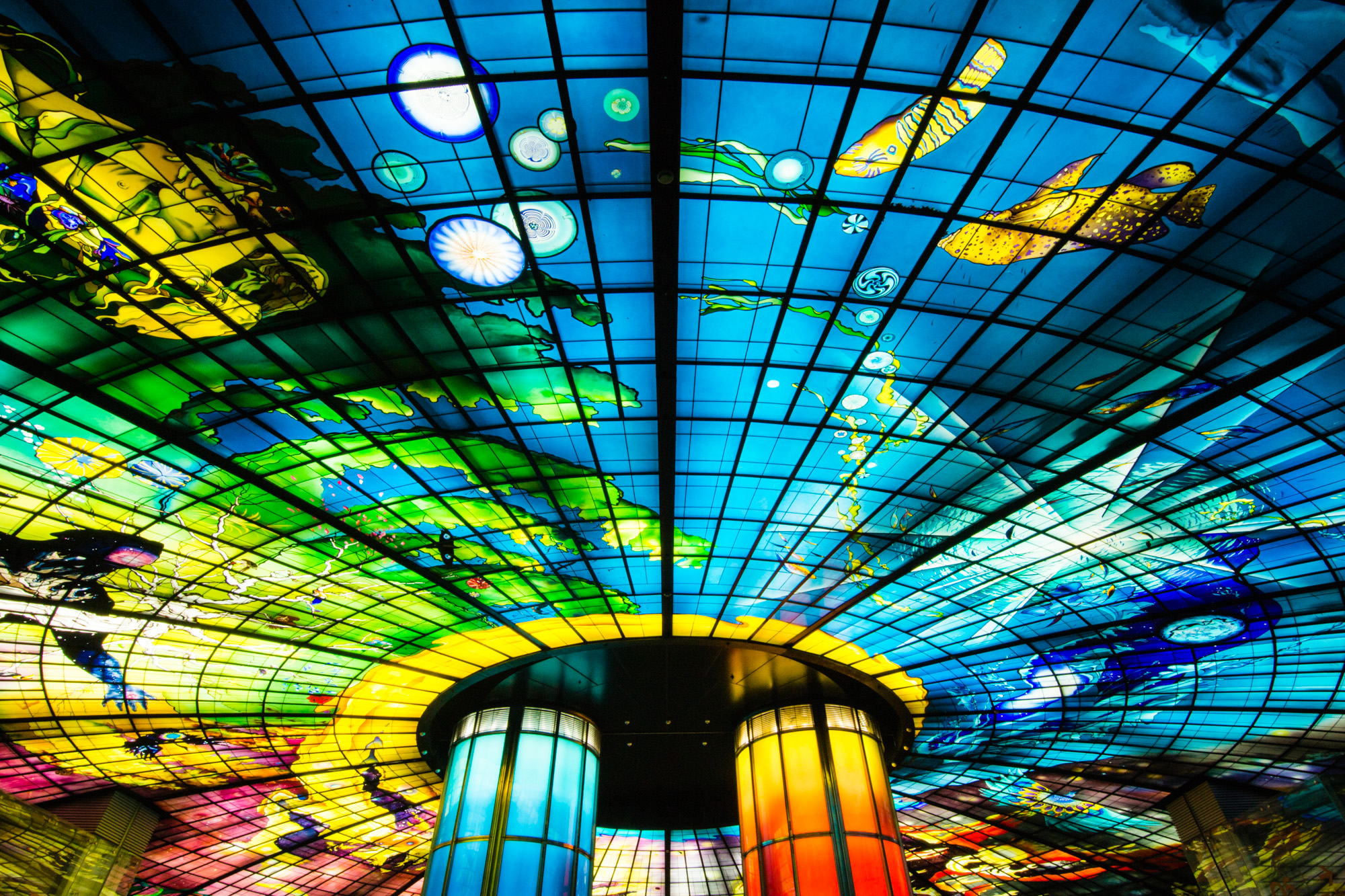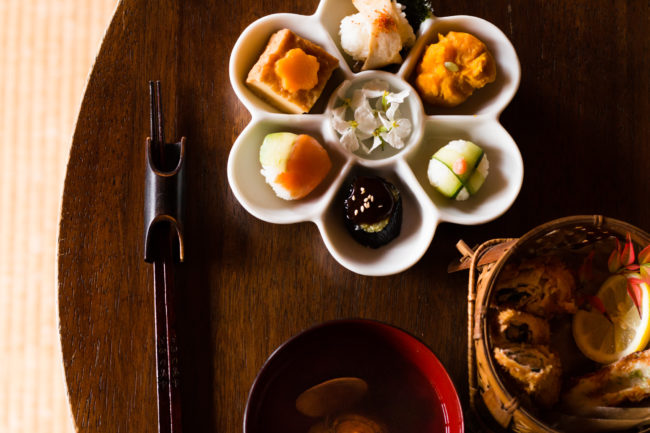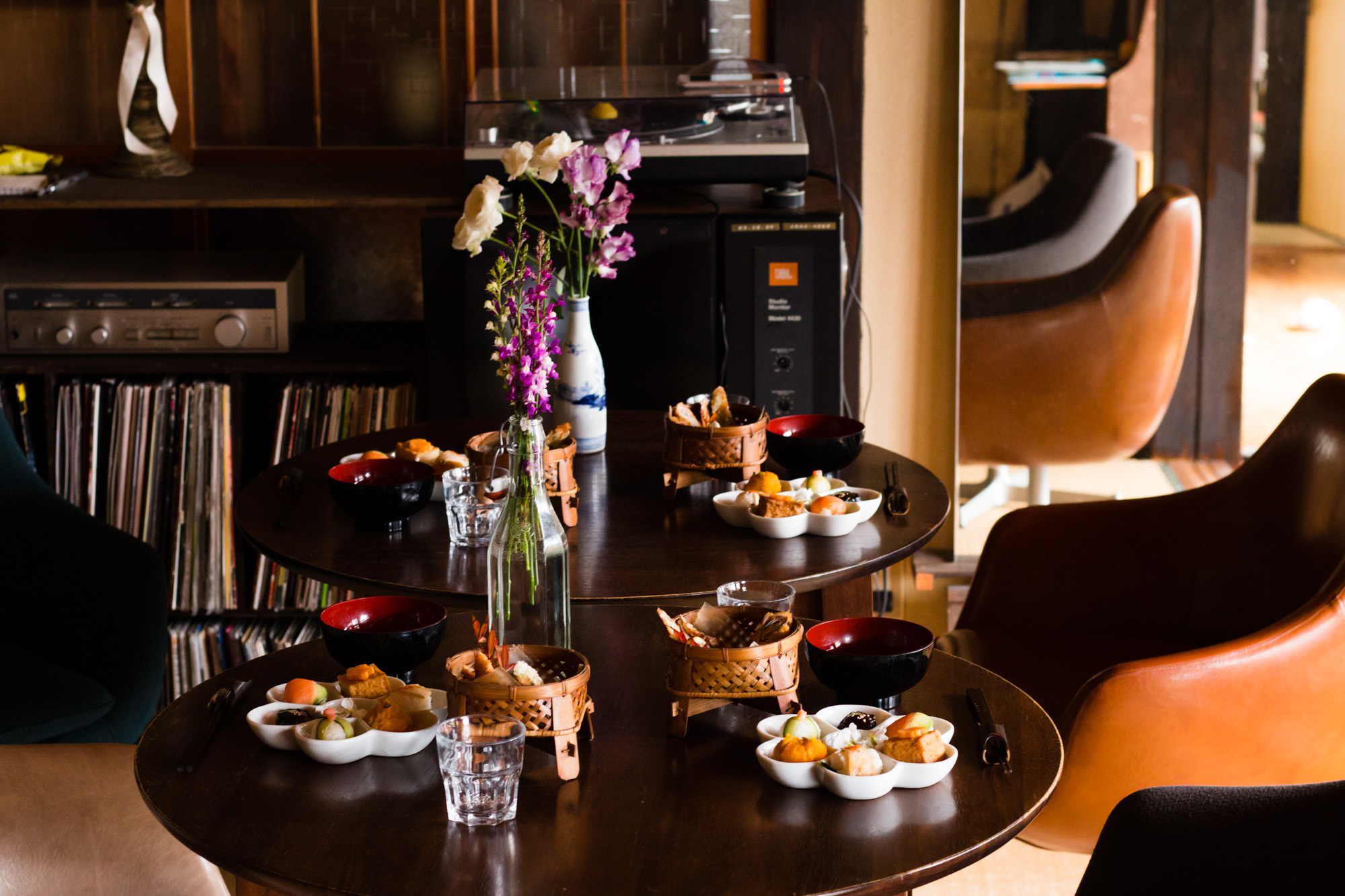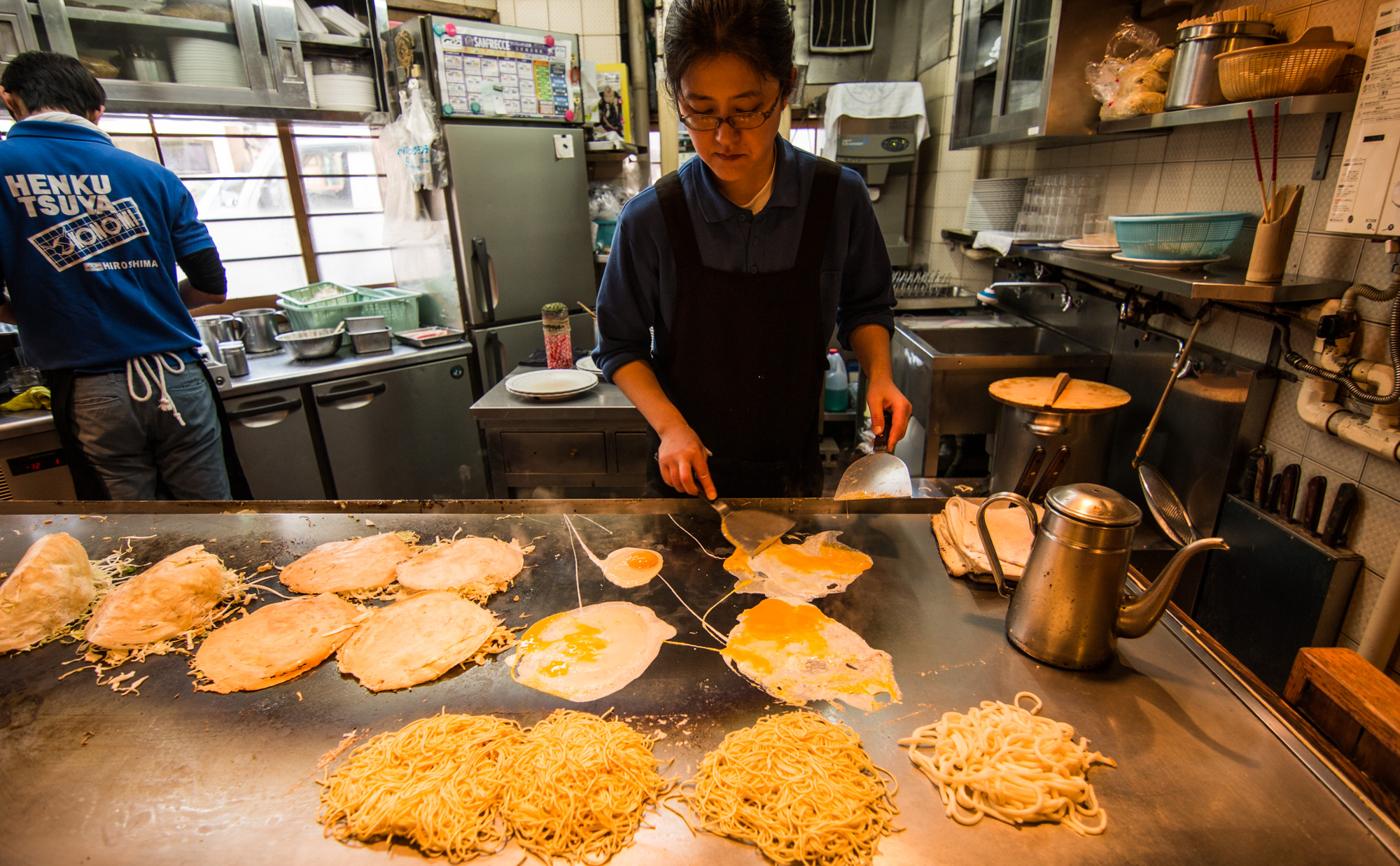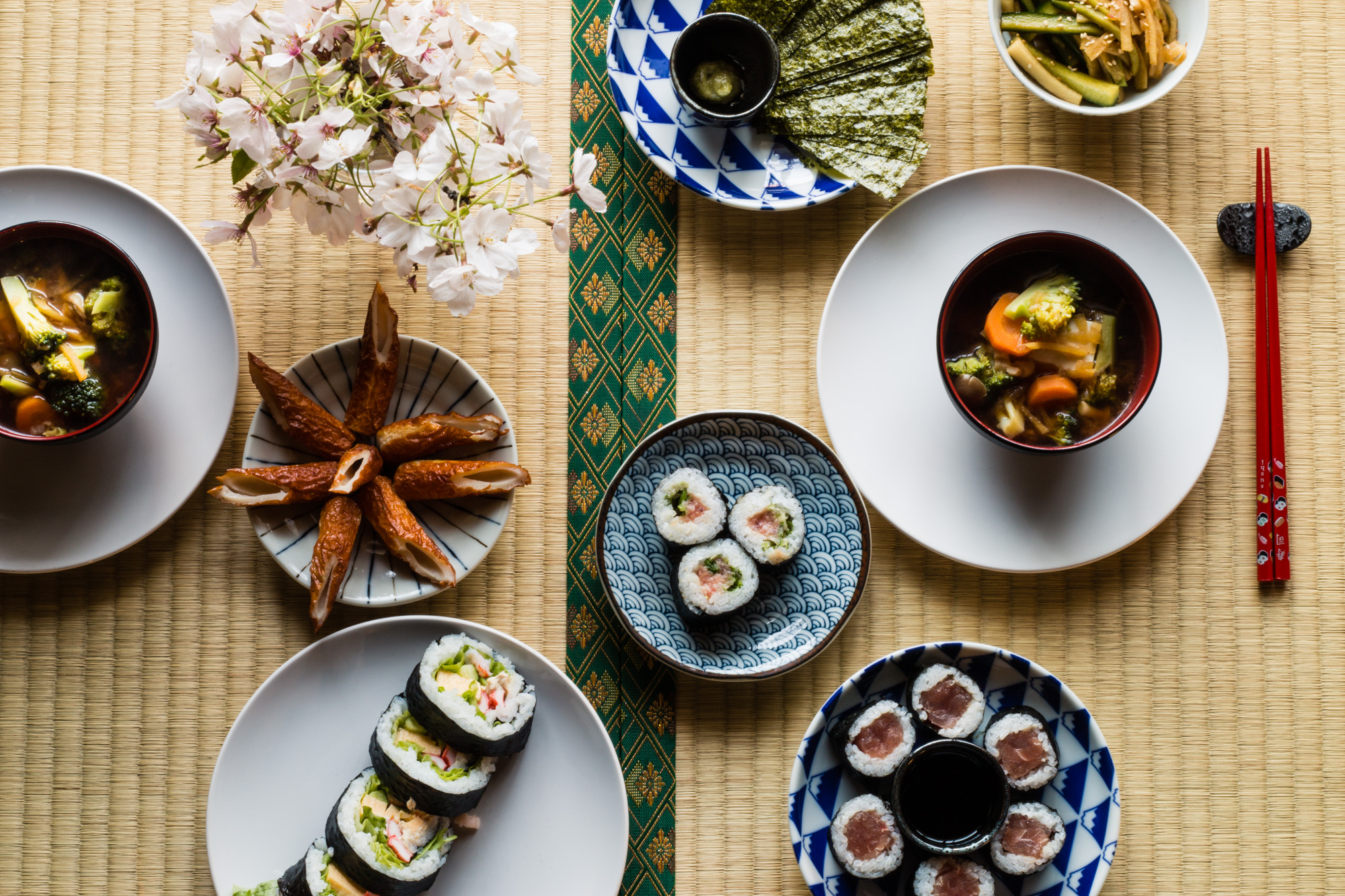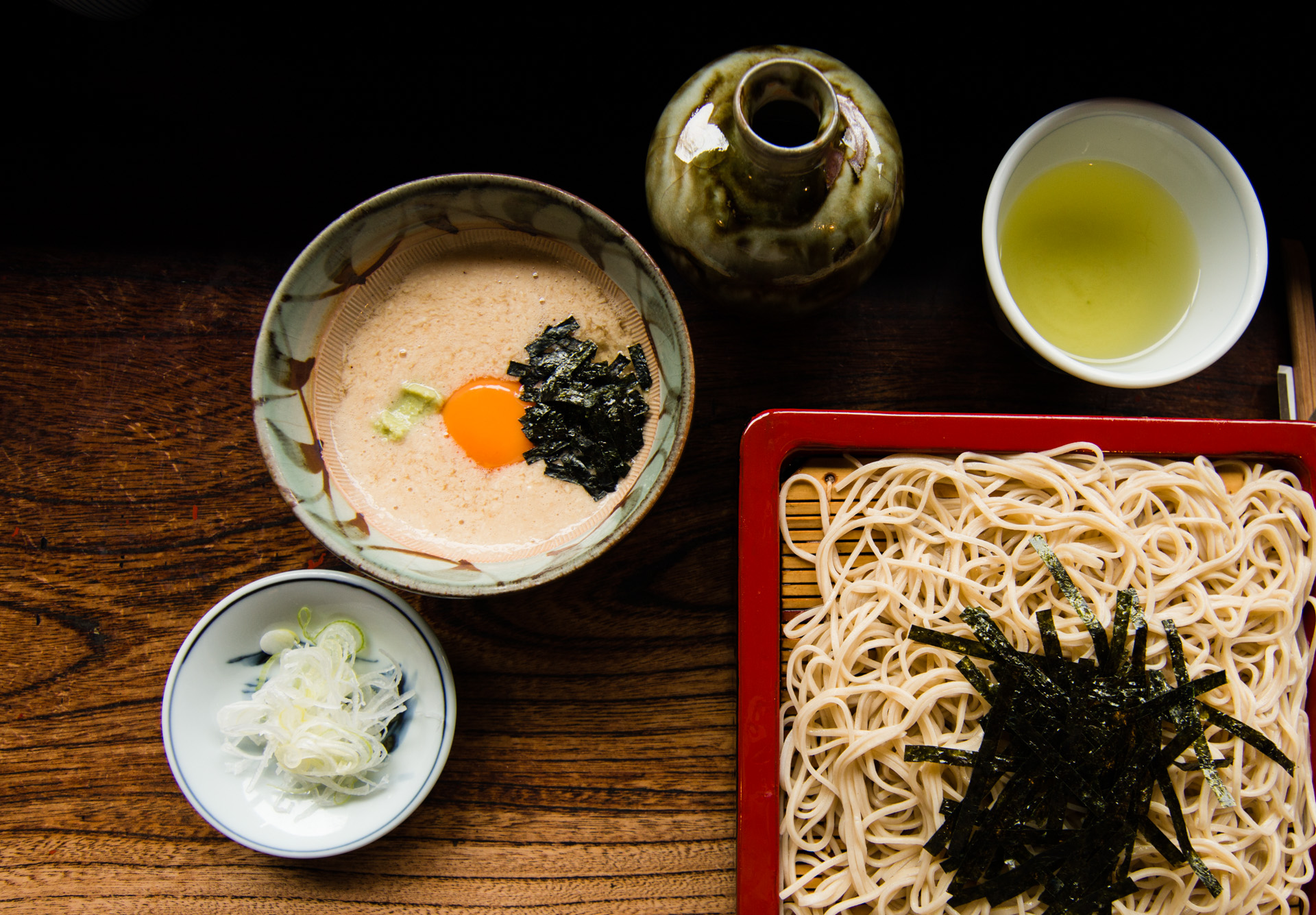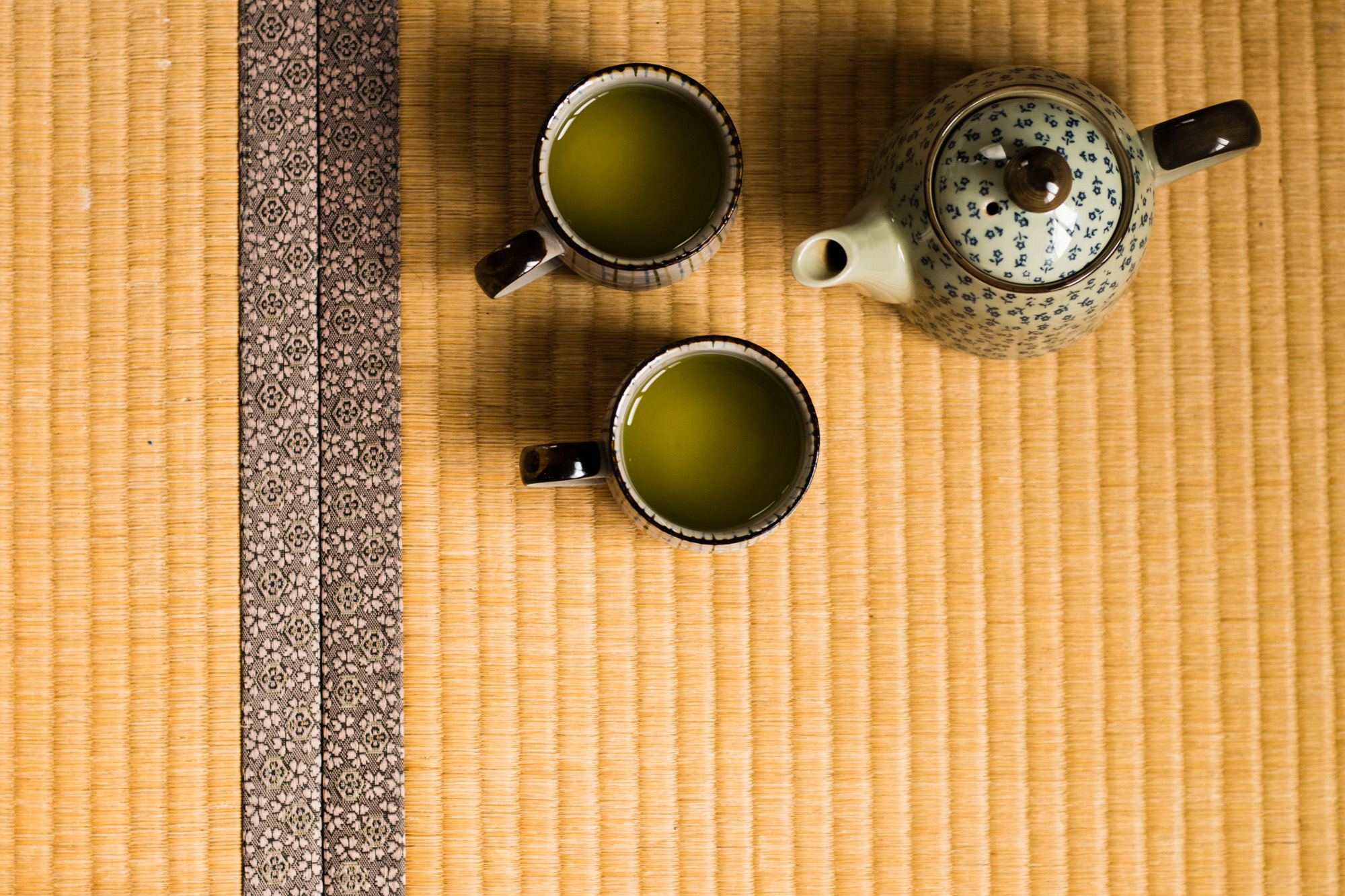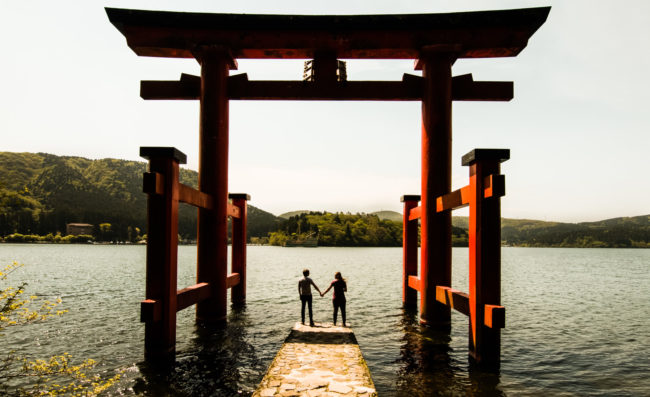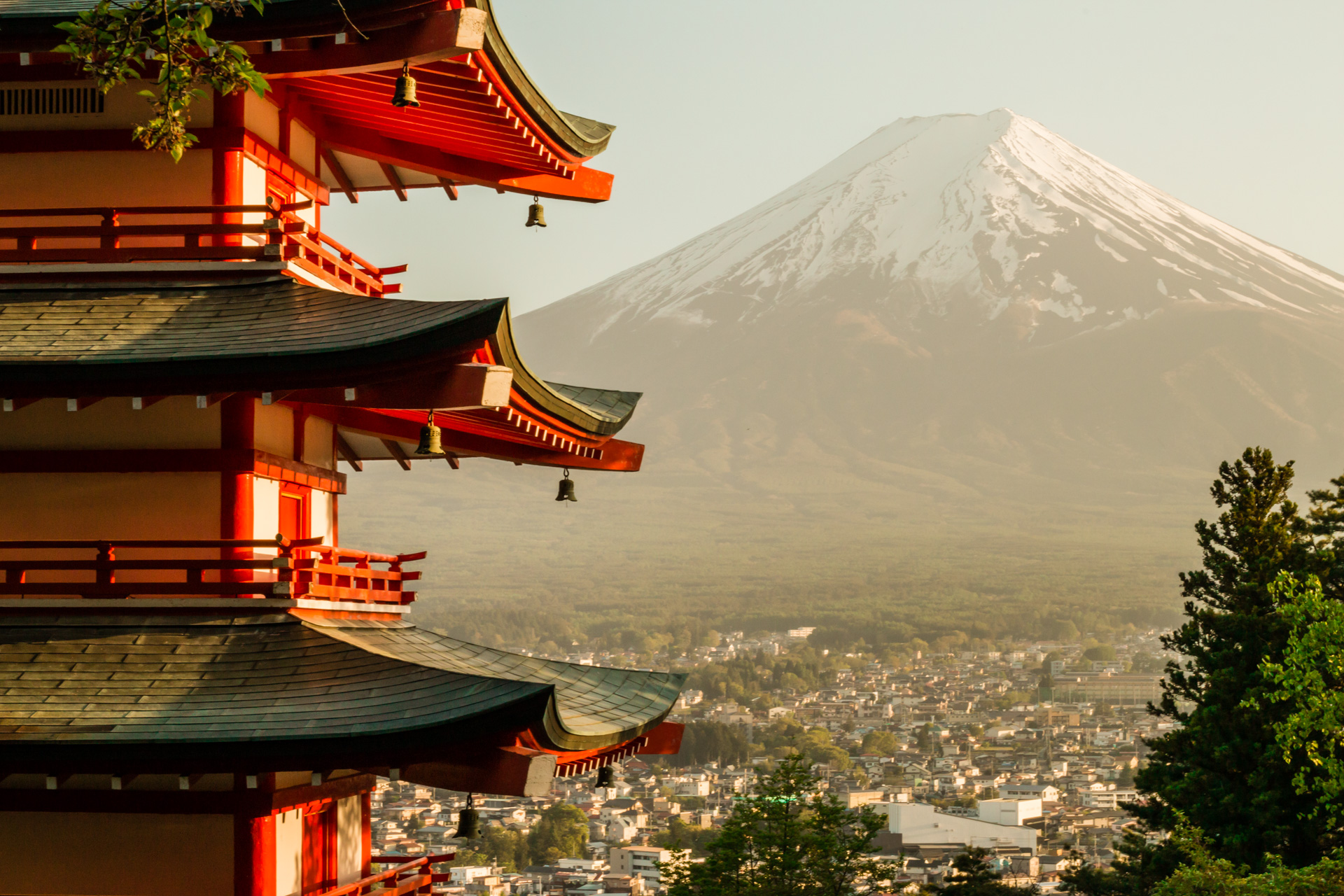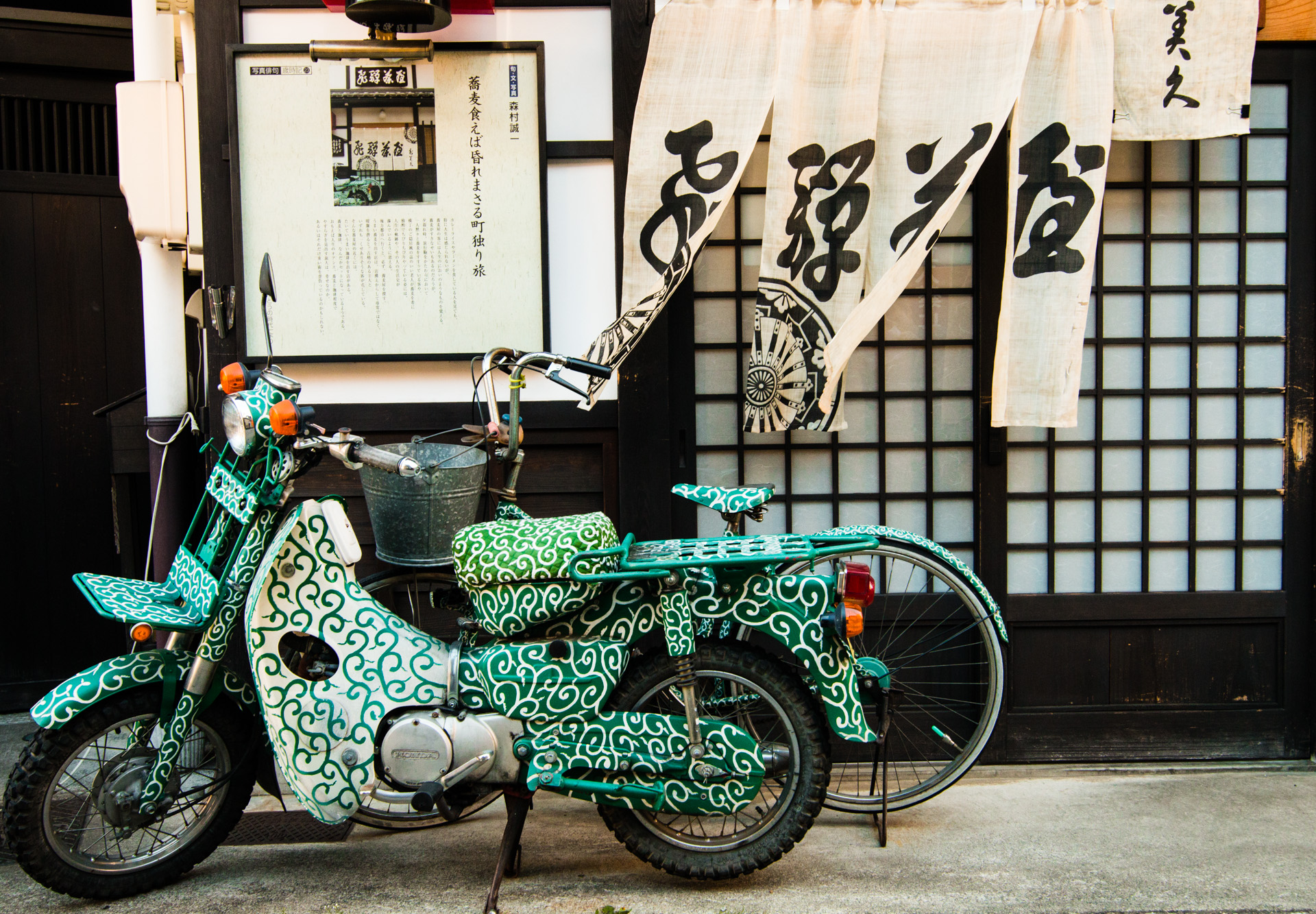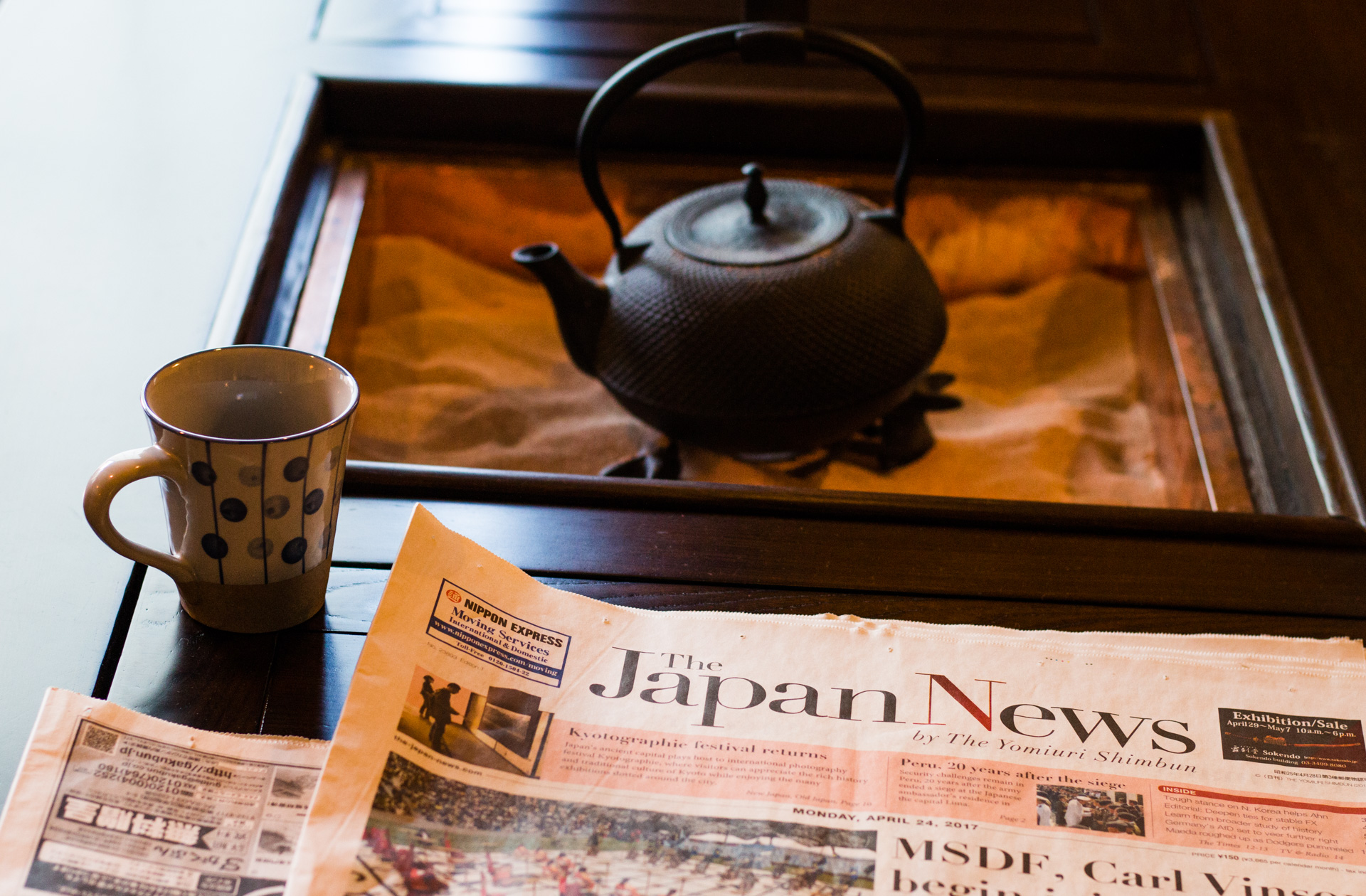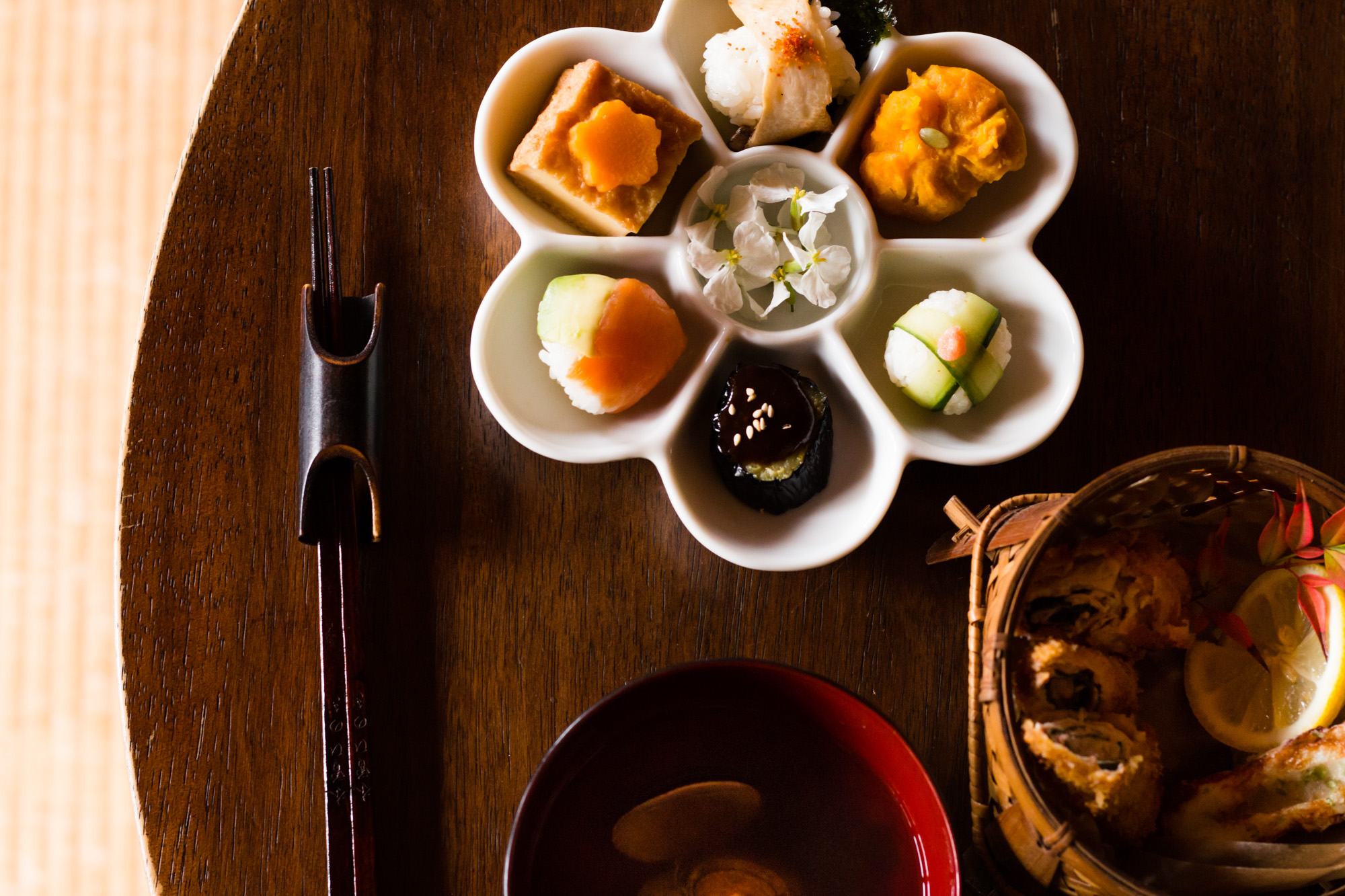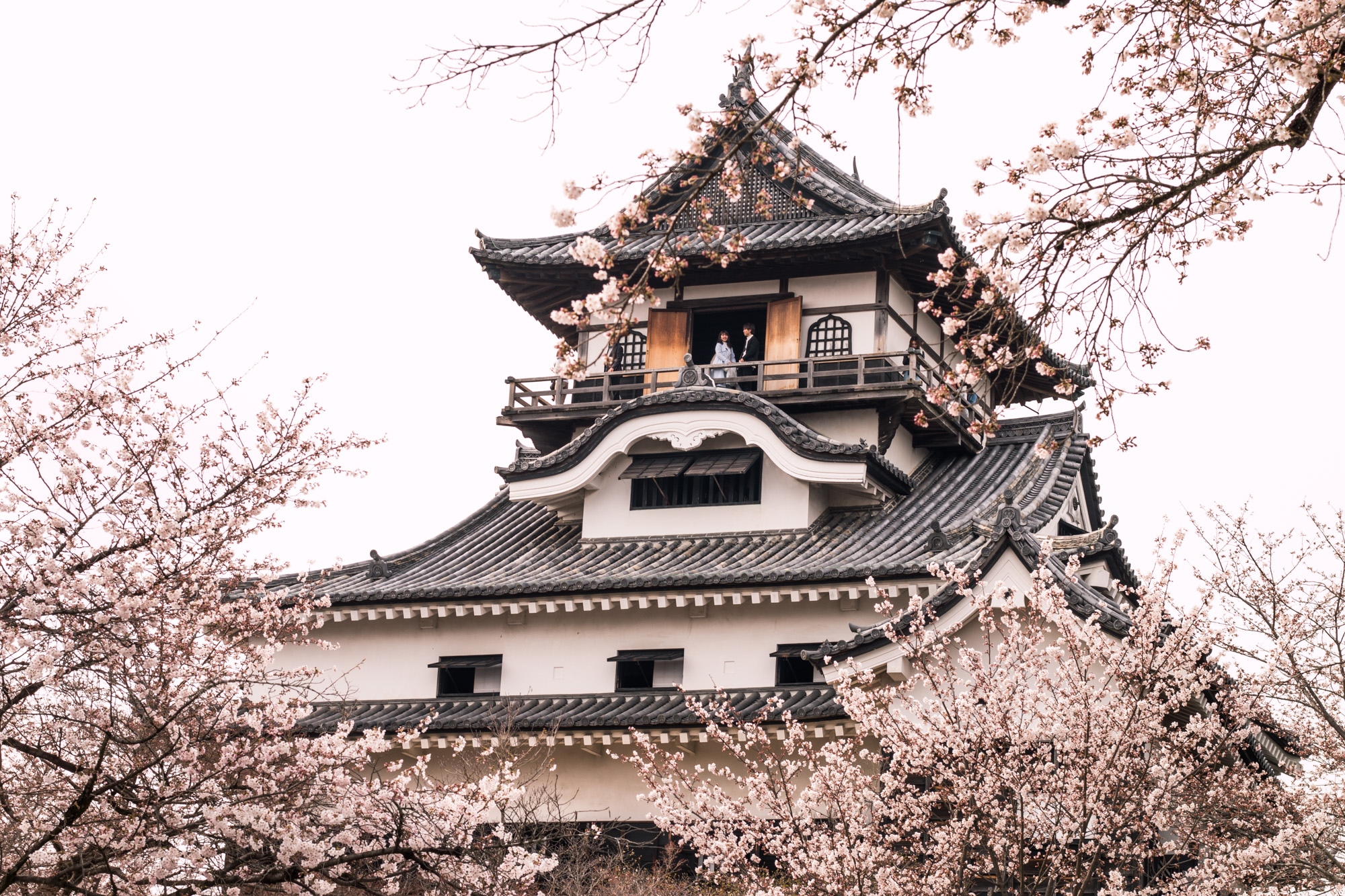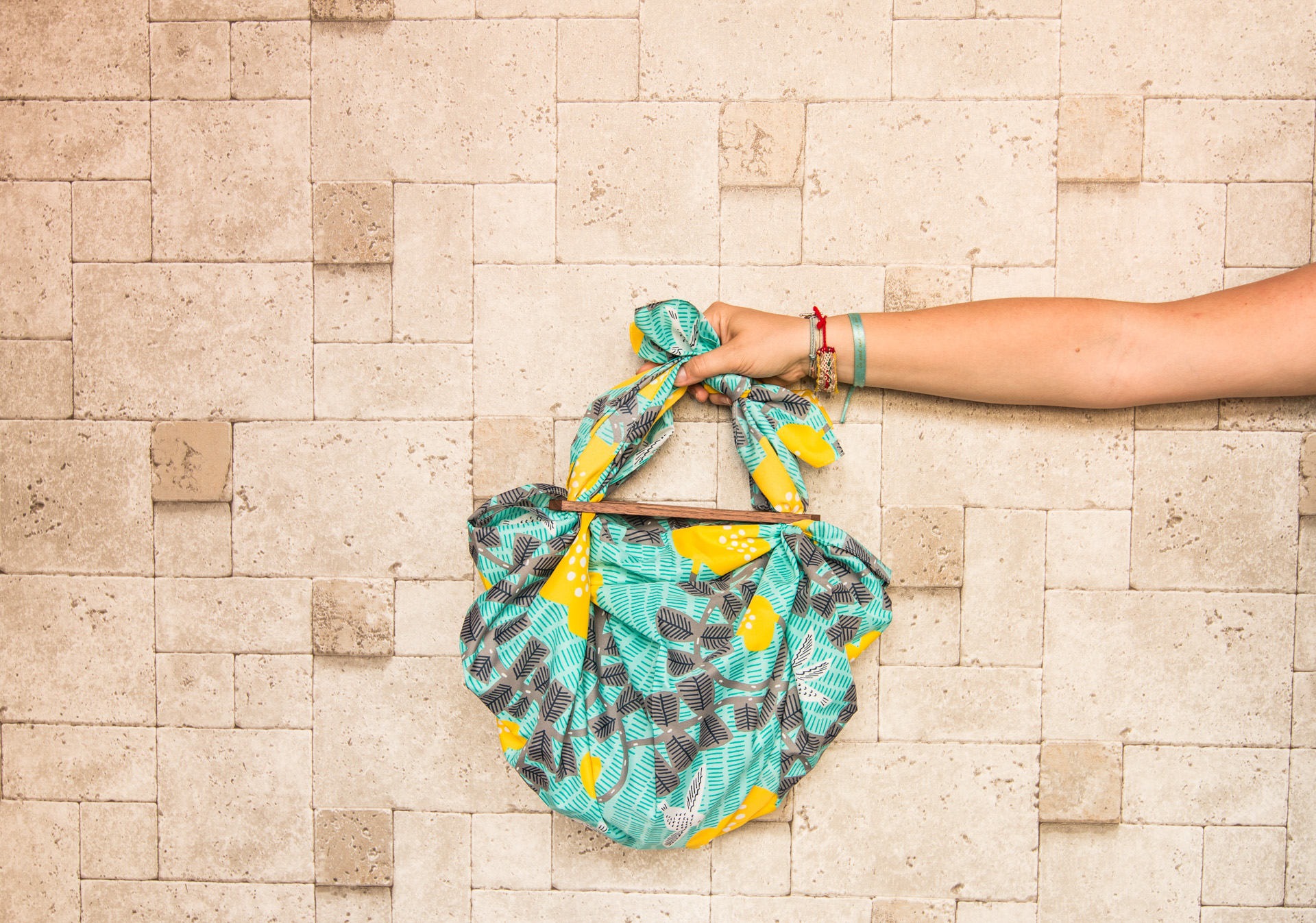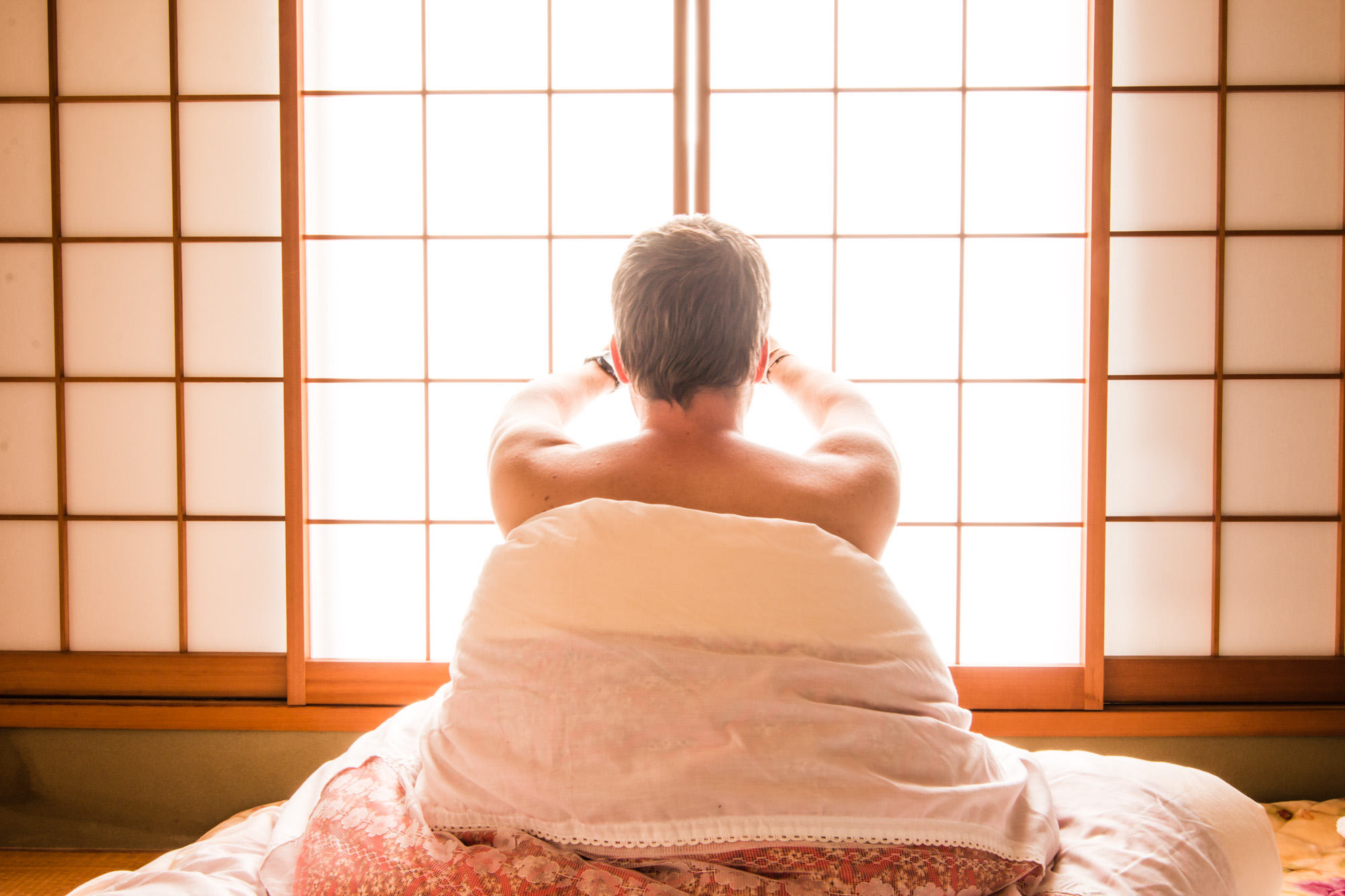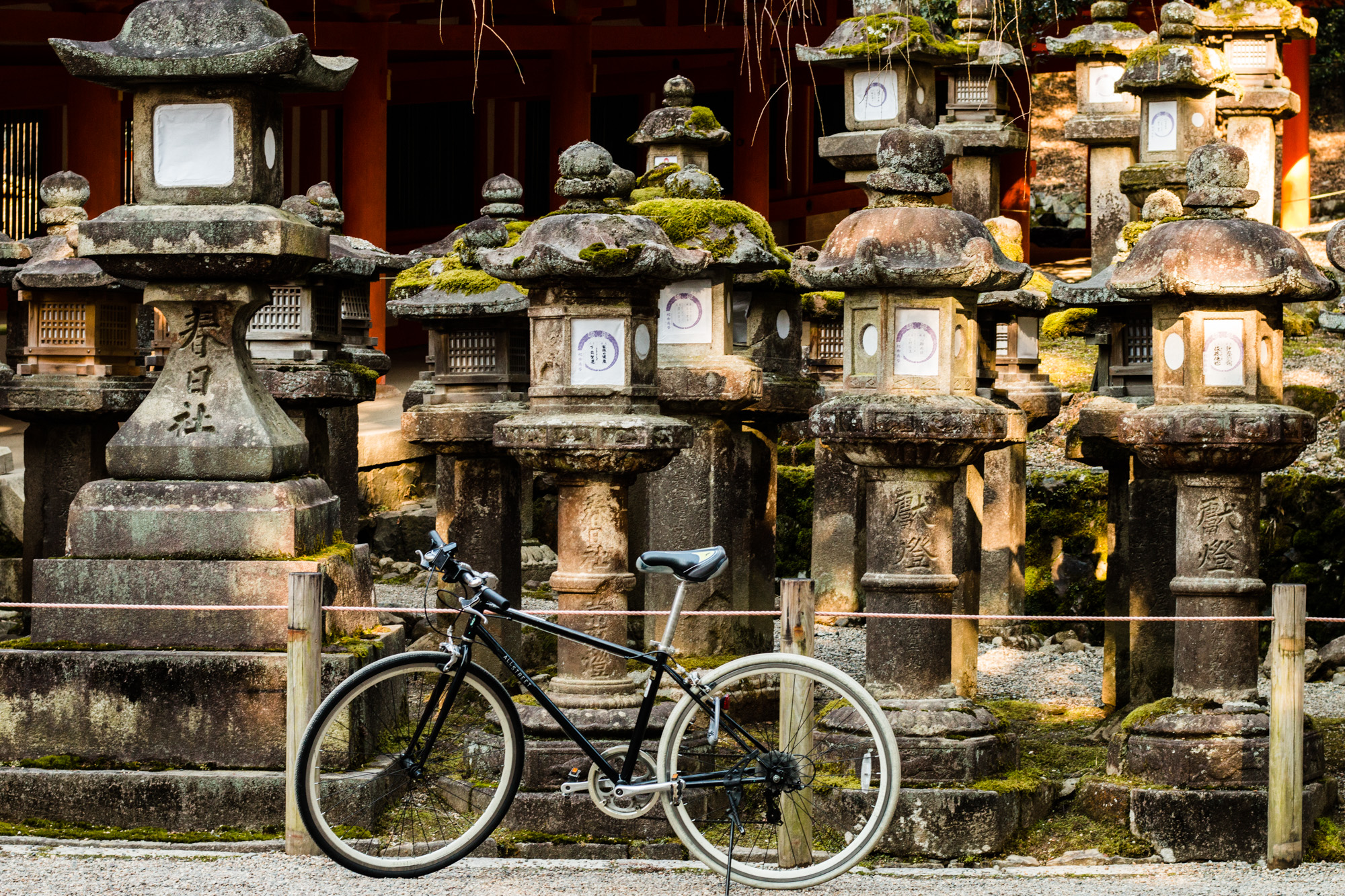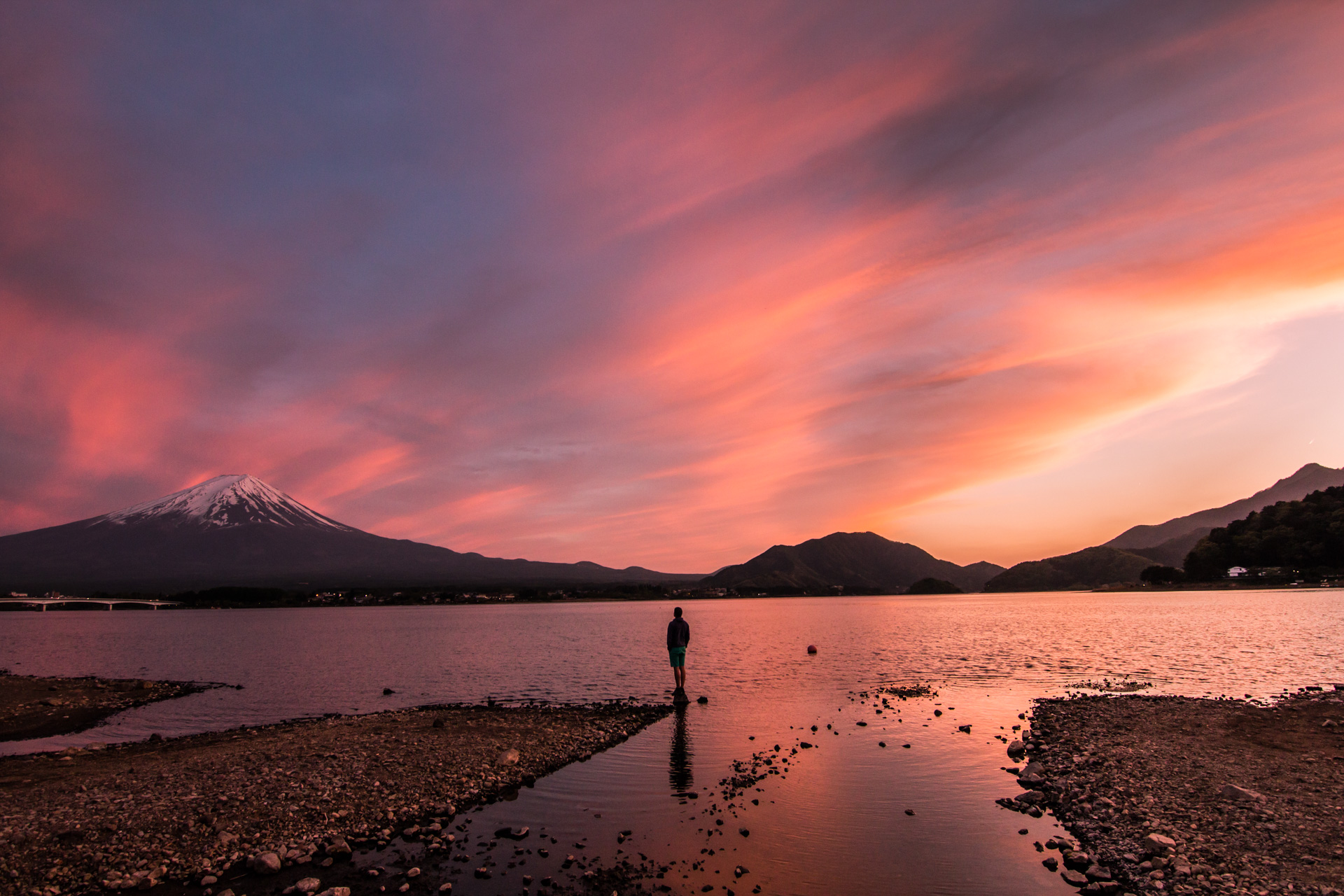Just when we thought Taiwan couldn’t get any more beautiful or green or mountainous… we went to Taroko National Park. Our jaws dropped once more.
The gorgeous Gorge
Taroko National Park is not too far from Hualien and a 2hr direct train from Taipei took us very close to the entrance of the park (Xincheng station). The biggest attraction of the park is a deep gorge carved by the Liwu River. It might sound not very accessible but it actually is. Serpentine roads carved in cliffs, tunnels digged in mountains and countless bridges, provide the most scenic route… and the most frightening at the same time.
By bike & on foot
Buses on Taiwan require a certain dosage of patience and those in the gorge even more. Renting a car was not really an option for us and in many spots it’s difficult to park it anyway. So we decided to explore a big part of the park by bike and the rest on foot.
For 800 Taiwanese dollars (around 23 euros) per person we got amazing mountain bikes with great breaks, helmets and sets of lights. Everything necessary to survive a day biking in the gorge. The price included also a drop off at the end of the route close by Wenshan spring, which meant we would be biking just one way and 90% down. It was a huge relief from a physical point of view because otherwise we would have to cycle up the whole time but also a challenge for our adrenaline. Going down on serpentine narrow roads, often looking over sheer drops from the cliff is not really an entertainment for everyone. With my vertigo I was both petrified and fascinated. As you can all imagine I forgot to take pictures on the most scenic/scary parts of the trip.
Having our own pair of wheels gave us the flexibility to stop wherever we wanted and enjoy few hikes on the way.
Falling rocks are not uncommon and sights and trails close because of them frequently. Sometimes it’s really difficult to check beforehand if something would be open or closed.
When we stopped at the Baiyang Trail and walked for 1.5 km to get to the water curtain in a tunnel, we were pretty disappointed it was closed because of the collapsing ceiling.
From there we went to the “main” village in the park- Tianxiang which is really just a few houses and not much more. It wouldn’t even be worth a stop if not for a convenient store… The only one in the park. We knew we wouldn’t see another one for at least half a day so it was a nice stop to buy some snacks and pour some caffeine into our bodies.
The village is also famous for an amazing hotel called Silks that has a very beautiful pool with views on the mountains. We heard it’s possible to have a drink by the pool there even if you’re not a guest.
Just leaving the village we spotted a beautiful temple with a pagoda (Xiangde temple) above us on a mountain. We were hoping to get some views over the surrounding mountains but it turned out to be pretty covered by trees. Still the temple itself with statues and the pagoda was quite a treat and we would definitely recommend stopping there.
Next stop was Lushui Trail, a very pleasant walk in a forest that turns into a scenic walk along the cliff with views on the gorge and the road stretching underneath.
Few bridges, tunnels and cliffs later we reached the most beautiful part of the park Swallow Grotto. It’s practically a road that has been overtaken by pedestrian tourists floating out from tour buses. It’s 1.5 km of tunnels, arches and gorgeous views of the valley. The name came from thousands of swallows’ nests that are literally in every tiny cave carved by the water.
Not far from the Swallow Grotto is the beginning of the Zhuilu Old Trail. Originally it was a part of a mountain pass built by the indigenous and used by the Japanese in later times. Now it’s one of the most famous trails in the park. Unfortunately it requires a permit and the number of people allowed to enter it is very limited. We were very disappointed to find out the permits were gone for our days. But also a bit relieved we had an excuse not to face our vertigo in there. We saw some pictures of the hike and we knew the main attraction was a walk along a cliff 800 m above the river with a sheer drop and not a single railing to keep us away from that edge… Not to mention there were also some vine bridges involved and Jandirk had enough of those for a long time even without that trail 🙂
From Swallow Grotto we went to the main sight that brought us to the park in the first place… Eternal Spring Shrine. To our disappointment it was covered in scaffolding that made it impossible to see it in full glory. It was actually much smaller than I thought… And the whole trail to the temple was closed which left us with nothing more than an afar view…
That also meant that in order to see the Changguang Temple and the bell tower we had to go back a bit and cross another vine bridge. In saying that, the views from the bell tower were absolutely stunning and one of a kind. Unfortunately the bell is very much in operation and every tourist wants to bang on it at least once. Which spoils the peace every 5 minutes…
Other interesting sights
Just at the entrance to the park there is a scenic, 4km walk (Shakadang Trail) carved in the cliff that is very family friendly and very popular. We loved it because it gave us an idea of what the park was about without any fear as the paths are wide, easy and with a railing. The only danger that a western can face in there is to forget to bend… the trail was carved in stone for Asian size tourists. And giant spiders that are omnipresent on all the trails everywhere in the park. But that shouldn’t have surprised us, all the insects on the island are super-sized…
Except for cliffs, the trail offers amazing views of crystal water, lush forest and plenty of spots to chill out and enjoy the views. Even better, in the middle of the trail there is a shop with aboriginal sausages that are just delicious!!! Not to mention their cold, fruity mulberry juice… We literally had 4 cups of it.
From Shakadang Trail, it’s nice to enter a very short Xiaozhuilu trail that took us back to the entrance of the park. It obviously features another vine bridge. Since there are not many people walking there the density of spiders per meter is even higher than anywhere else.
Although most people associate the park with mountains and forest we had a lovely beach just next to our guesthouse. It was very clean, calm and peaceful. Every sunset we went there for an amazing spectacle of clouds and colors. And for some downtime with a book.
Talking about water entertainment we actually stumbled on a hidden gem a short walk from our guesthouse. Crystal clear water, rocks to sit on, trees for some shade and food stands, sounds like paradise right? Since it has no name and it would be hard to just google it, we put it on our map below 🙂
Where to stay?
Taroko has limited options when it comes to accommodation. But what there is, is very good. Silks hotel is obviously the top notch, splurge option. But there are plenty of guesthouses run by the indigenous community. We stayed in Taroko Railway Authentic B&B that was very close to a convenient store and the beach. It was beautiful and the rooms were charming and had an amazing view on the mountains. The family that runs the business didn’t speak English but was very enthusiastic and keen on using google translate.
Except for hotels and guesthouses there are also few campgrounds so a tent could also be an option.
How long does it take to explore the gorge?
I think two days give you a fair idea of the surrounding. But if we knew what we know now we would definitely come for longer and go further exploring some multi day hikes.
Hikes with permits
Honestly before coming to the park we were not fully aware of the number of hikes we could do. The information online was not very clear and only when we arrived it turned out that there were multiple amazing hikes that we could do… with a bit more organization beforehand.
Zhuilu Old Trail is really the first and most famous option but there are many others like Chilai mountain hike or Datong trail. All of those require permits and some are multi- day hikes. Depending on the route rules change. So for some you can apply for the permit in person for others you have to request it beforehand online or even go to the police office…
